Photos by Mach1Media
We know what you’re thinking—while it may be a very clean looking 2006 Dodge Ram 2500, since when does Diesel World feature stock-ish trucks? Well, we don’t; and despite appearances, this beautiful Ram, owned by Daniel Hargrove, is anything but stock. In fact, as “factory” as it may seem, this truck not only competes, but also stands out at Outlaw Diesel Super Series and Ultimate Callout Challenge events, not to mention puts up some seriously steep competition at local dyno events.
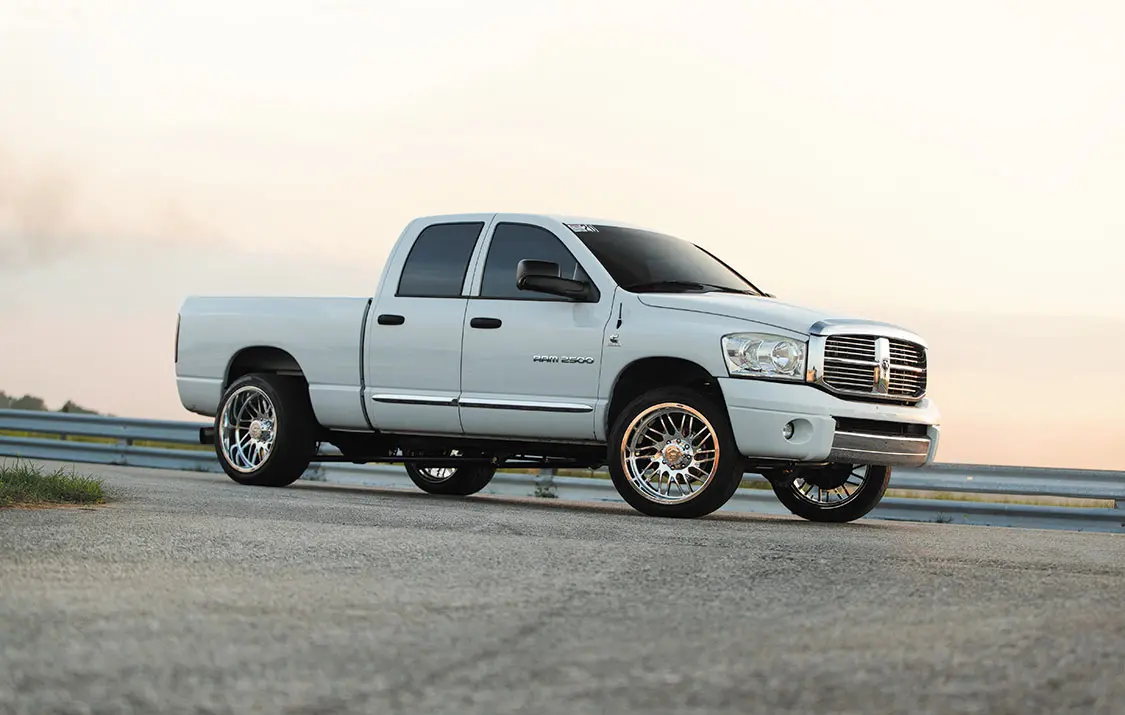
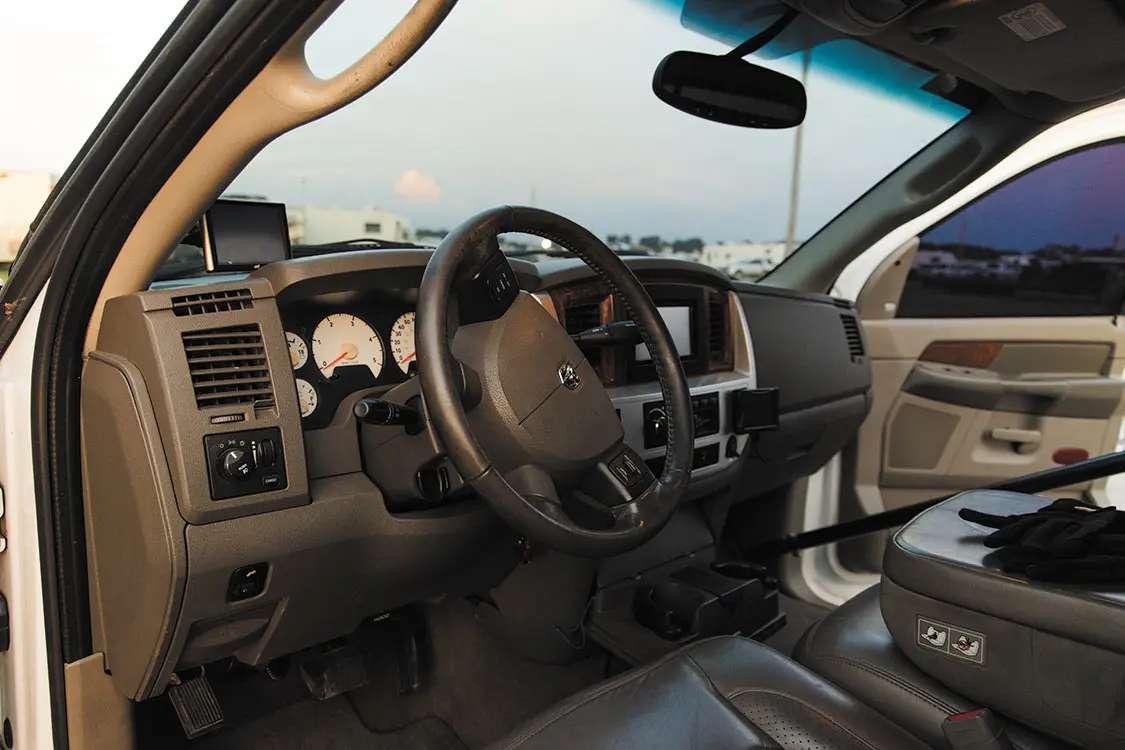
Haling from Charlotte, Tennessee, Daniel works as a diesel mechanic, giving him the ultimate platform to know the ins and outs of diesel performance. And what better way to show your prowess and passion in the diesel world than to build the ultimate street and strip sleeper?
With the help of a number of diesel-pro buddies, Hargrove was able to put this rendition of his truck together in just 6 months, but the build has been a never-ending project.
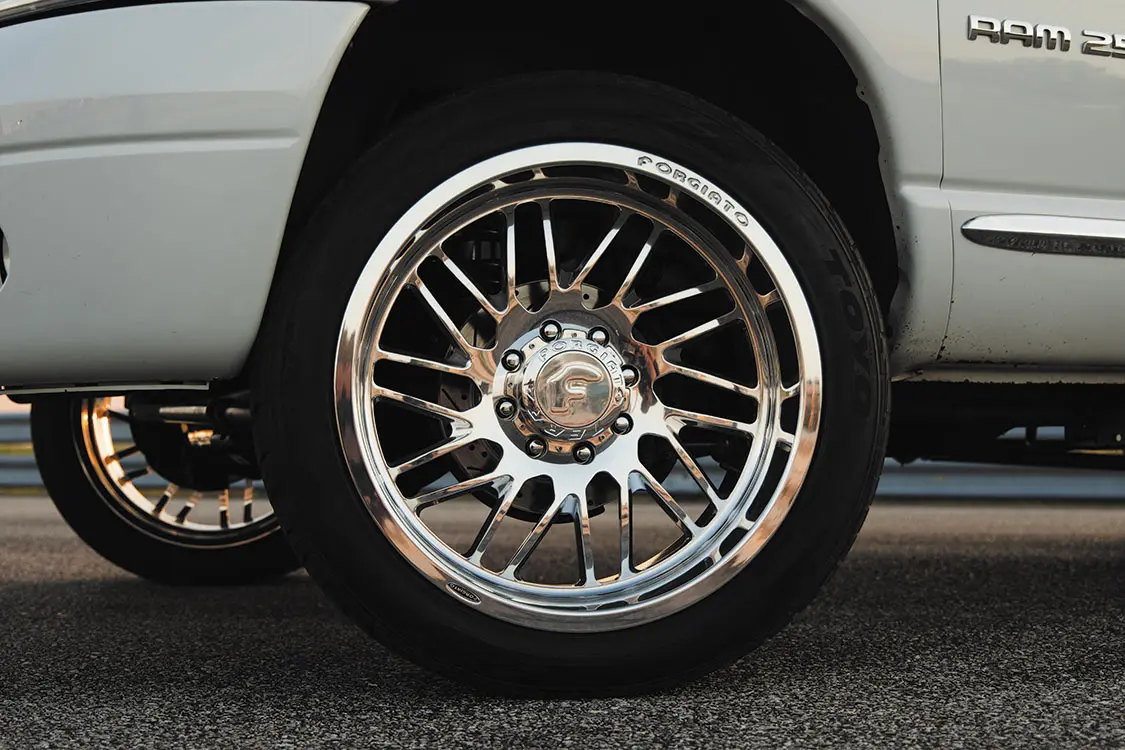
“I purchased the truck in 2017 – bone-stock, one-owner, old-man truck,” Daniel told us. “Within a month, it had a Comp 48RE, 200 percent-over S&S injectors, a dual-pump kit, and made 900hp. I drove and raced the truck like that for four years and had a blast.”
Now, 900hp may sound like the tip-top of performance for some, but after four years of competing below the 1K threshold, Daniel opted to elevate the truck’s game considerably.
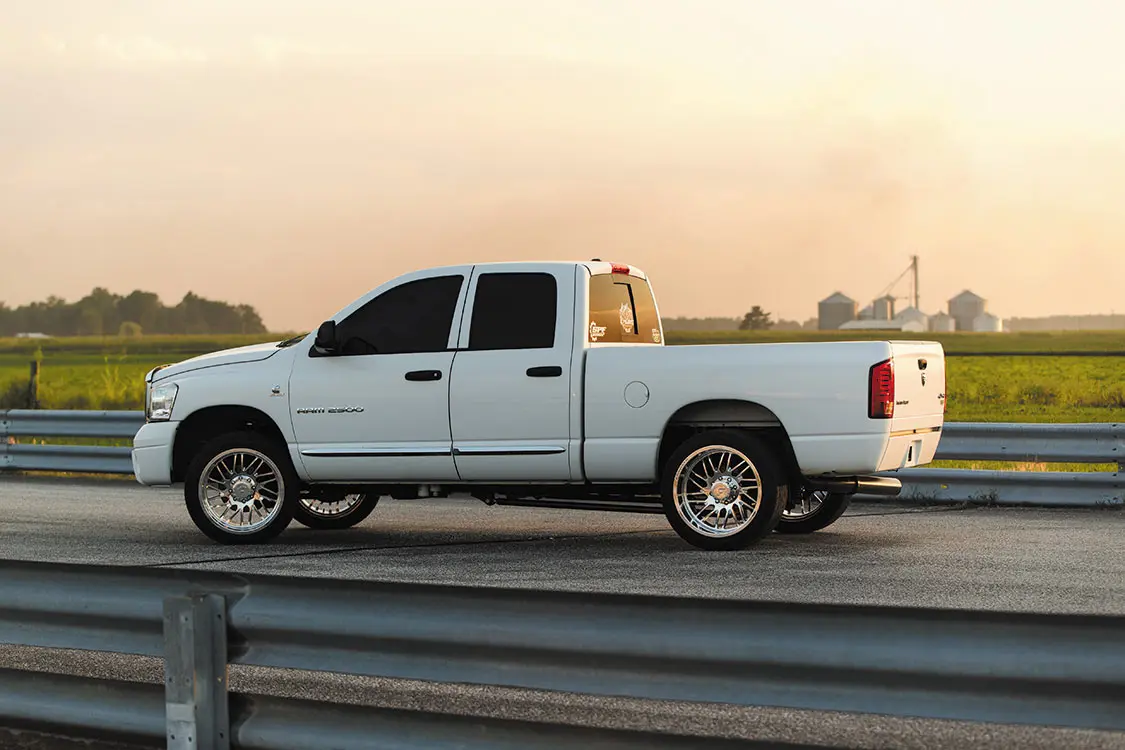
Putting massive amounts of power to the pavement is the first objective of any competitive diesel, and Daniel accomplished this for his truck starting with a swapped 6.7L Cummins inline-six. On top of that sits a large single S485 turbo from Stainless Diesel pro Johnny Gilbert.
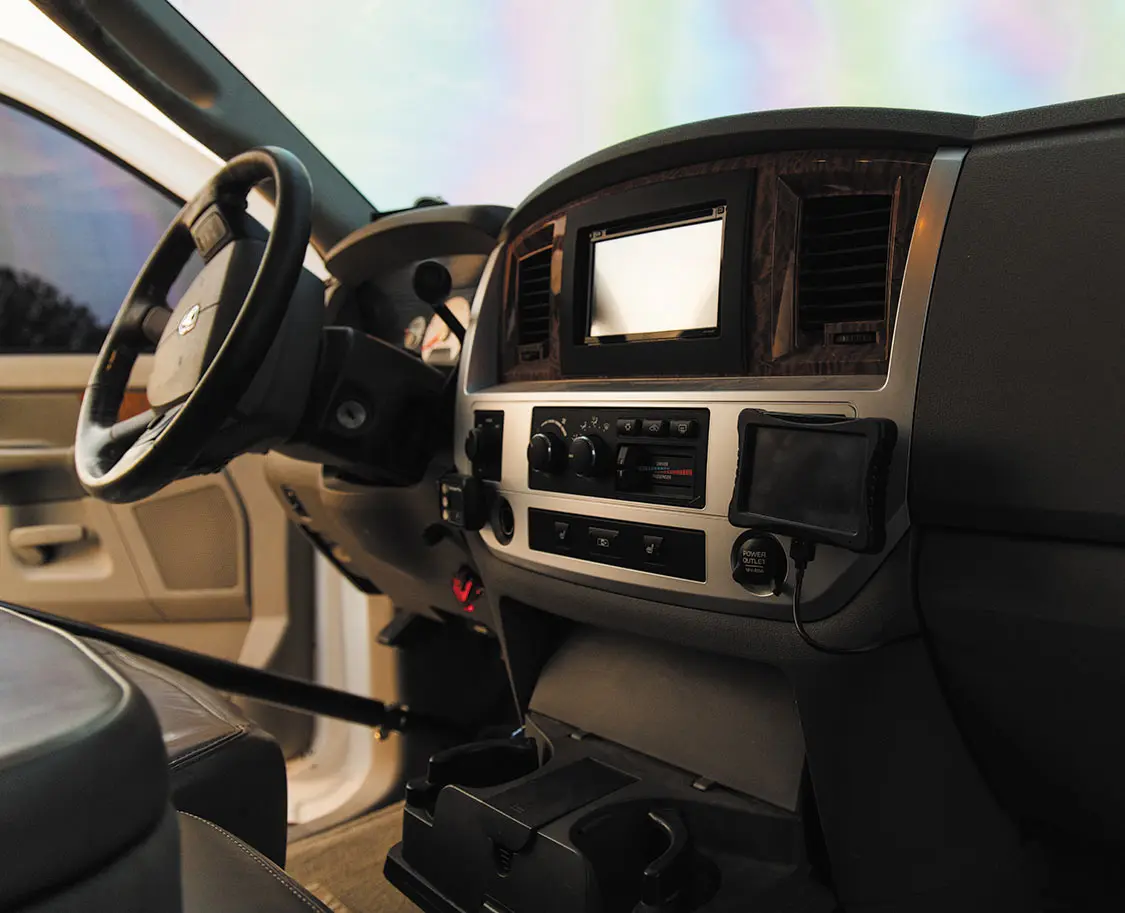
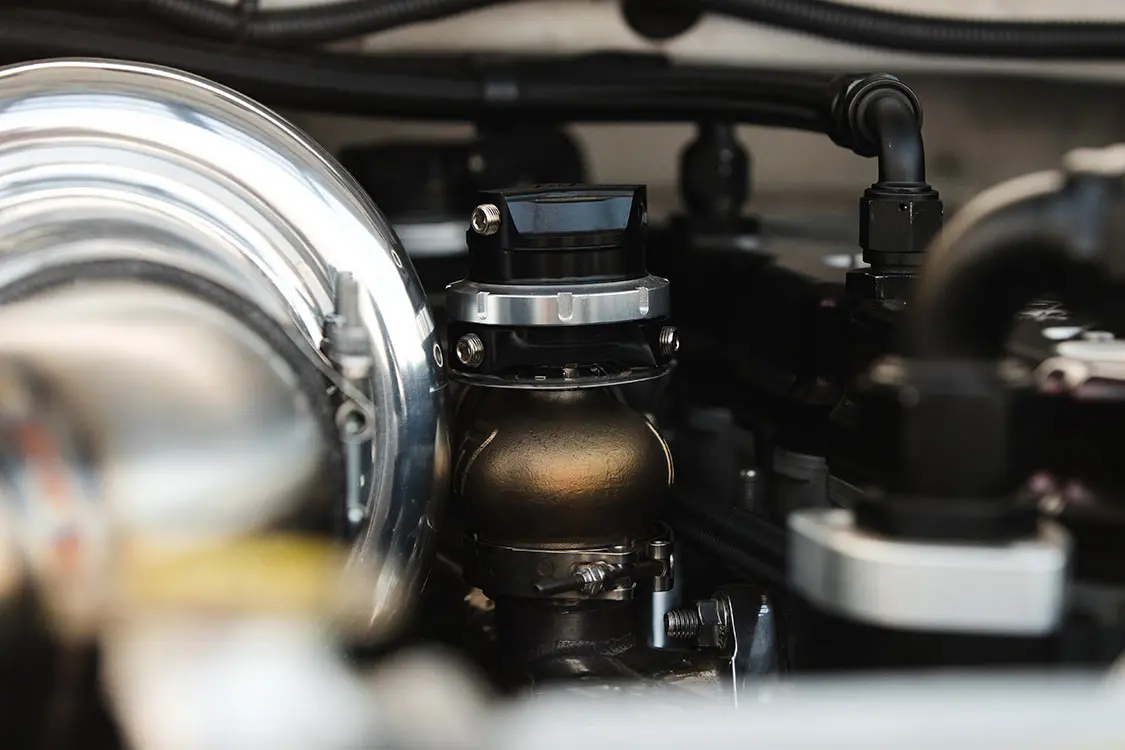
Adding even more performance to the Cummins are a Hamilton Cams 178/208 camshaft, fully ported Wagler Competition Products big-valve cylinder head, ARP 625 head studs, a Kingspeed LLC intake manifold, and a full S&S Diesel fuel injection system with 450 percent-over fuel injectors and a 14mm CP3 pump. The bottom-end was upgraded with Wagler connecting rods, Mhale Motorsports coated and cast pistons, Total Seal rings, and a 12mm girdle and main studs.
The exhaust system for the inline-six was also upgraded, making use of a Stainless Diesel exhaust manifold, custom V-banded 5-inch exhaust piping, and a 5-inch downpipe exiting under the truck.
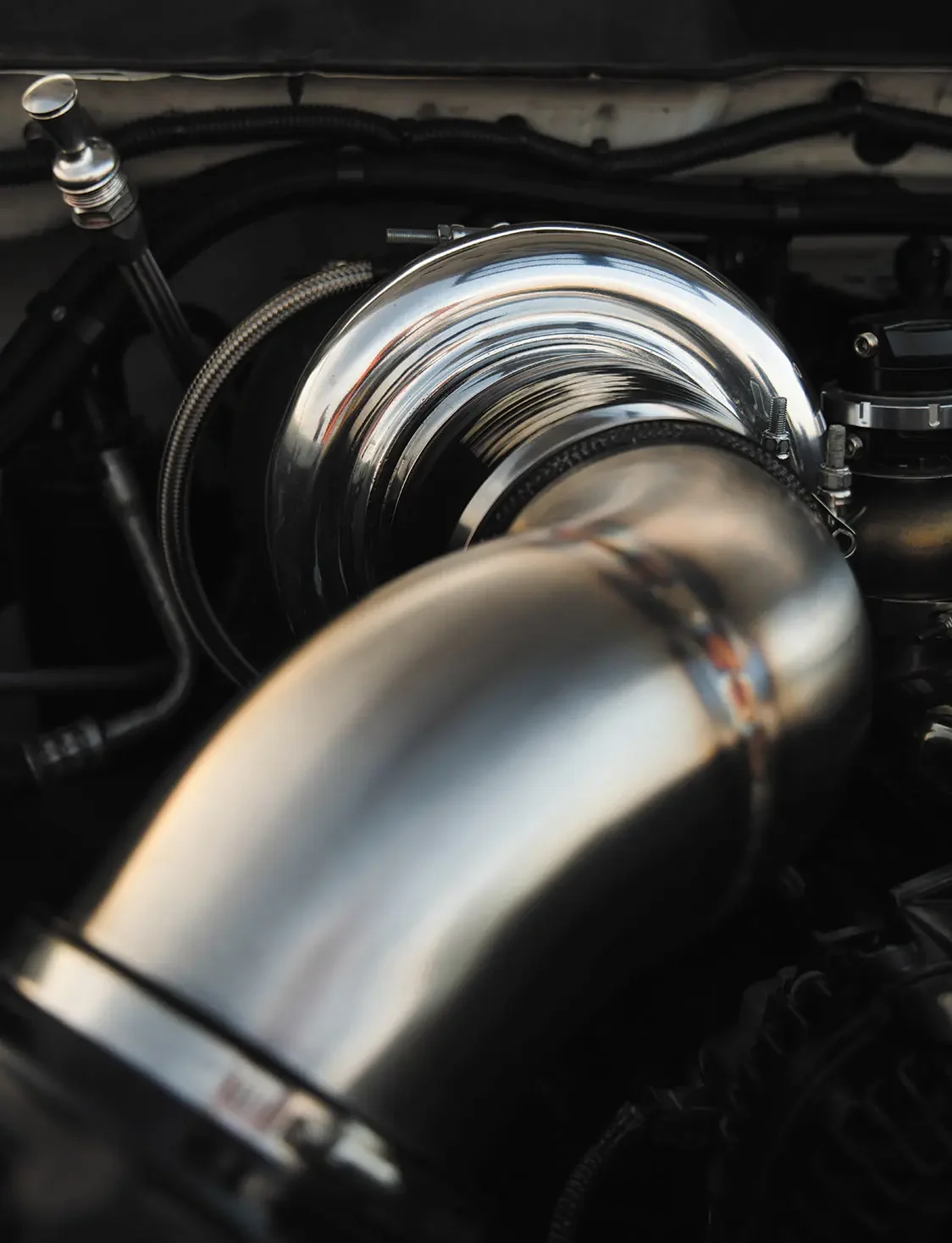
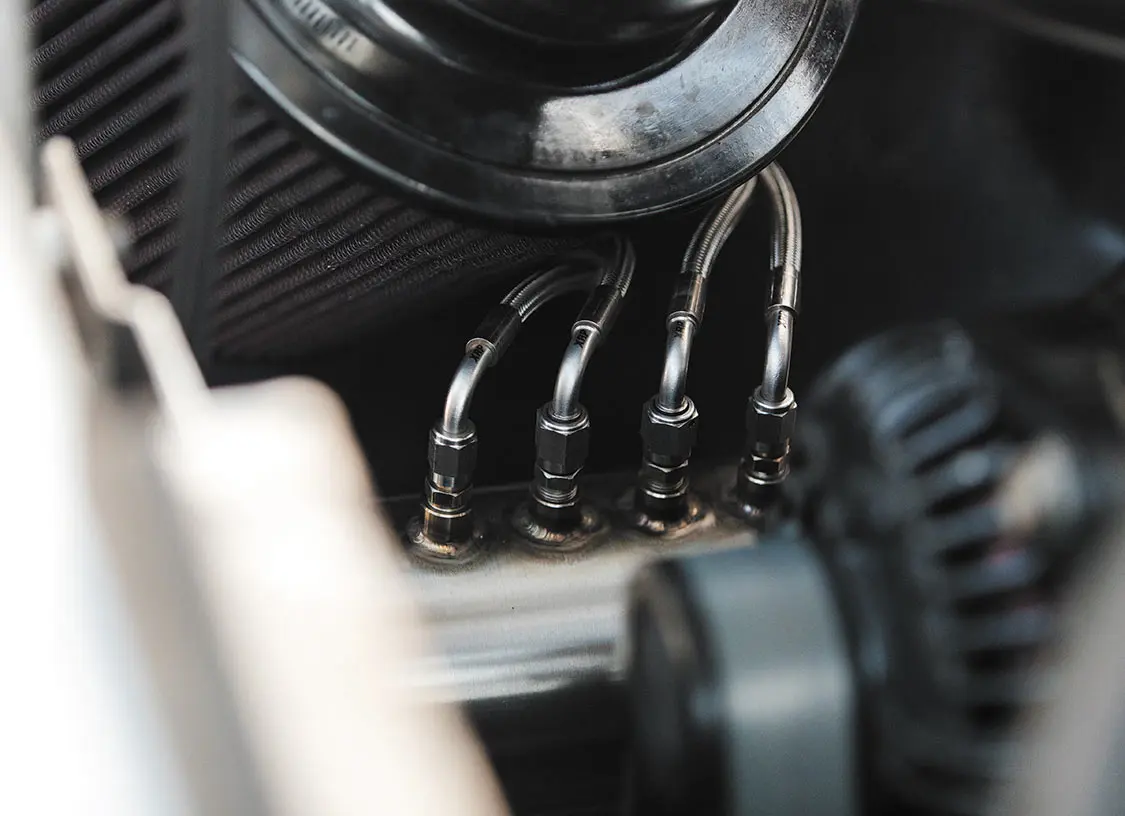
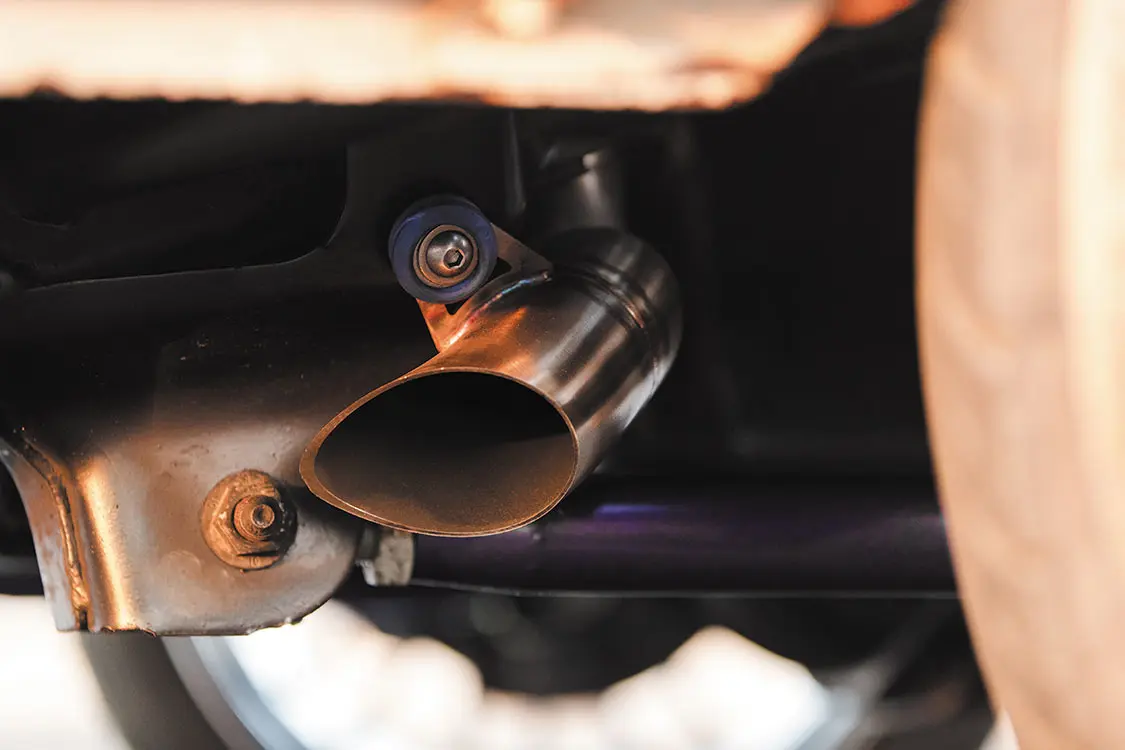
While Daniel played a pivotal role in choosing every component that went into the engine build, it was Jeff McCord of Linco Diesel Performance who was entrusted with the ultimate build of the diesel.
Backing the built engine is a Dodge 48RE transmission with a Suncoast billet triple-disc torque converter equipped with a 2600 stall, Sonnax 35-spline input shaft, Sonnax billet intermediate shaft, and a Sonnax billet fat output shaft, all compliments of Logan Epling of Epling Motorsports. When it came to the transfer case, the Dodge’s stock 271 T-case was utilized and tied to large front and rear driveshafts, compliments of Derek Rose of DNR Customs. Both front and rear axles are fitted with 3.73 gears, while braking power comes from second-generation Ram brakes due to size restrictions related to the truck’s competition wheel and tire combination.
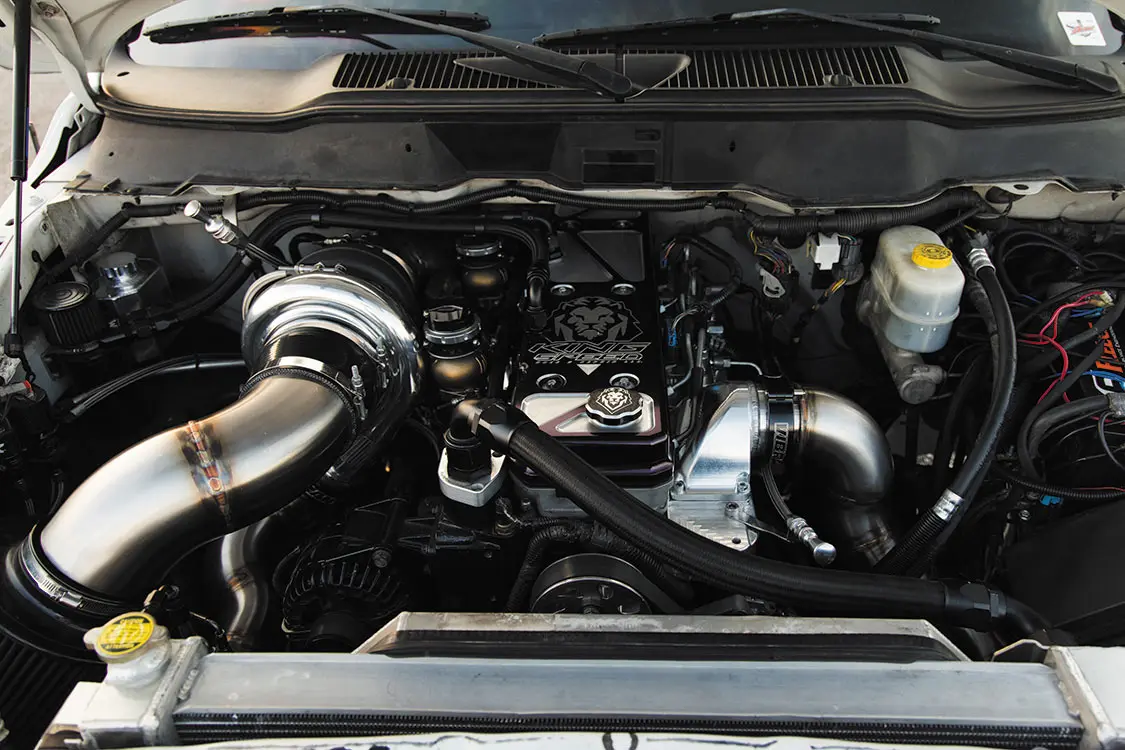
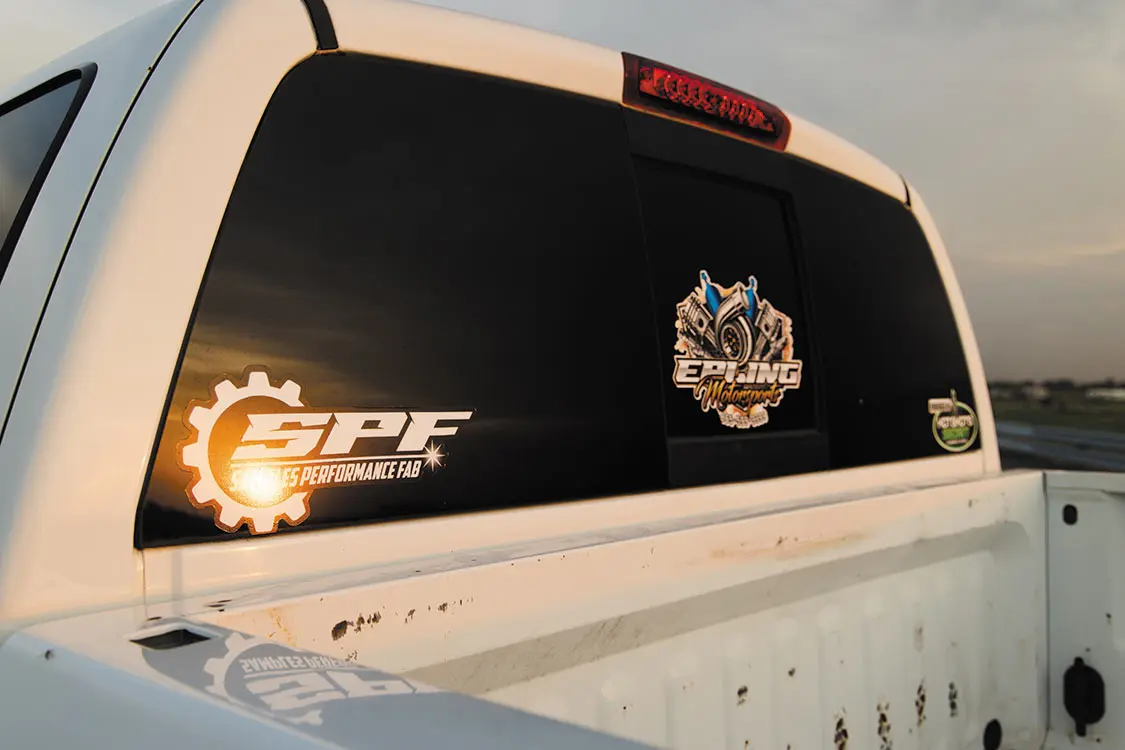
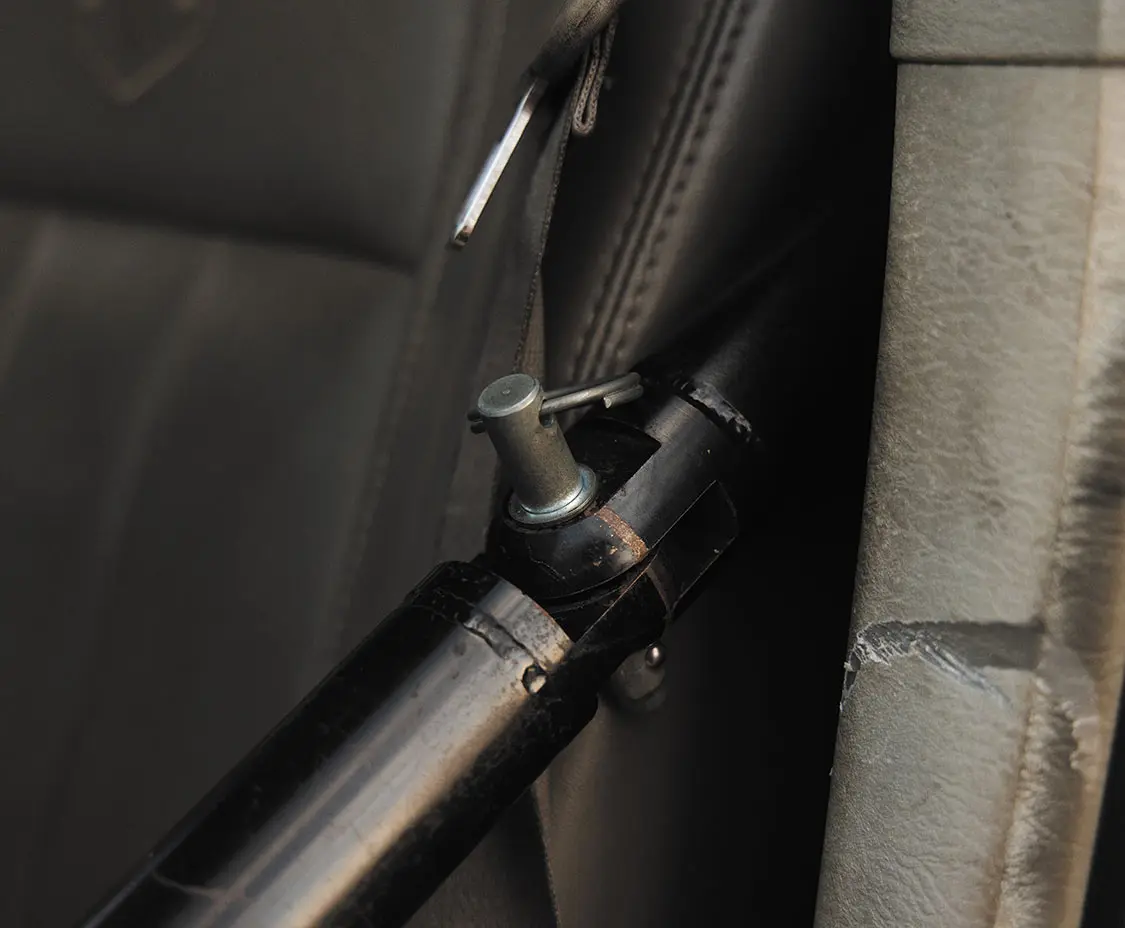
The goal of the build was to get somewhere in the area of 1,200 to 1,300 horsepower on straight fuel, with a three-stage nitrous system utilizing a Nitrous Express Maximizer 5 progressive controller, 375 solenoid and two .99 jets, pushing the diesel to an impressive 1,700 to 1,800hp. The results, however, were a bit grander than Daniel and his team thought they would be, with the truck putting down over 1,400hp on straight fuel, and just over 2,000hp on nitrous.
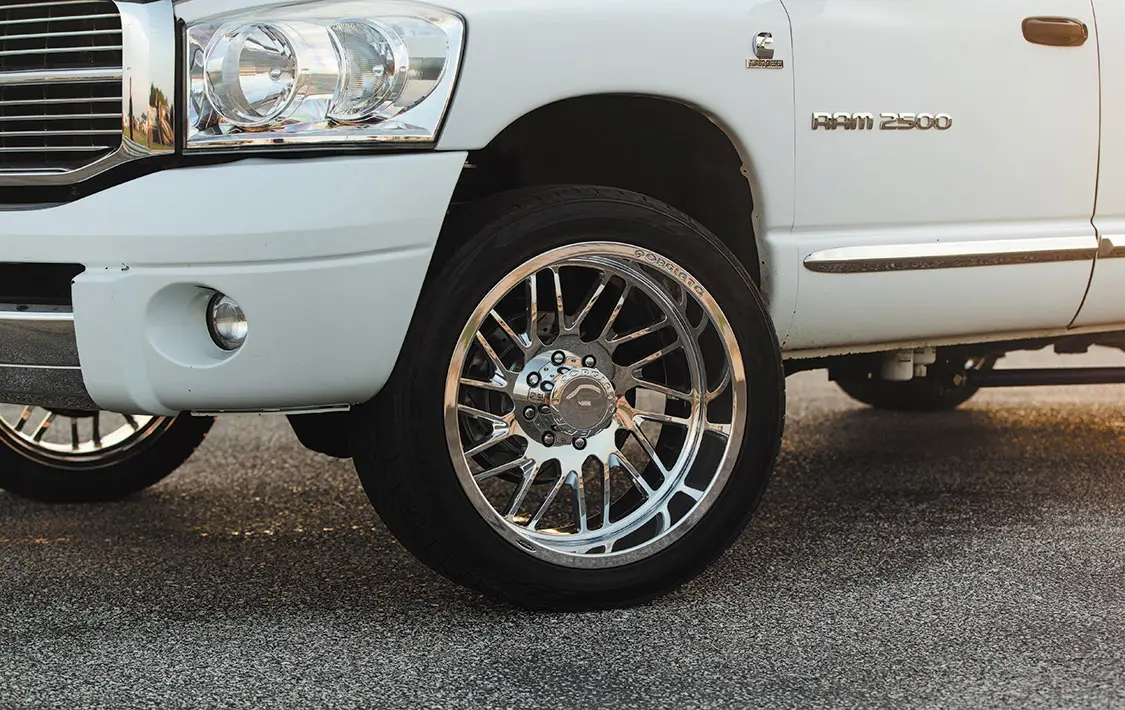
Now you can’t build a highly competitive diesel without also upgrading the chassis and suspension system, so Daniel entrusted Keaton Samples of Samples Performance Fabrication to upgrade the truck’s undercarriage. In addition to modifications to the rear section of the frame, Keaton equipped the Ram with Firepunk lowering coils and Bilstein 5125 shocks in the front, while modifying the truck’s factory leaf springs in the rear to make use of just two leafs in each pack, and adding Afco coilovers with 200-pound springs to the mix.
The whole chassis sits atop 22×12-inch Forgiato Ventaglio wheels wrapped in Toyo Proxes 305/40/R22 rubber.
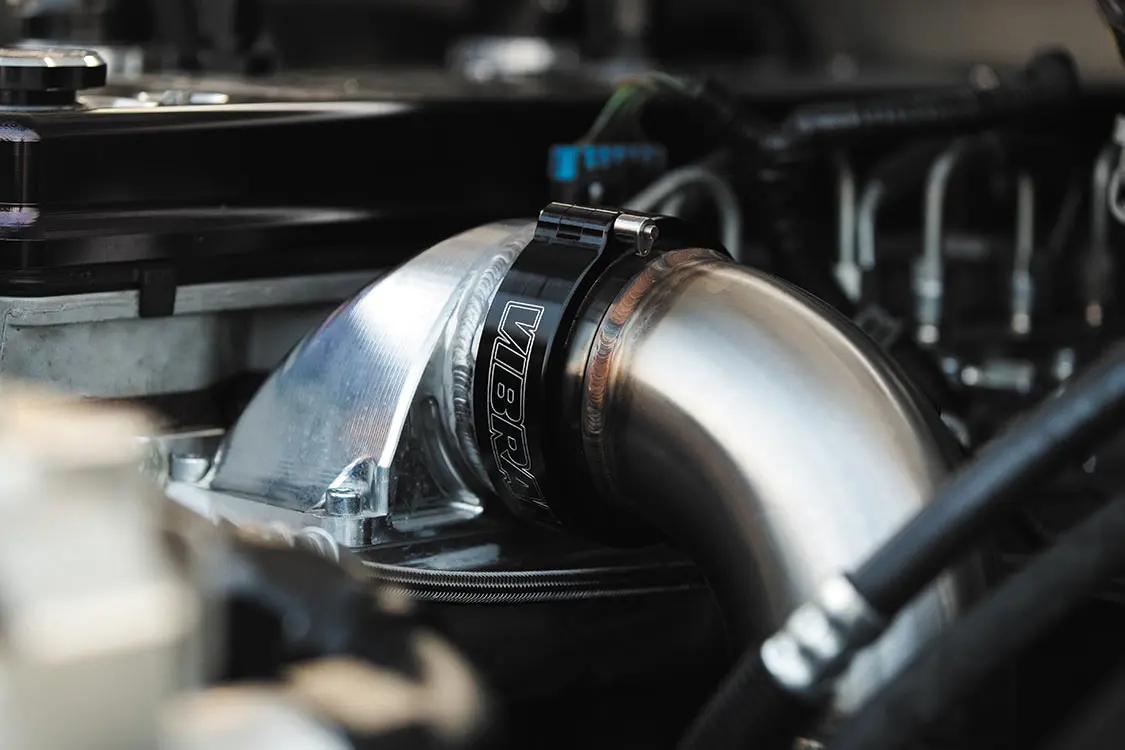
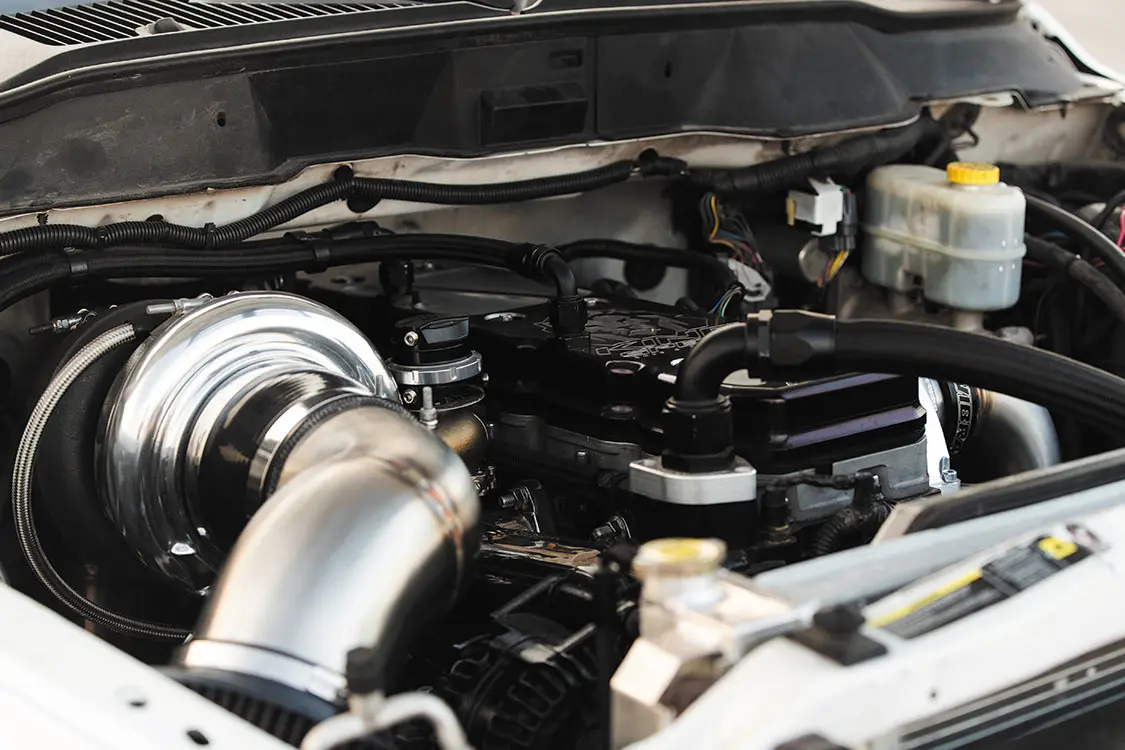
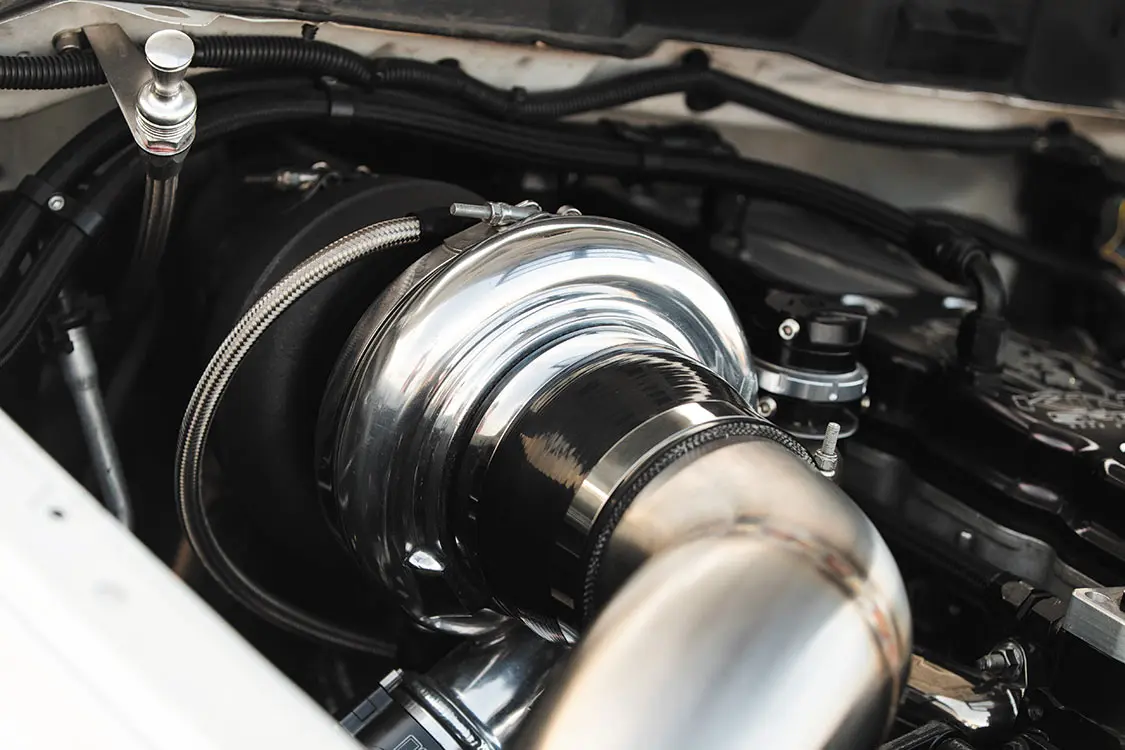
When it comes to body and interior modifications to the truck, Daniel opted to do very little, wanting to keep his truck as versatile as possible. Outside, the truck maintains its original white paint, chrome trim, badges and bed. Inside, the truck maintains a similar factory look, right down to the standard heated leather seats, intact heating and air conditioning system, and even a functioning back seat thanks to the singular interior addition – a full rollcage built by Paul Cato of Maverick Diesel, which has removable tubing in the rear section.
As Daniel told us, he may not be taking it to the hardware store to get a load of 2x4s, but he likes the idea that if he needed to, he still could in this truck. Plus, it’s extra comfortable to take on a drive-to-drag trip, which Daniel hopes to do in the near future.
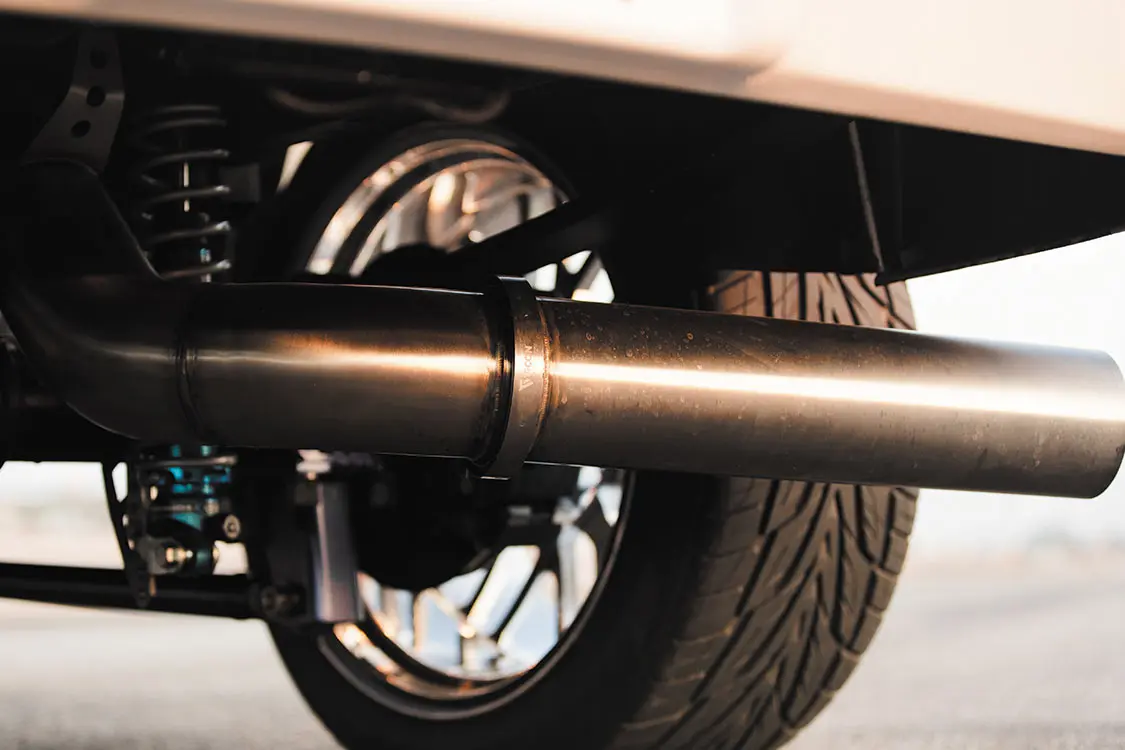
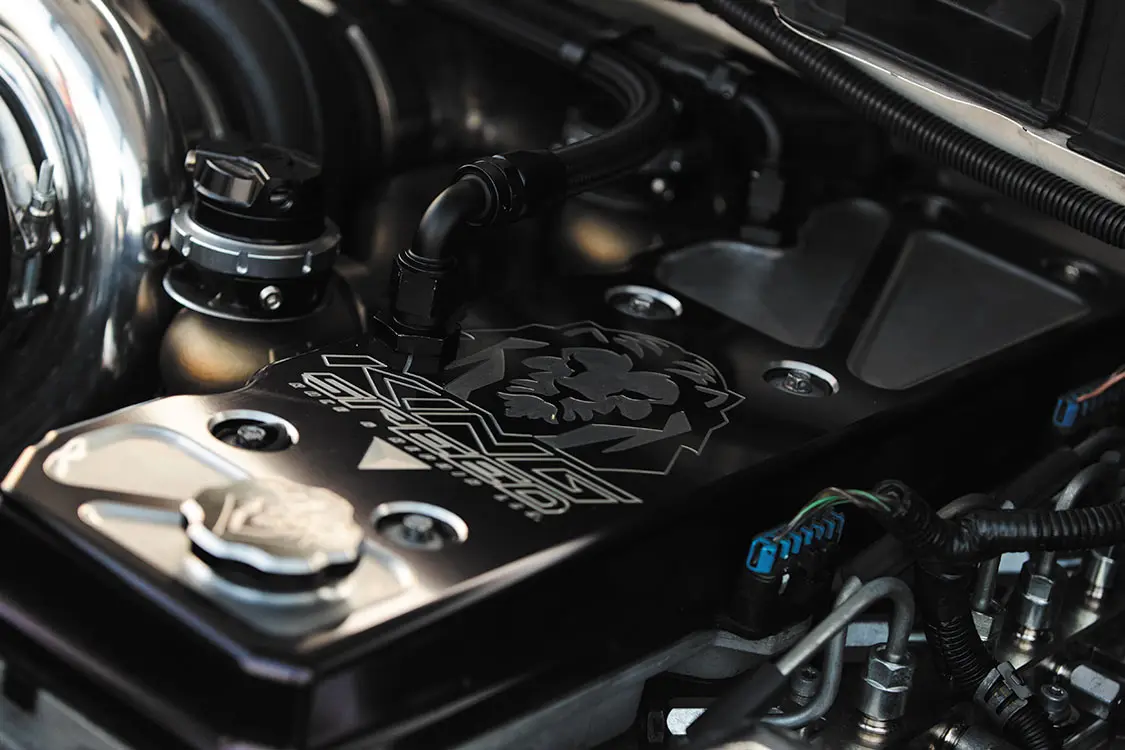

Remember when we said that Daniel’s truck had been a never-ending project right from the start? Well, that continues to be so today. As of December 2023, the truck was once again torn down and in the midst of another full rebuild in order for it to be more competitive in the 2024 Ultimate Callout Challenge season. Among the upgrades for the new version of the ‘06 Ram 2500 are a deck plate 6.7L diesel engine, compound turbos, and additions to the nitrous system, including two more 375 solenoids and another bottle. This would give the truck a full four-stage nitrous system to make use of. Additionally, Daniel and his team were said to be redoing the wiring, tacking in some new firewalls, and reworking the piping.
The goal for the 2024 competition season is to put down numbers in the range of 2,500hp. We certainly can’t wait to see just what massive marks Daniel and his Ram throw down in the world of competitive diesels in the future.
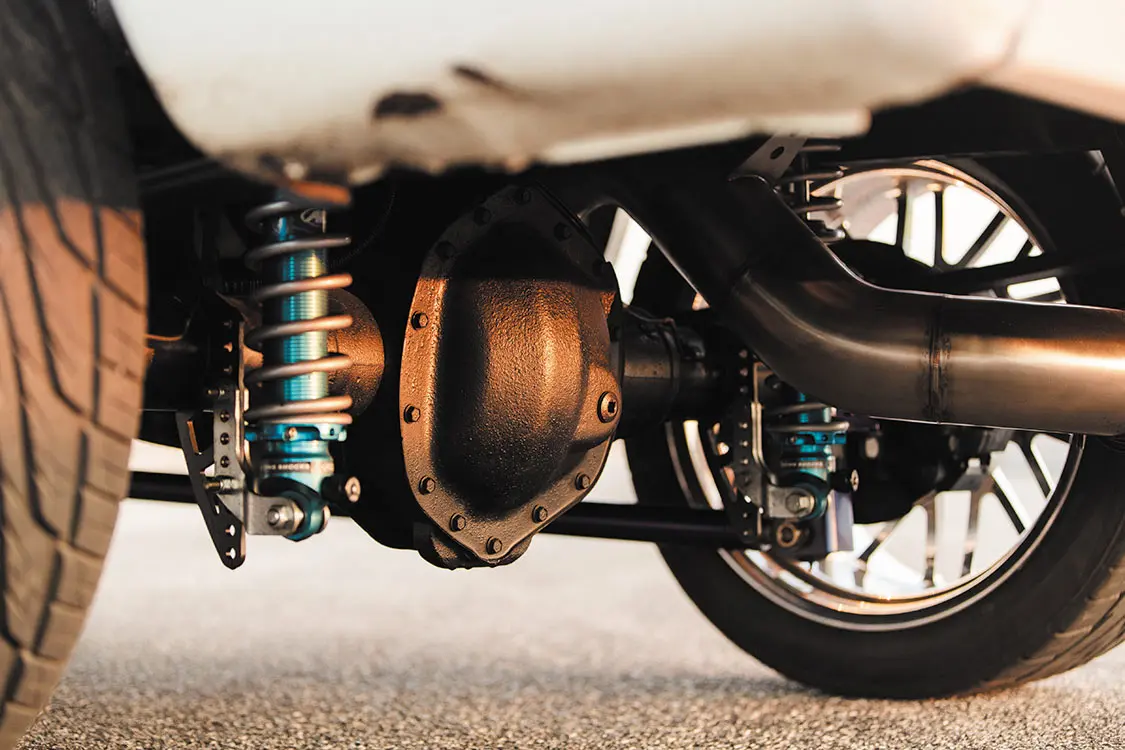
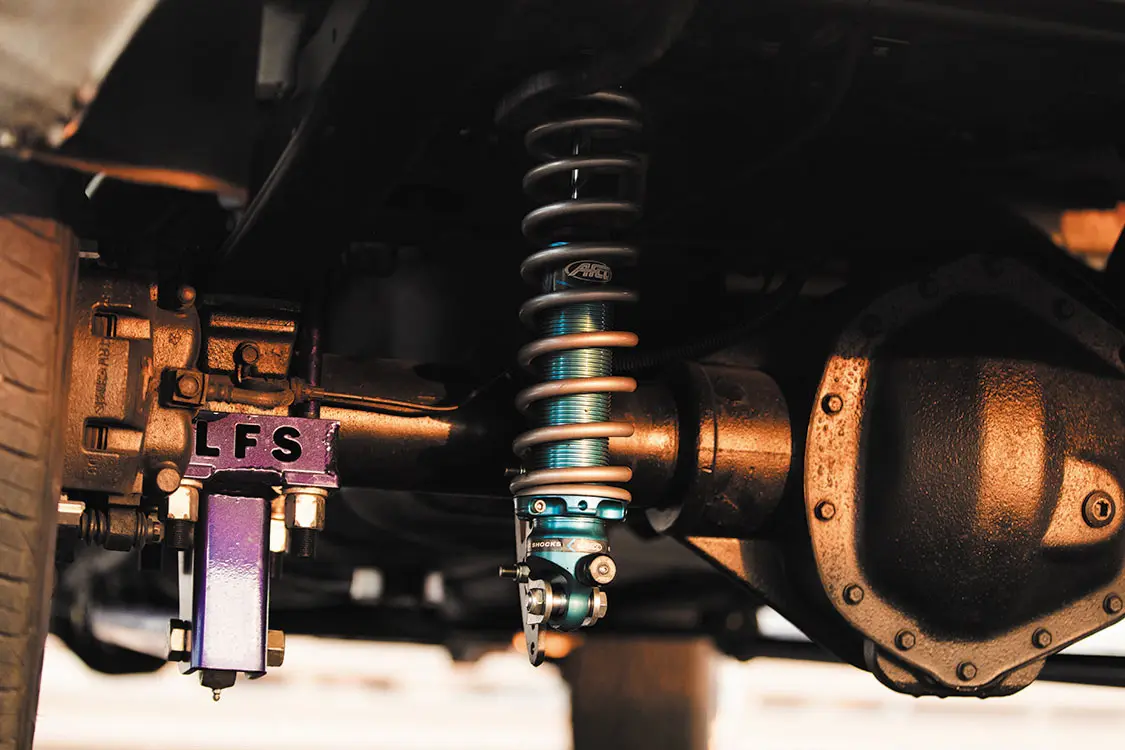
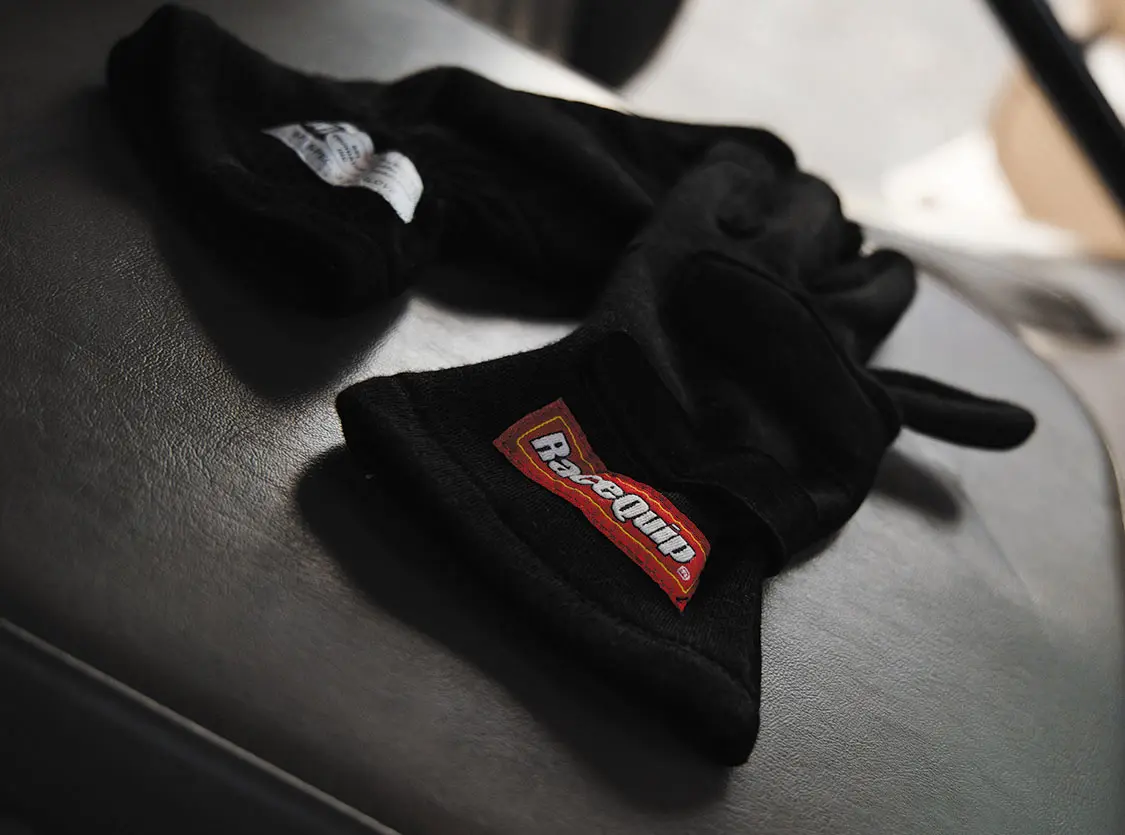
Owner
Chassis & Suspension
Wheels & Tires
Engine & Drivetrain
Interior & Stereo
We’re happy to have you all back to see some more tech with us! This month we’re working with our friends over at Belltech Suspension to take our stock-form Ram 2500 and add a 4-inch rear shackle and hangar kit along with Belltech’s Street Performance shocks so we can get that low, aggressive stance we’re going for. From our experience with this kit, we’ll improve our driveshaft angle and the ride.
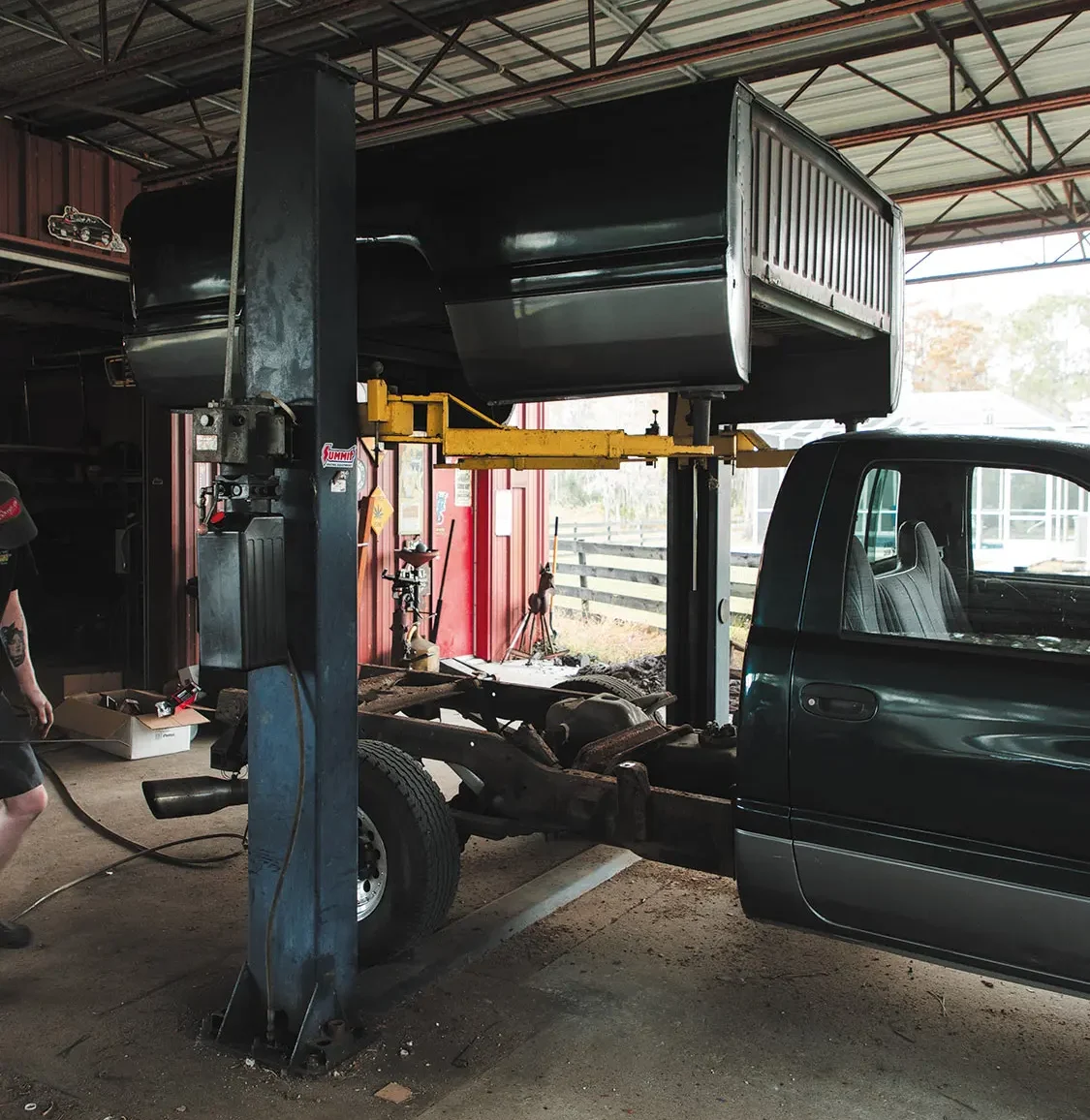

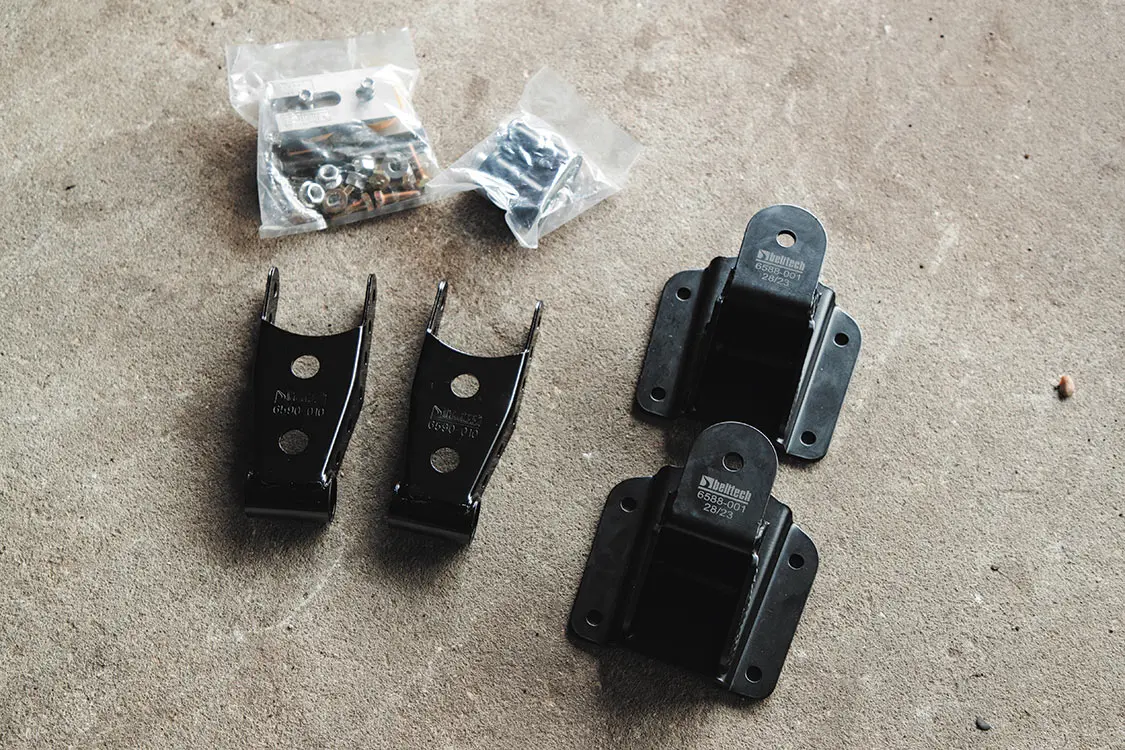
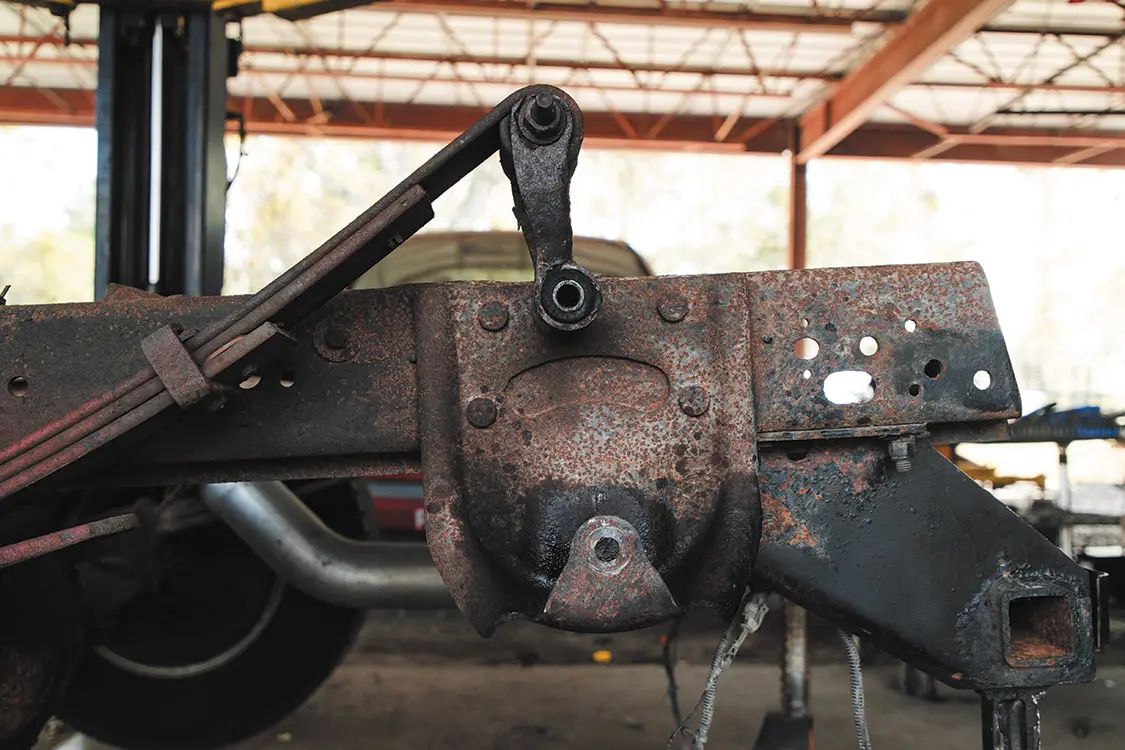
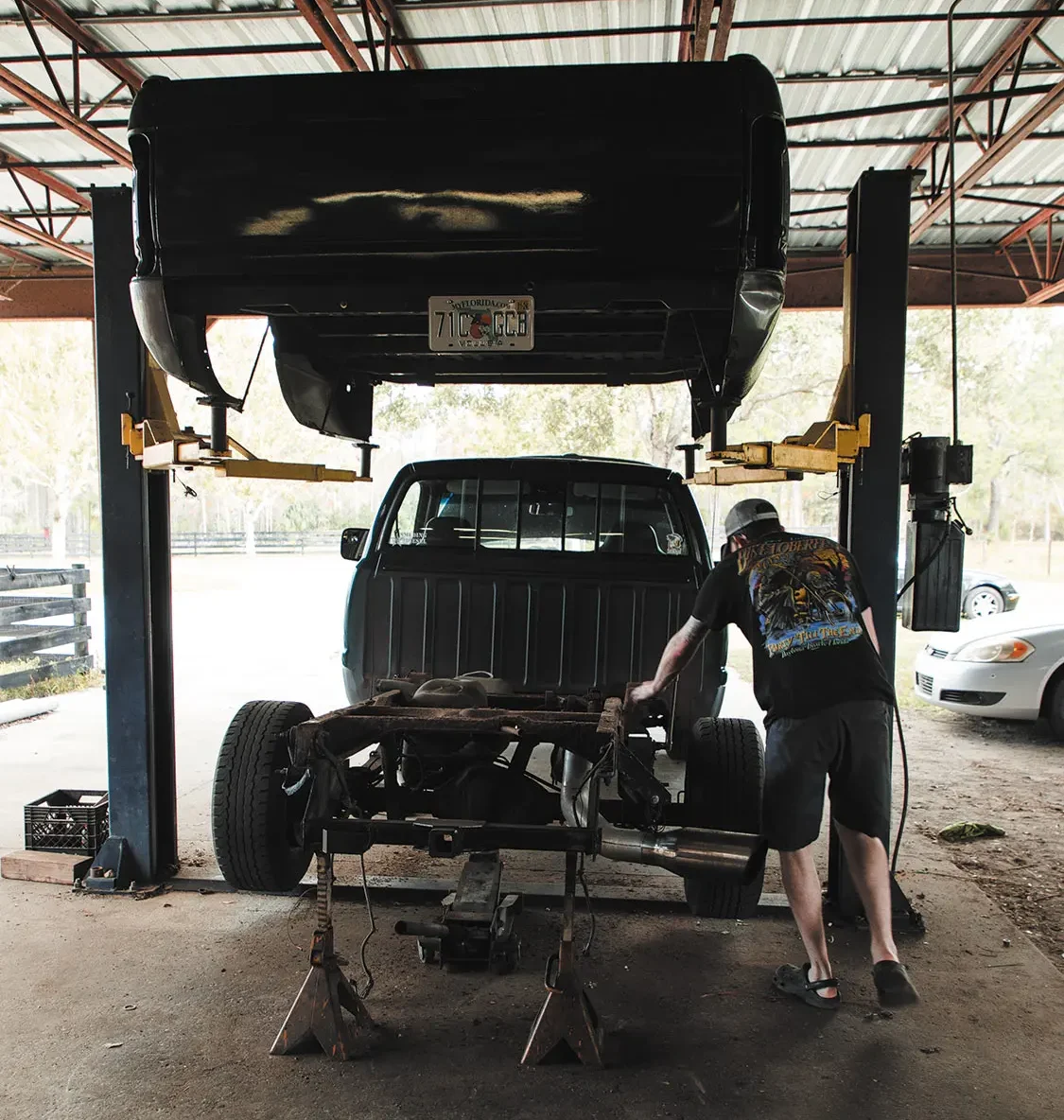
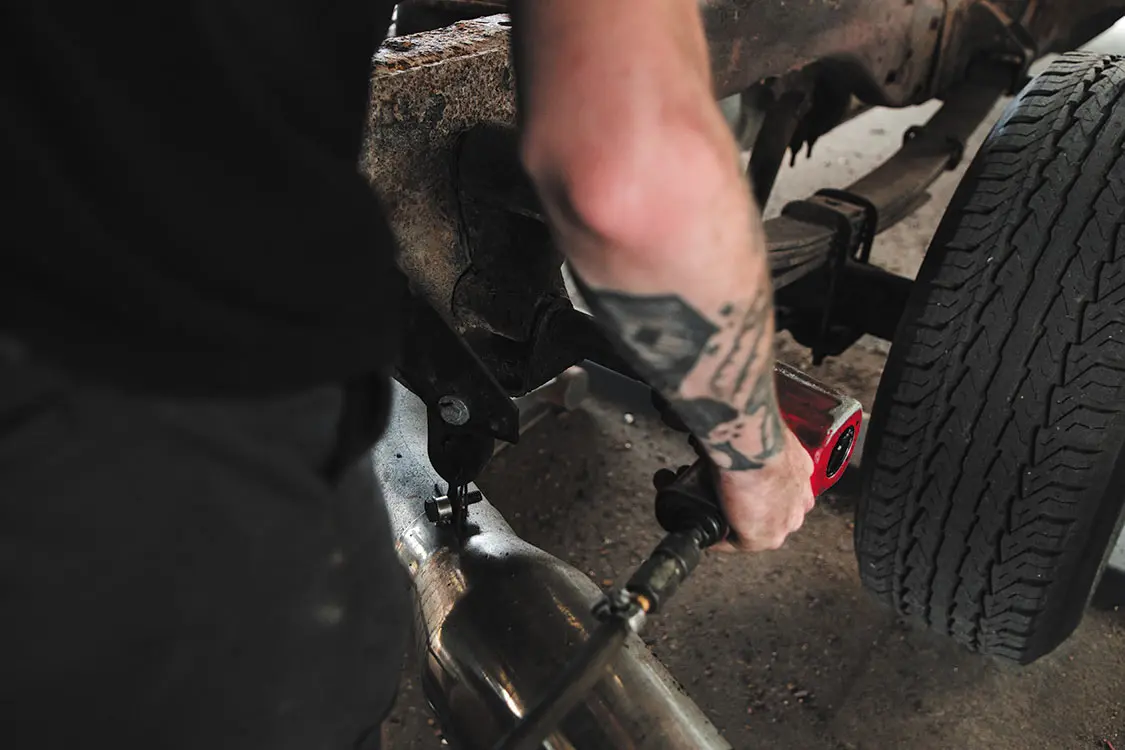
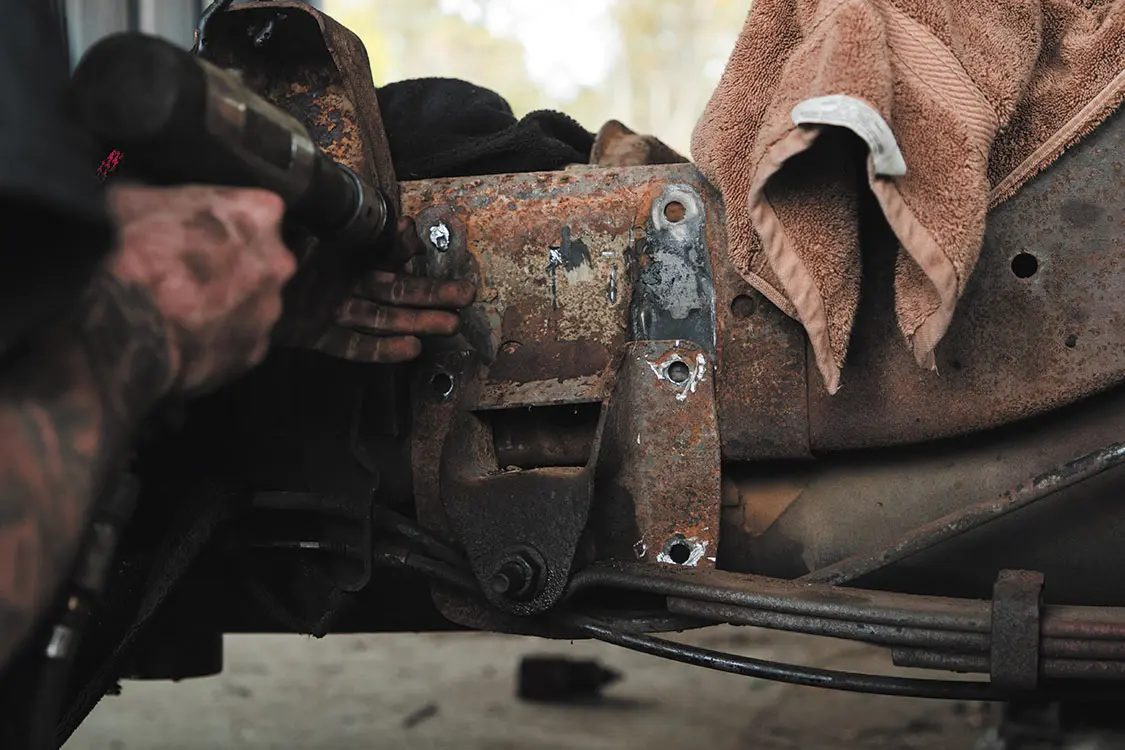
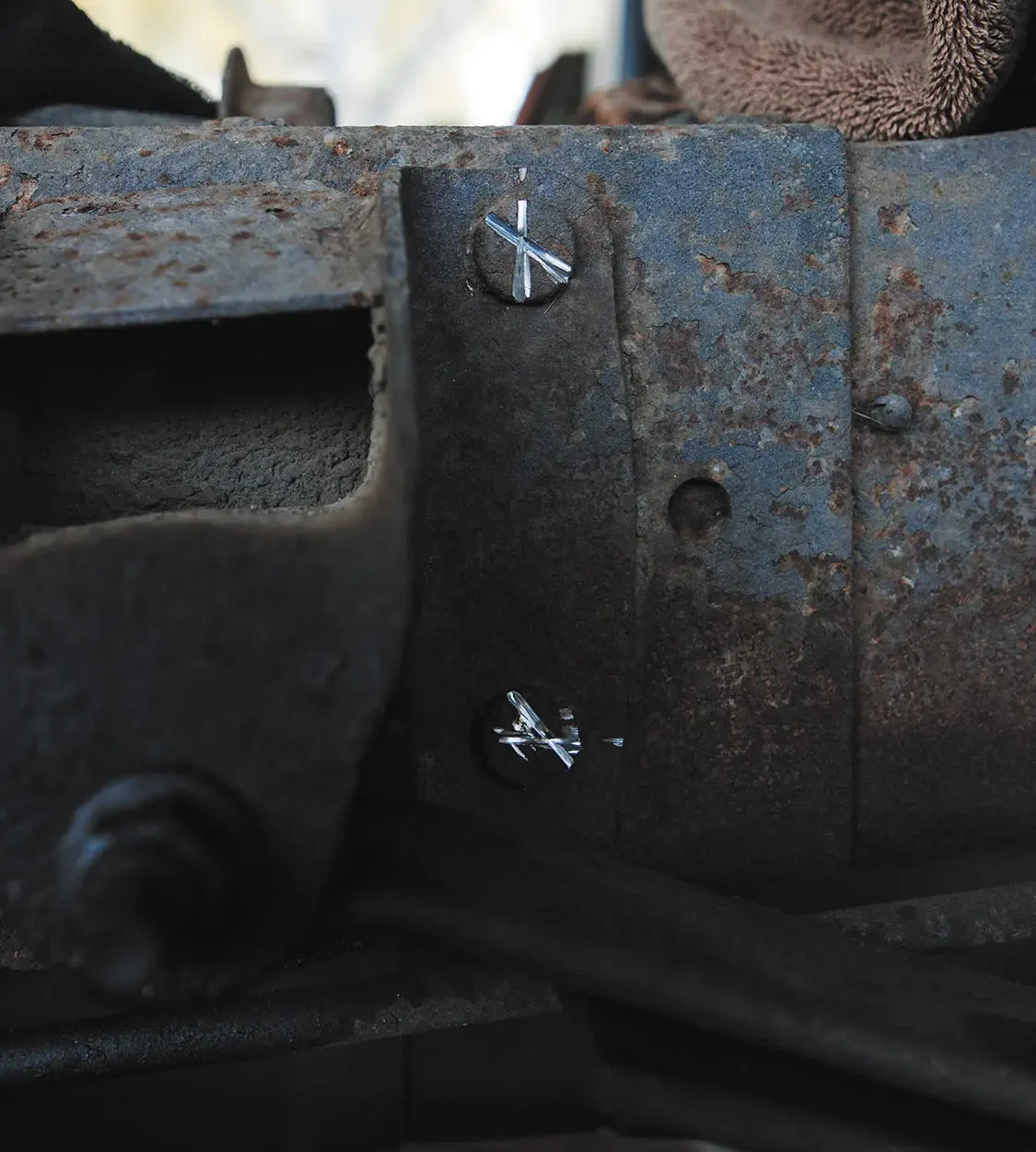
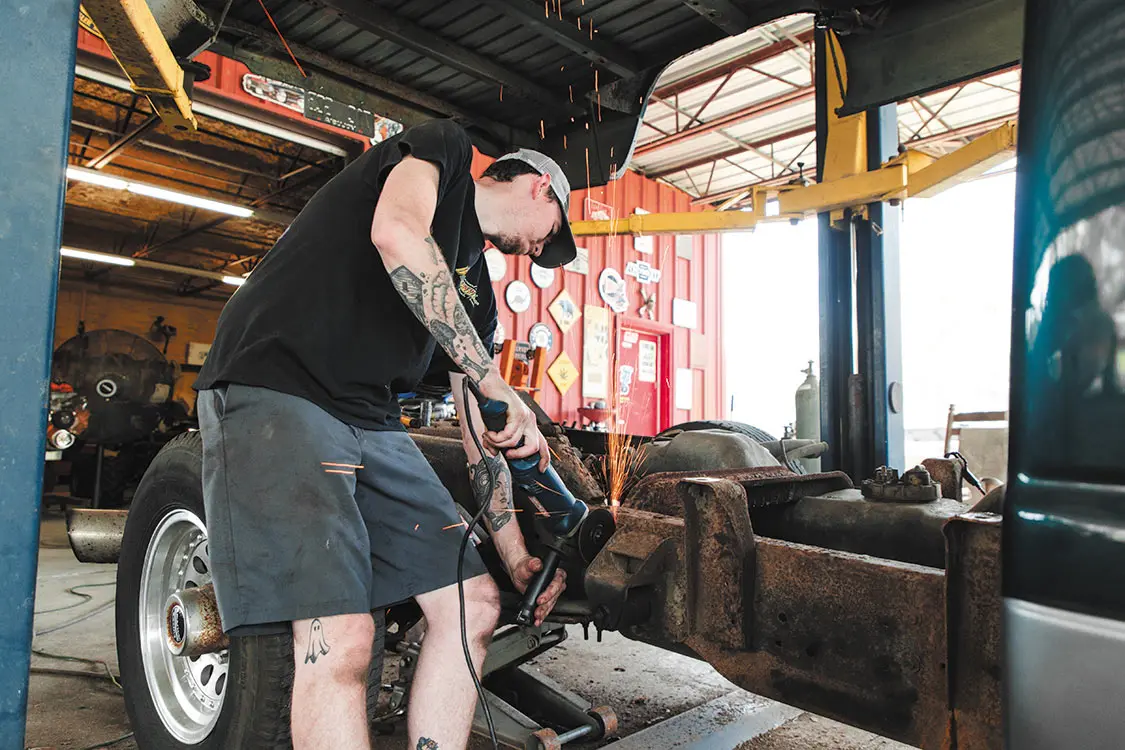
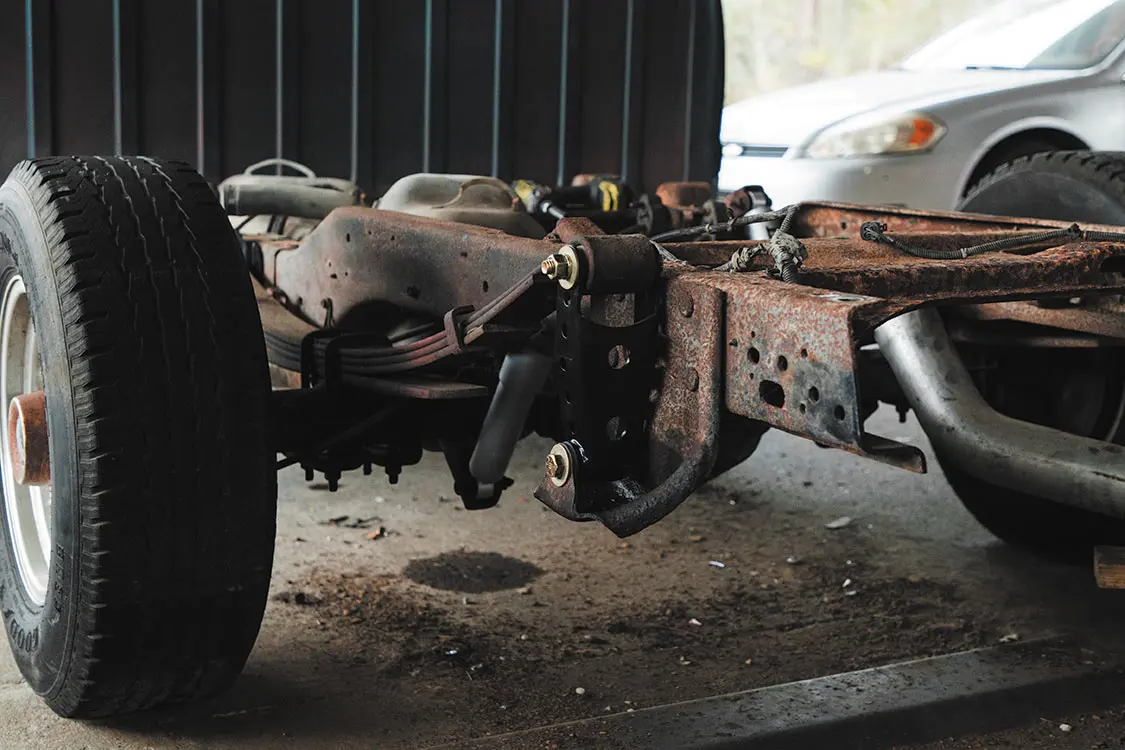
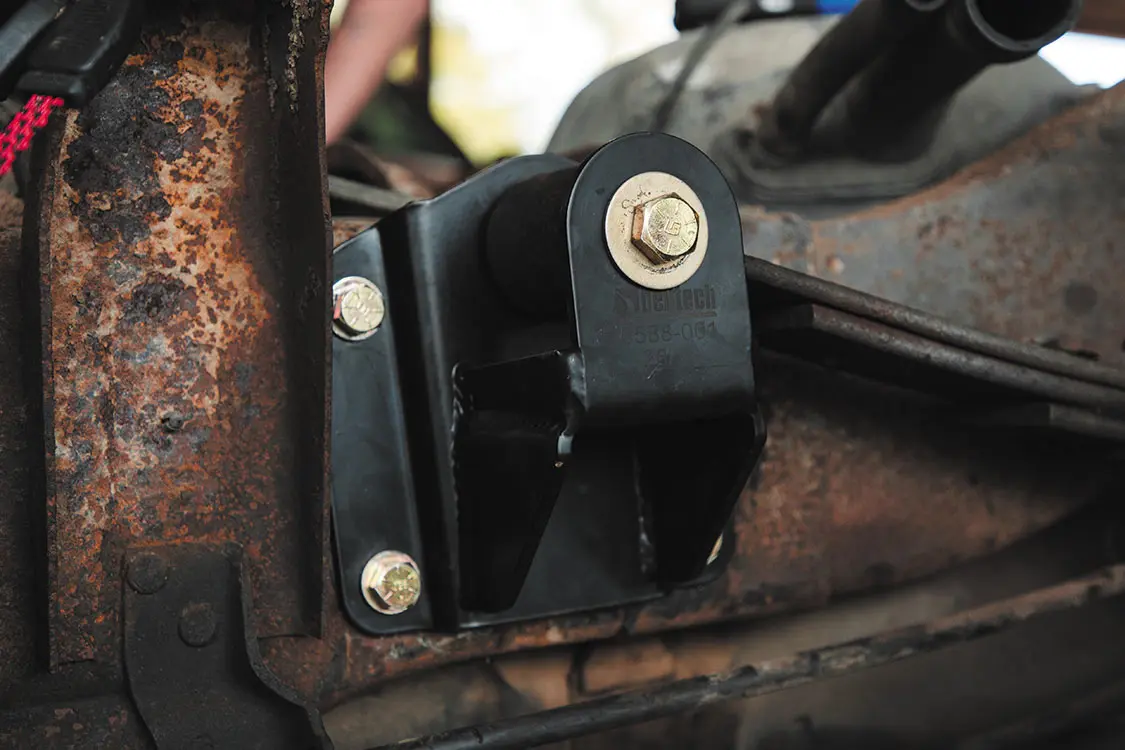
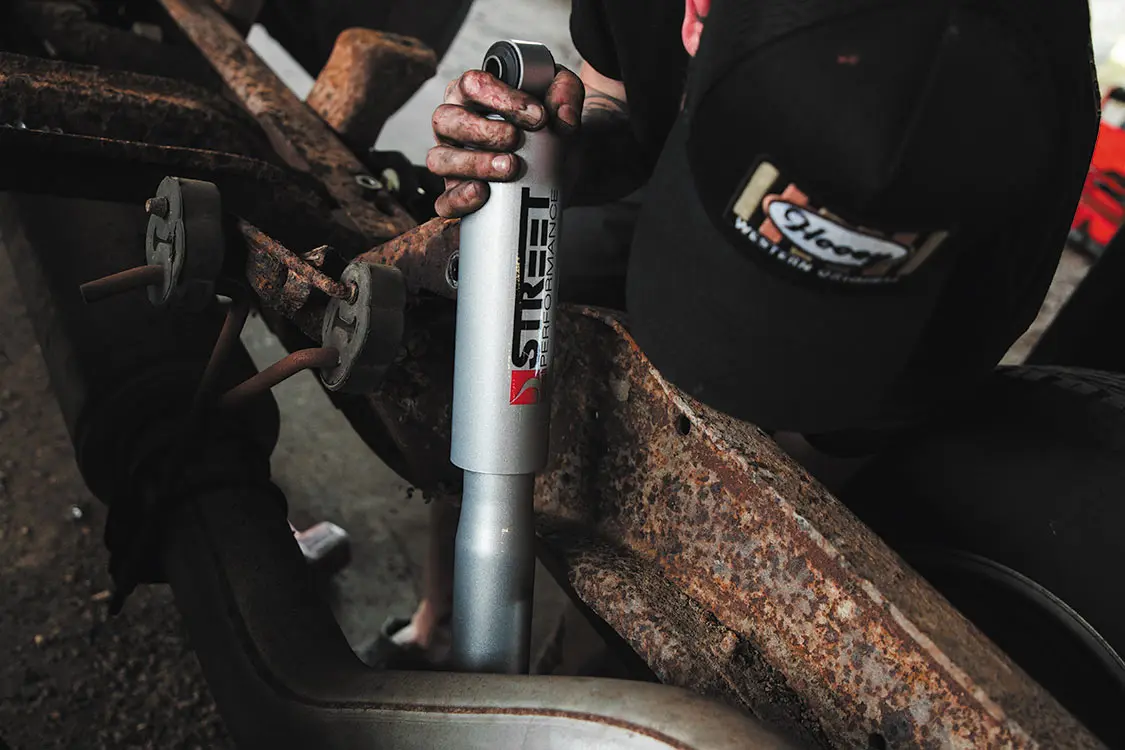
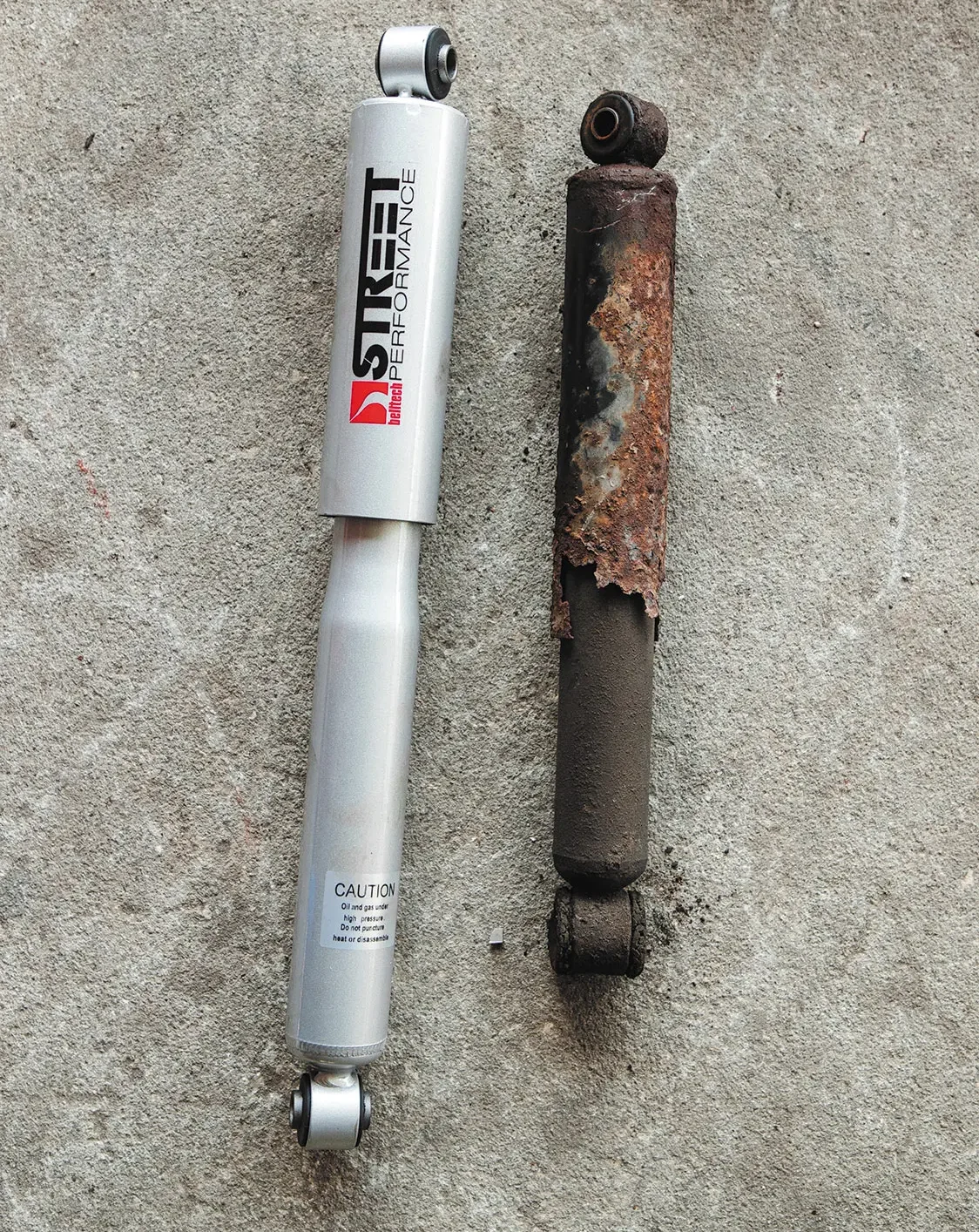
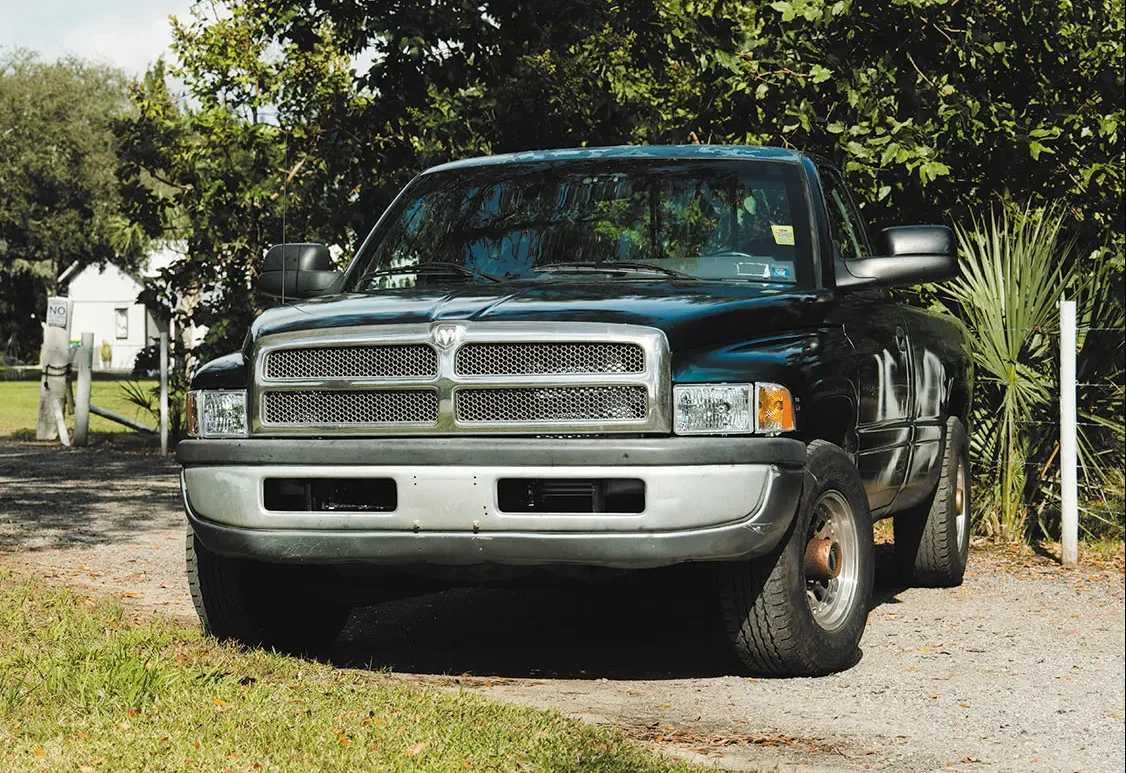
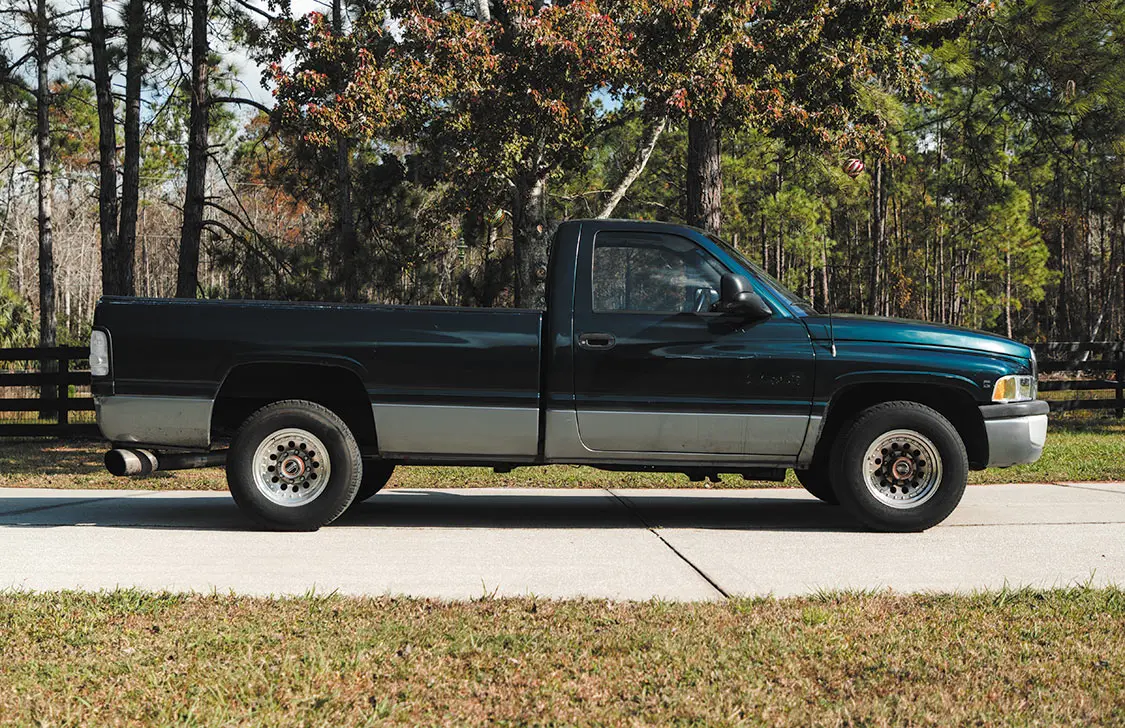
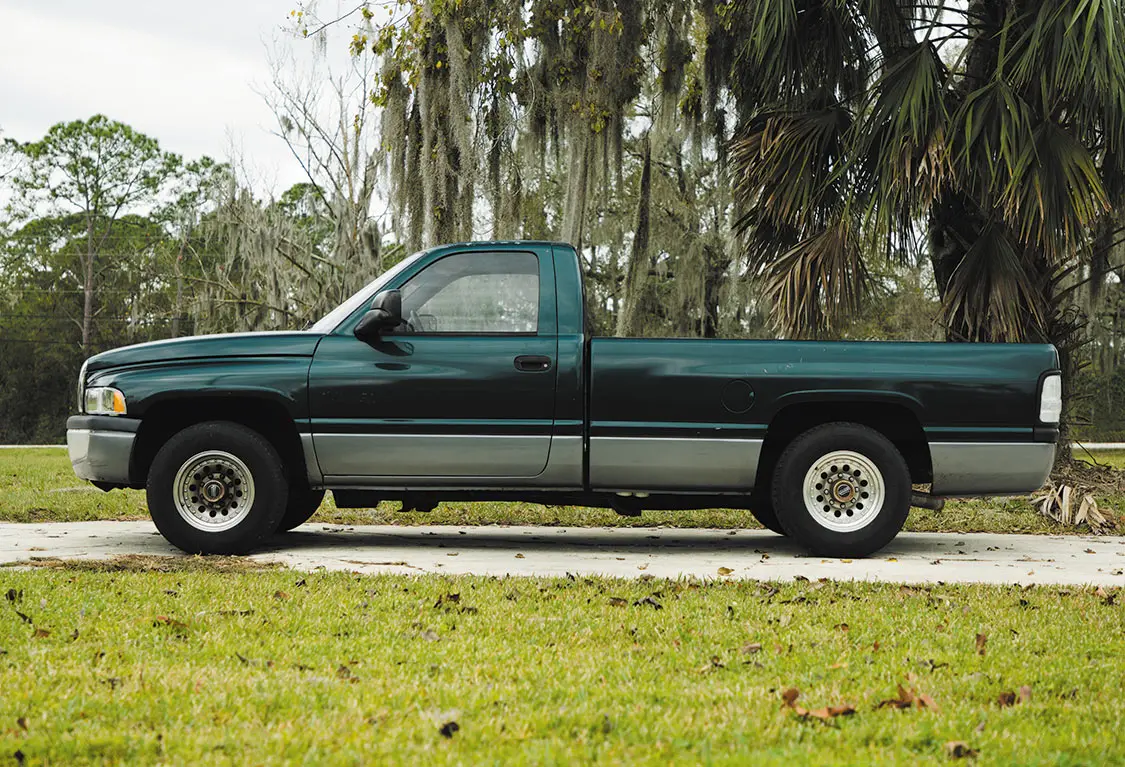
BellTech Suspension
Part #824
www.belltech.com
800-445-3767
Some say Jeep owners will always remain Jeep owners, they simply upgrade to newer vehicles over the years. And while that may be true for many, some flip the script when their needs change. Of course, we know that once a Jeeper, always a Jeeper, even if one adds another horse to their stable. That is certainly the case with Jon Sackett. While his off-road roots are deep with Jeep, he didn’t stray too far when his needs changed. While he still owns a Jurassic Park Jeep replica, his daily driver shifted over to another vehicle in the Mopar family: a RAM Power Wagon.
“Sackett was tired of hearing his friends complain when the Jeep couldn’t keep up with the trucks on washboard trails. All signs pointed in the direction of him getting a truck.”
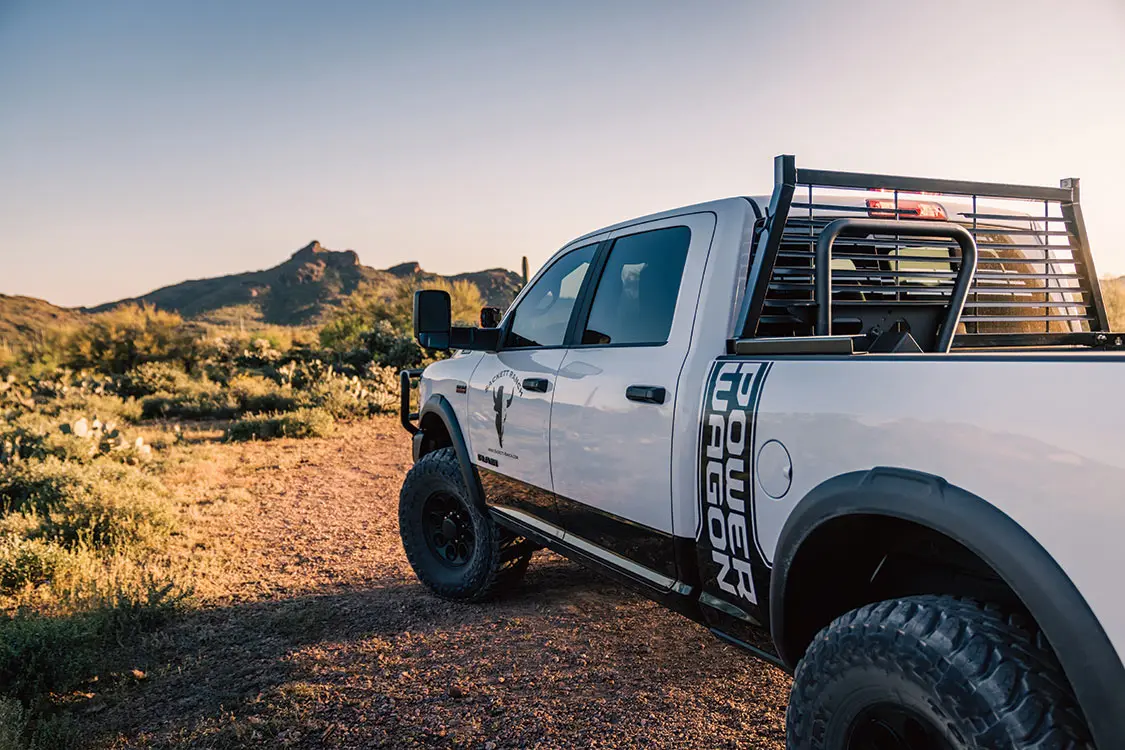
The Jeep JL Sackett exited was a notable build. A cover feature in Tread a few years back, it was also shown off at SEMA Show in 2019 and recognized by many online. While it was able to rock crawl with ease and be nimble on tight trails, he found himself not needing those features as most of his friends were in trucks. Not to mention, the lack of space was limiting the gear he could bring. Sackett often relied on friends with more space to bring items that he couldn’t fit in his Jeep JL. As he describes it, “This sorta made my build feel inadequate for the type of adventures I love the most, which was just getting out to the middle of nowhere, to a beautiful location, and setting up camp for the weekend.” Also since the vehicle was his daily driver, the height also limited him. Finding a place to park wasn’t easy, as parking garages were usually not an option.
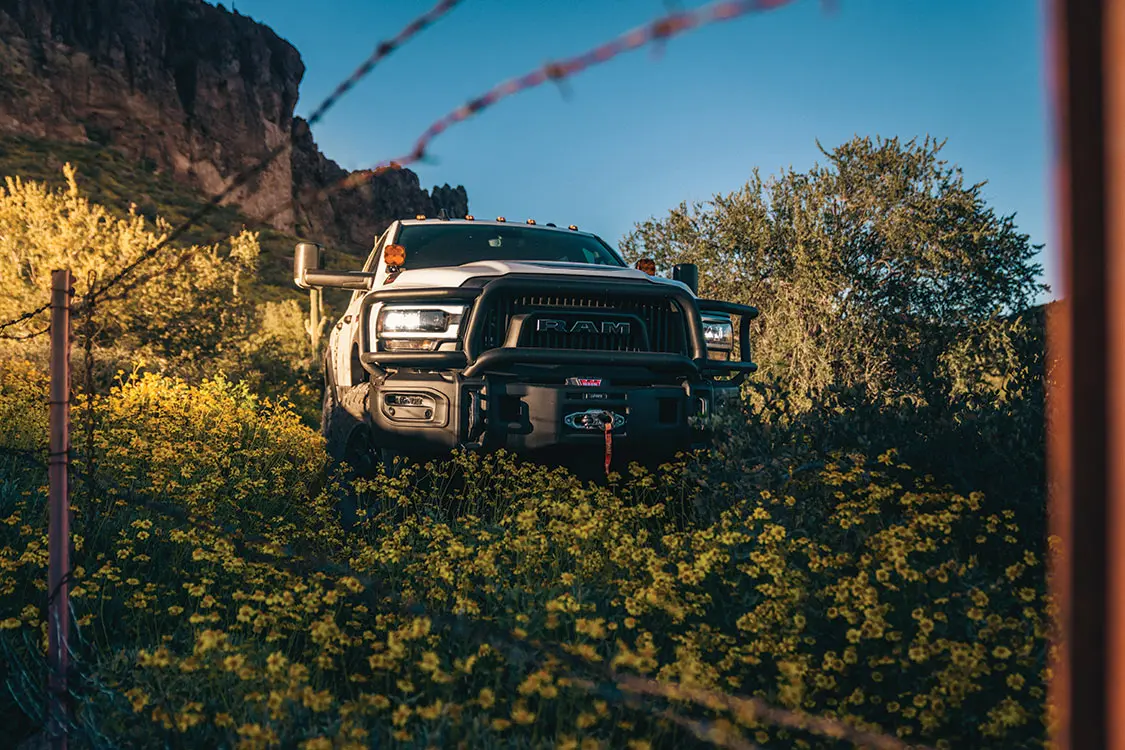
After a move from California to Phoenix, Arizona, Sackett knew it was time to make a change. Keeping up with traffic driving 80+ on the freeway was tough in a squirrely Jeep, and Sackett was tired of hearing his friends complain when the Jeep couldn’t keep up with the trucks on washboard trails. All signs pointed in the direction of him getting a truck.
When it came time to pick a truck, that was easy for Sackett. Just like the Wrangler, the Power Wagon has roots in World War II. It was the workhorse for the U.S. Army as it was able to transport supplies and more troops to the front lines where the Willys were not able to; similar to the conundrum of what Sackett found himself in. As Sackett says, “The Power Wagon was like the Rubicon for the RAM trucks.” Just like on his Jeep Wrangler JL, the Power Wagon has a disconnecting sway bar, front and rear lockers, and more. To him, it seemed like a larger version of his Jeep with more room for people and gear. Now with a significant other and a dog, the extra room was that much more important and the decision to buy a RAM Power Wagon was an easy one.
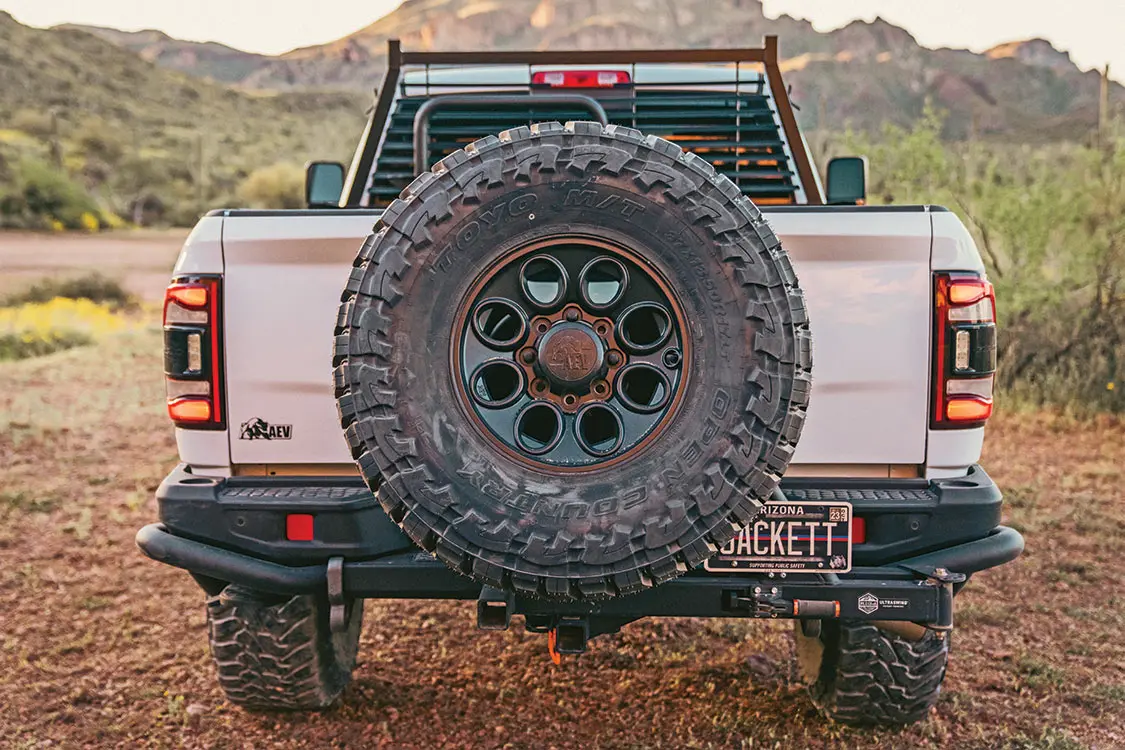
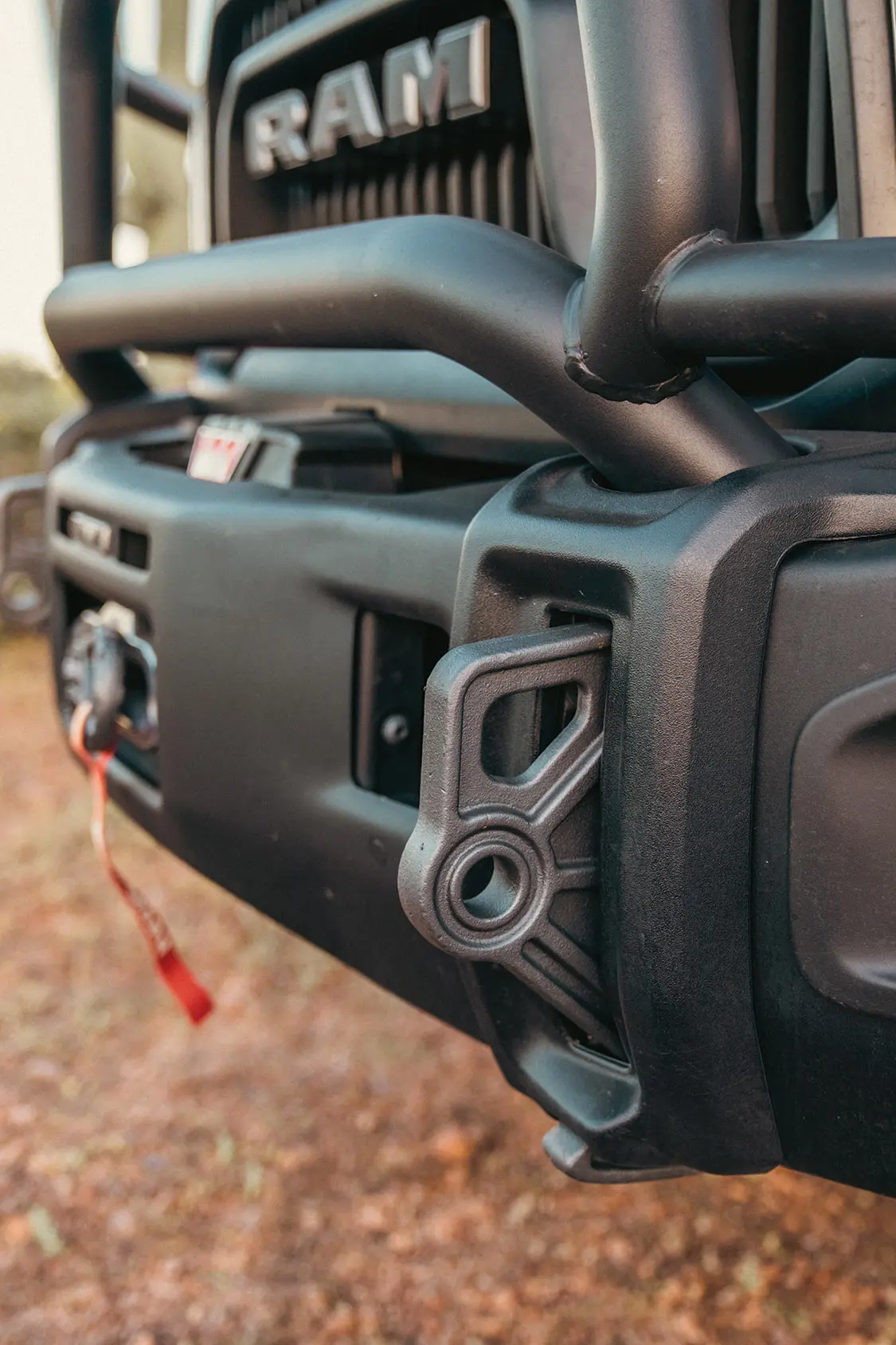
As the time came to decide the direction of the Power Wagon build, Sackett decided to think it through a bit and enjoyed driving the truck stock. He enjoyed a vehicle that was smooth and easy to drive on the highway. He took it camping a few times, using a ground tent, and preferred that setup. Mostly, he was impressed with how the truck handled both on and off-road in its stock form, not to mention all the extra room he now had. Around this time, he also started his own business, from which the vision of the truck and business aligned. “I knew I wanted to build the truck out to not only be badass and get me through anything but also still feel like an OEM truck for around town and doing things for the business,” Sackett tells us. From there Sackett Ranch was formed and the truck followed suit with a ranch look.
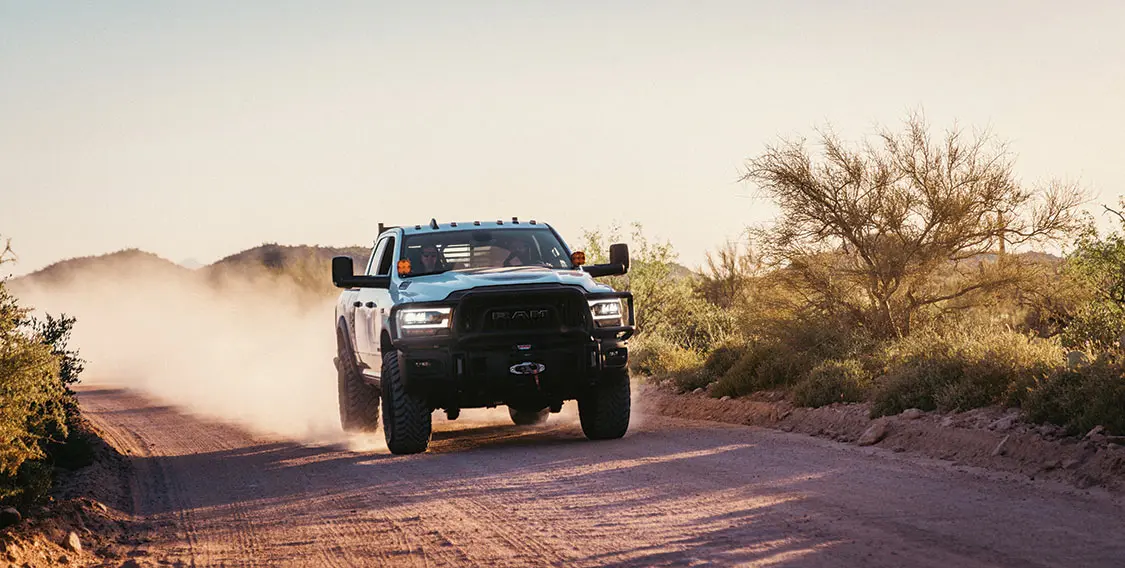
While the Bed Rack headache rack may stand out in style, the rest of the truck is all off-road. Liking the AEV Prospector and Prospector XL, Sackett wanted something even more badass than a Prospector XL. He wanted a Prospector with disconnecting sway bars, lockers in front and rear, and a powerful 6.4L V8 engine. Since AEV didn’t build Power Wagons, Sackett took matters into his own hands. Themed as a ranch truck, it would be a powerful off-road beast capable of hauling gear for work, towing vehicles, and taking him out to camp and off-road on the weekends. AEV bumpers with the Brush Guard give the truck the look he desired and extra clearance for difficult trails. He mounted AEV wheels with 37-inch Toyo Tires Open Country Mud Terrains, keeping the suspension stock.
“While the Bed Rack headache rack may stand out in style, the rest of the truck is all off-road.”
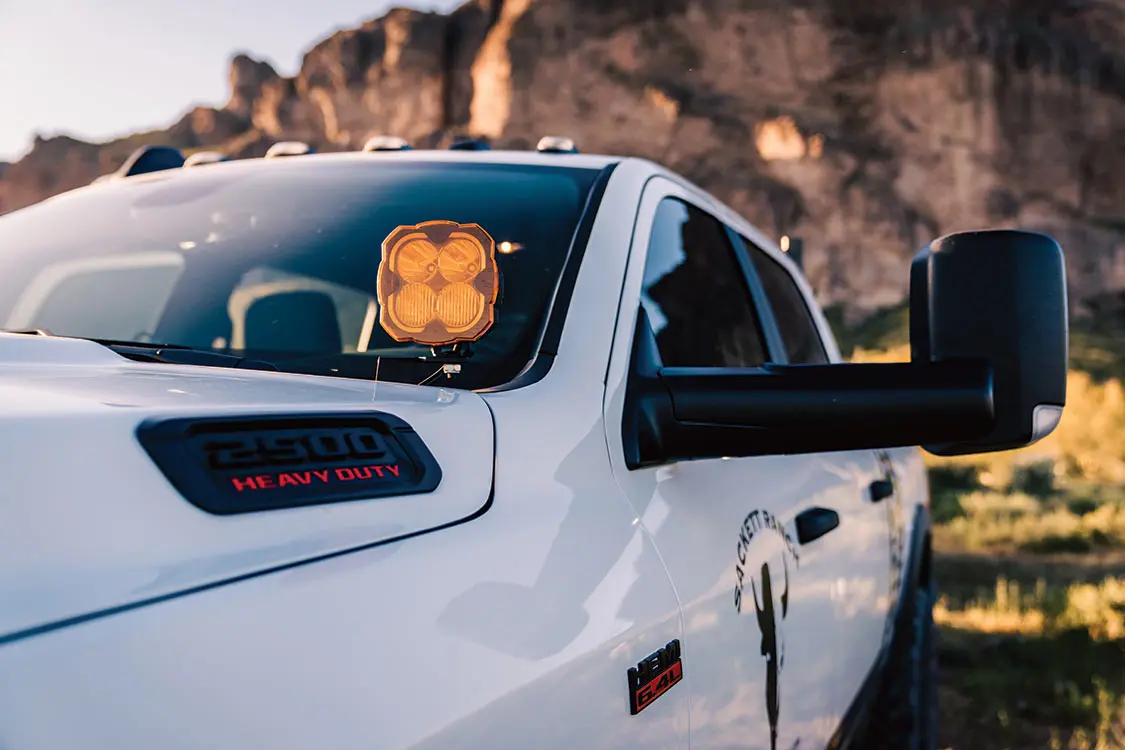
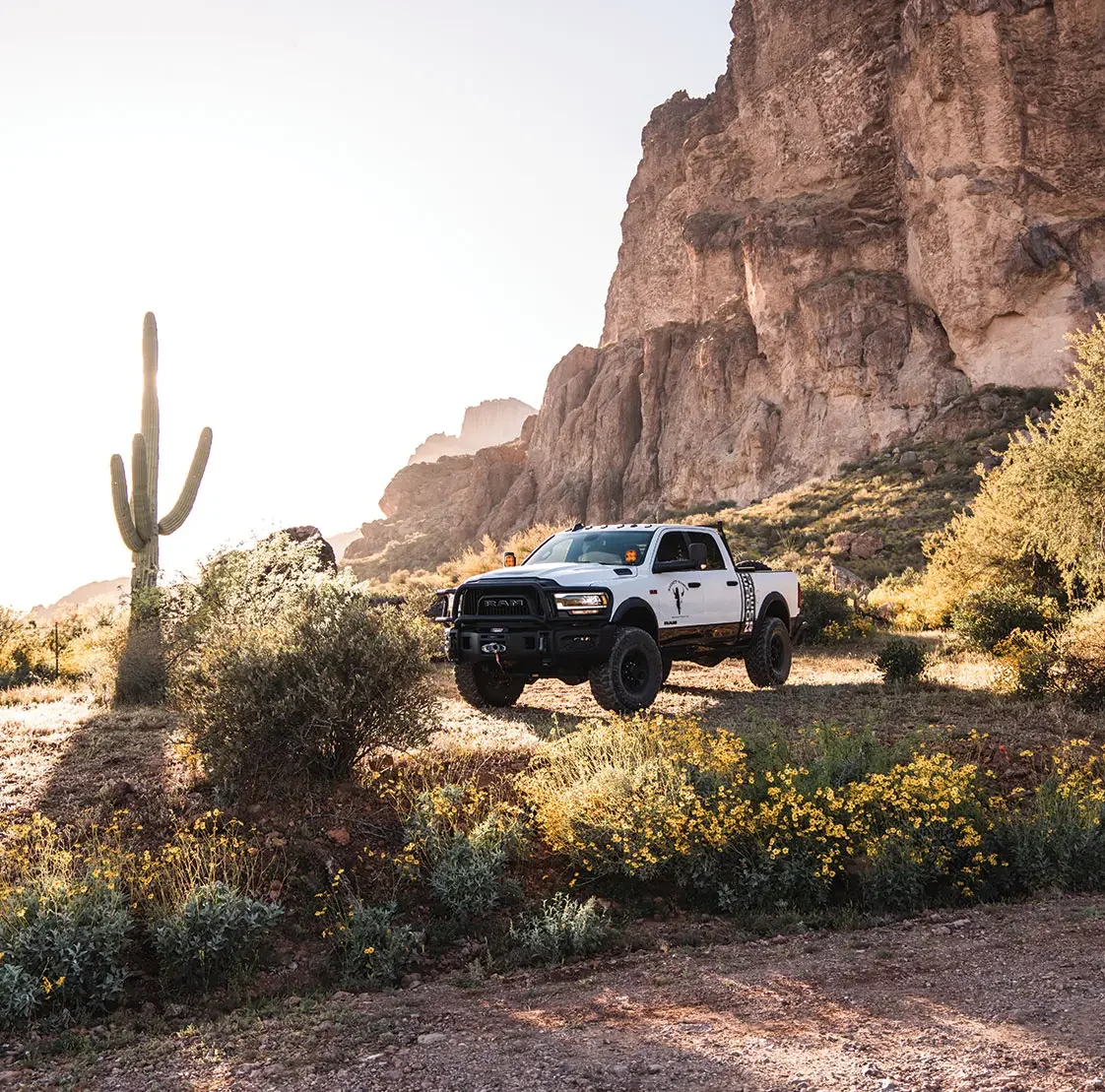
The headache rack gives the Power Wagon the ranch look, but also provides needed protection when hauling around overland gear and items for work. Sackett says, “I have been able to haul giant steel bumpers in the back of the truck that I would have definitely busted out the rear window if I didn’t have the Bed Rack back there.”
Another functional key feature Sackett likes is the varied setup for the full-size spare tire. When he’s driving around town or back and forth to the office, he opts to mount the tire in the bed of the truck using the AEV vertical tire mount in the bed of the truck. This allows him to use his backup camera and keep the truck as short as possible when in the city. He also has peace of mind that his full-size spare is with him when on quick day trips to off-road and romp the dirt trails. When it comes time for a longer trip and he needs more room in the bed of the truck, he switches over to using the Rig’d Ultraswing Hitch Carrier. Not only does it carry the full-size spare, freeing up valuable bed space, but he can attach the 1Up bike rack to bring his Super 73 e-bikes. Also, he gets an added cooking space with the drop-down table on the Ultraswing.
“All MPG concerns also were diminished as the truck gets impressive results on highway miles.”
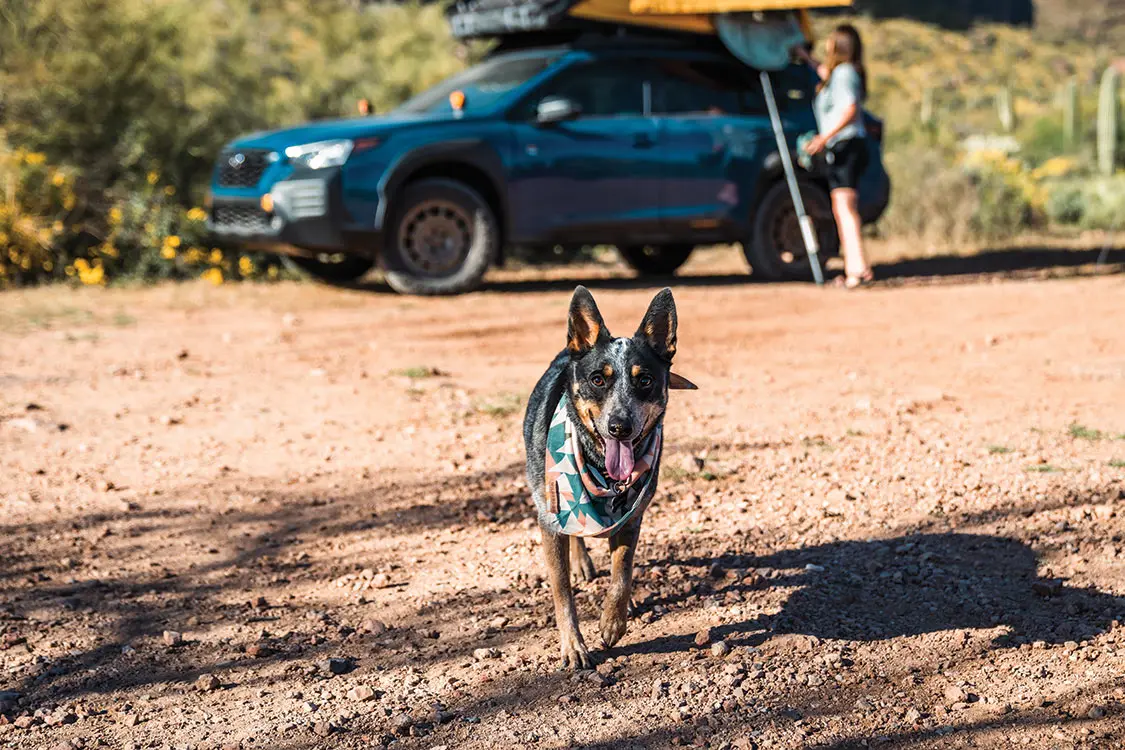
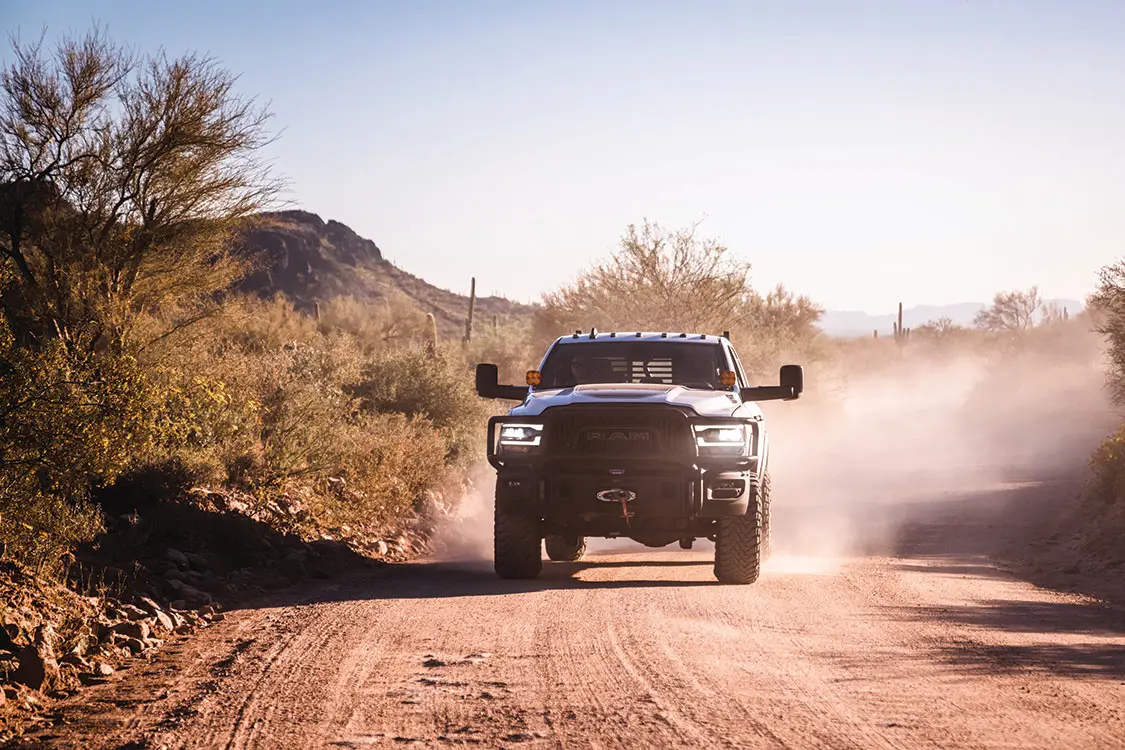
The goal with this Power Wagon build was to be a true all-around vehicle. As Sackett shares, “Sometimes it’s best not to go too hardcore one way or another. As I have learned over the years, every time you add an advantage in one category, you sacrifice in another. So, I really wanted to build something that was a balance.”
“Just like on his Jeep Wrangler JL, the Power Wagon has a disconnecting sway bar, front and rear lockers, and more. To [Sackett], it seemed like a larger version of his Jeep with more room for people and gear.”
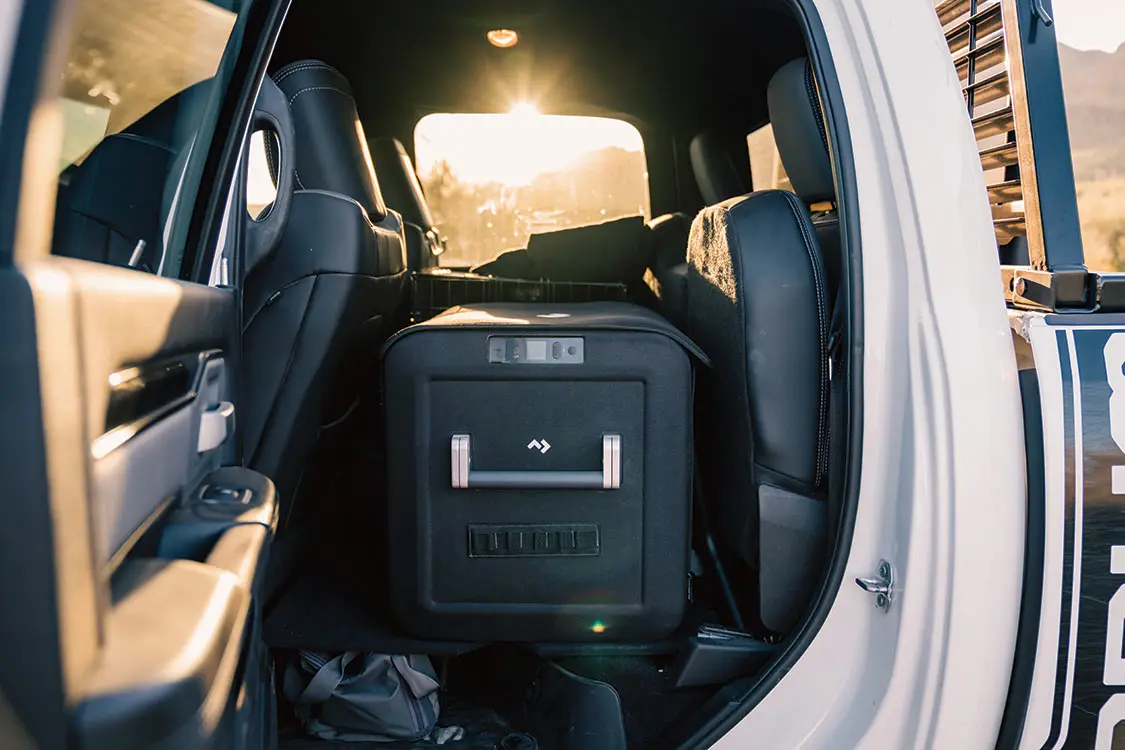
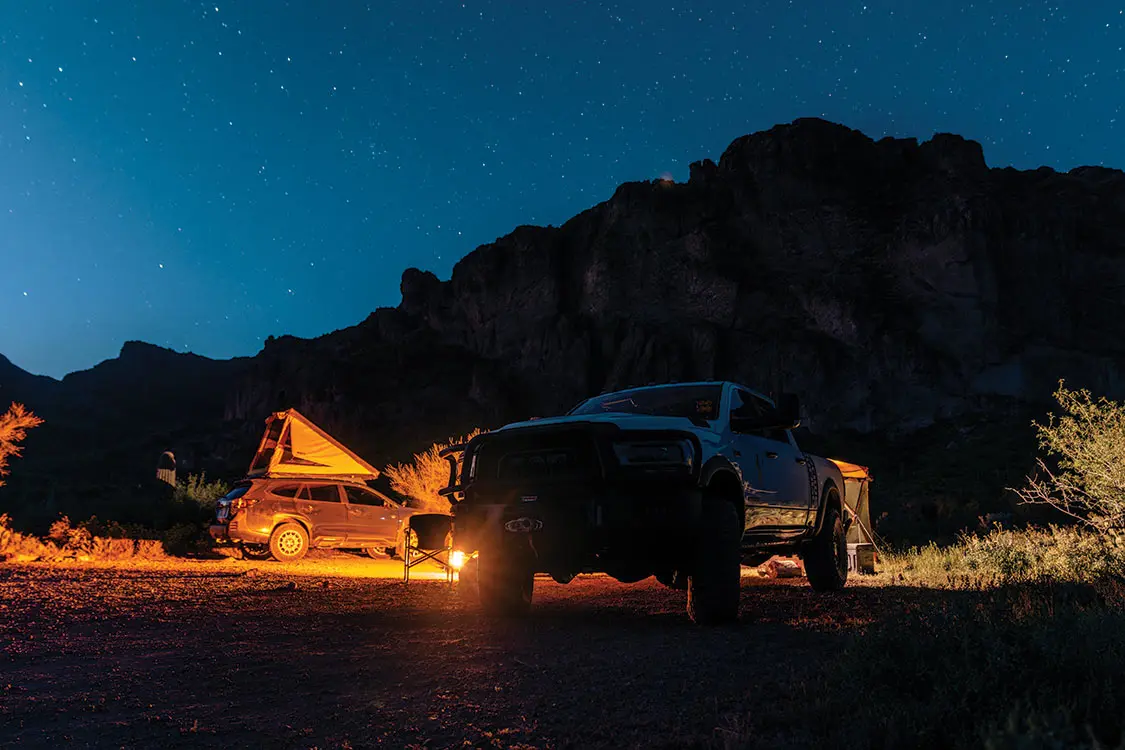
Opting to now sleep on the ground, no longer in a rooftop tent, he has a pretty luxurious glamping setup. He sleeps in a Gazelle T4 Hub Ground Tent and a Gazelle G6 Gazebo is his camp kitchen. Best part, he is able to fit all the gear in truck bed with ease.
The truck is also able to rock crawl surprisingly well enough to satisfy Sackett’s needs. Even with its stock suspension setup on Bilsteins, Sackett believes it performs better over rocks than a lot of non-Jeep SUVs and mid-size trucks. Since his AMP Research power side steps aren’t rock rails, they keep him from driving over too crazy of terrain. Mostly ample clearance allows the truck to avoid most obstacles anyway.
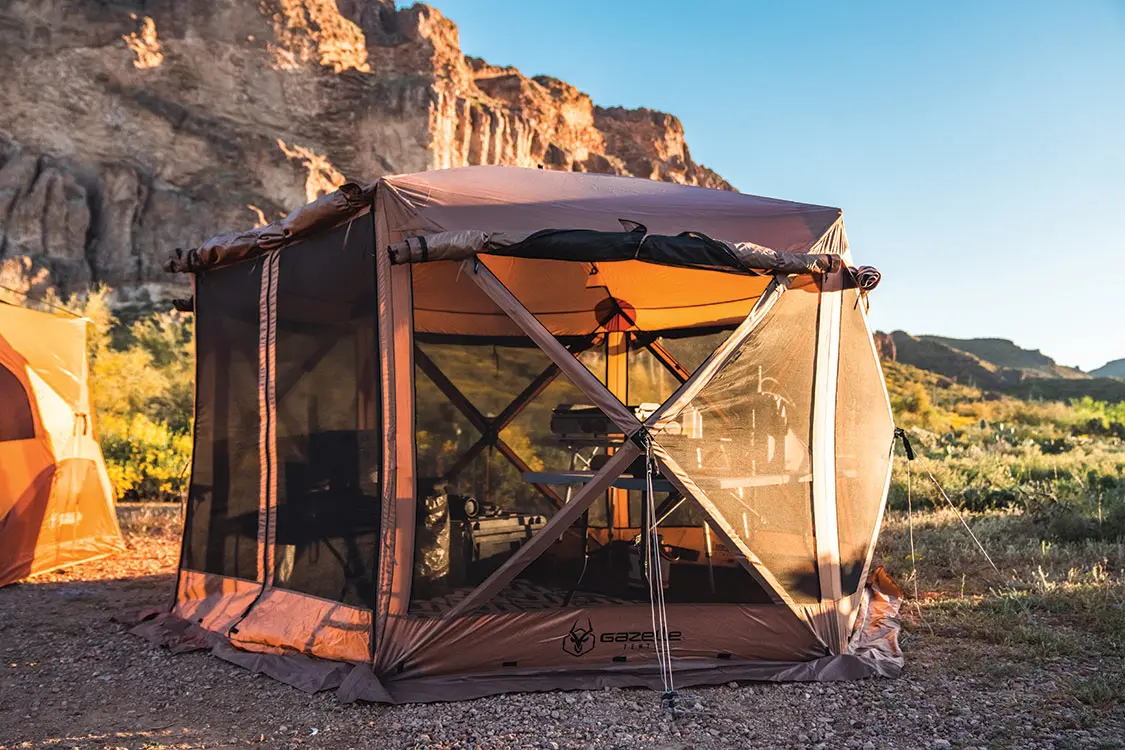
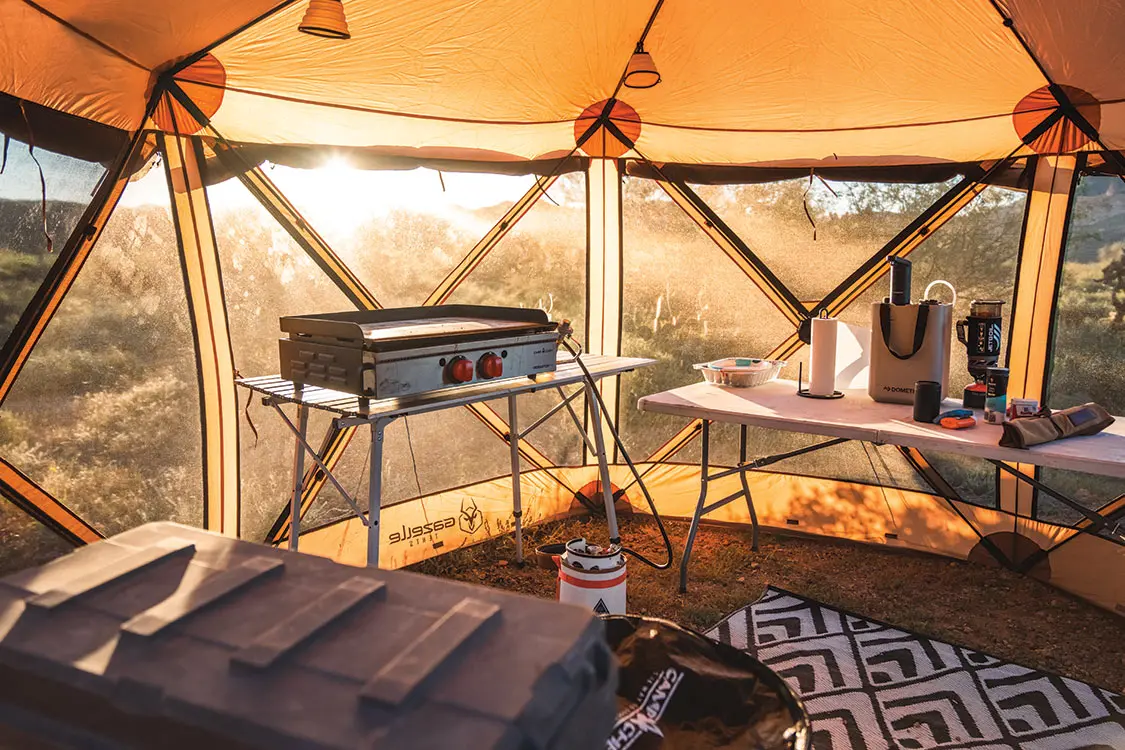
All MPG concerns also were diminished as the truck gets impressive results on highway miles. Around town, gas mileage proved similar to the JL. However, on highway miles, he can average 500 miles on a tank of gas, fully loaded with gear and it rides like a Cadillac. On the highway, his Jeep would run at high RPM, get horrible gas mileage when loaded, and would only travel about 200 miles before it needed a fill up.
And while those items would be nice, Sackett also has peace of mind to know his full-size truck can keep up with the Jeeps, proven on a trip to KOFA wildlife refuge with his girlfriend, her dad, her brother, and friends. They all drove Jeeps and Sackett drove the RAM Power Wagon 50 miles a day for 4 days between Quartzite and Yuma. While there were some tight areas and he thought the truck would get hung up due to the overall size and longer wheelbase, the truck impressed. It did not scrape skid plates, rub fender liners, hit on approach or departure angles whatsoever. As we know, it could also be the driver. Nonetheless, he could not have picked a more beautiful location with lots of interesting places to stop along the way to test the capability and comfort of his truck.
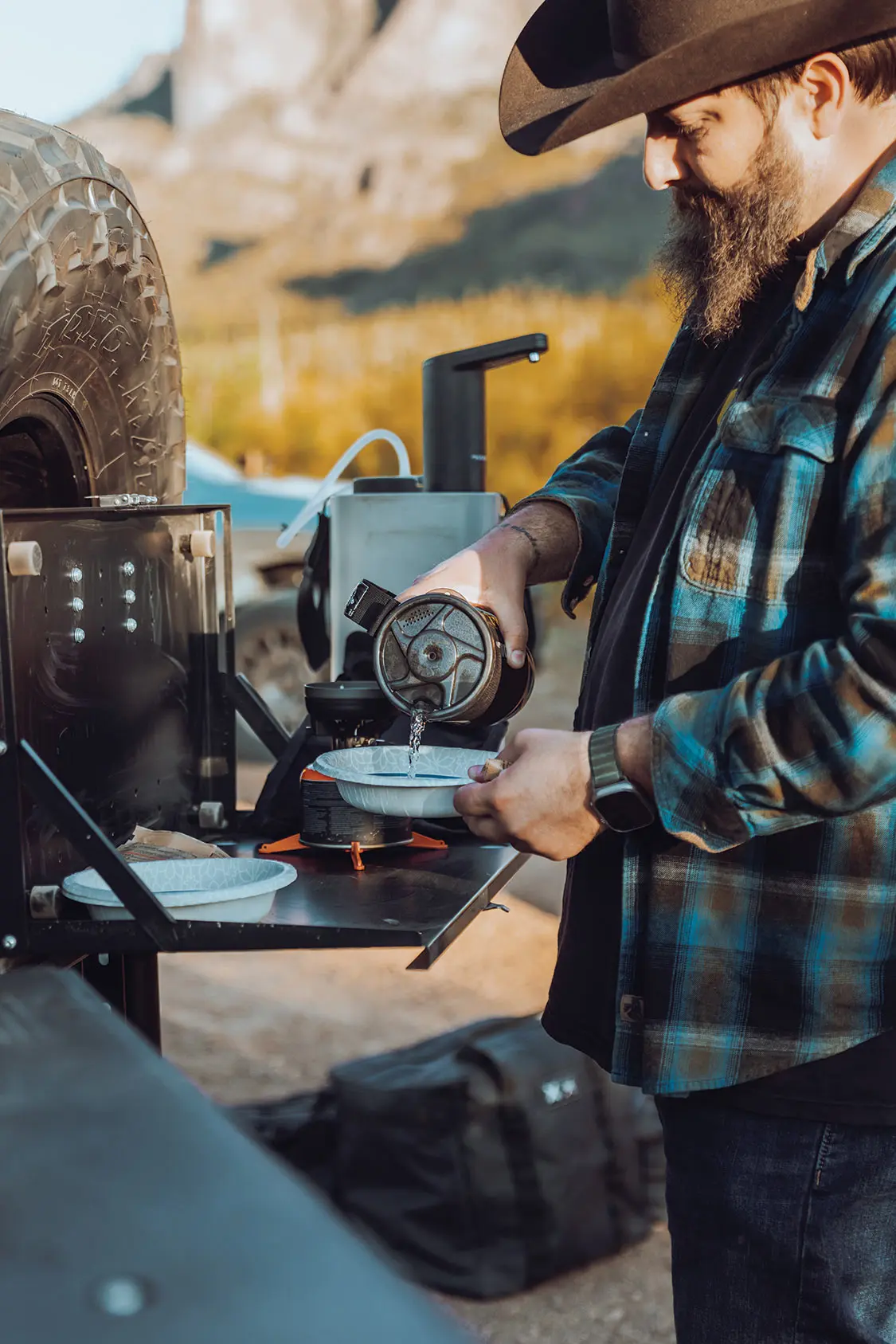
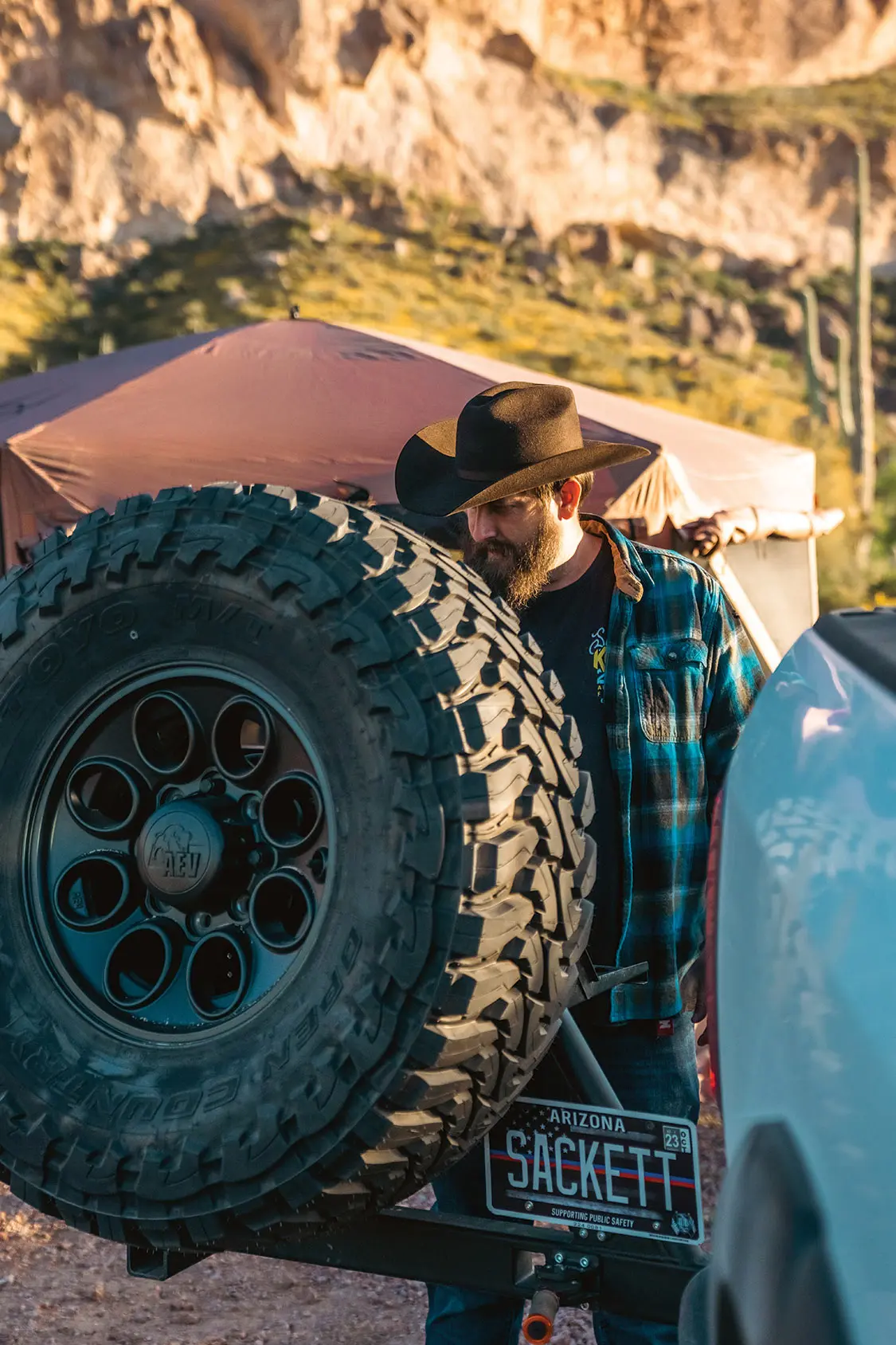
We look forward to seeing the future of this truck and possible additions to the build. Next steps are an AEV suspension upgrade for more height and durability, although the OEM Bilstein suspension is impressive. The other item Sackett wants to add is an AEV snorkel, since he lives in the desert with lots of dust and wants to pull cleaner air.
To see more from this AEV RAM Power Wagon, follow @sackett.ranch on Instagram.
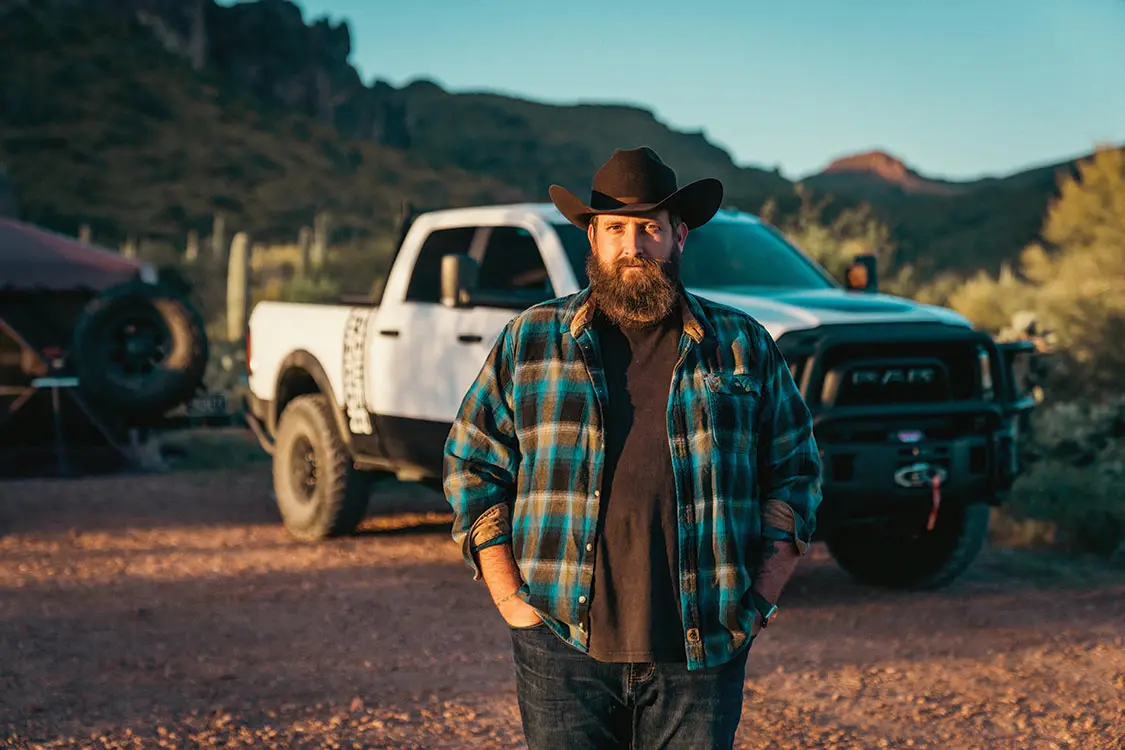
2022 RAM Power Wagon
Engine: 6.4L Hemi V8
Wheels & Tires: AEV Katla 17×8.5 with +27mm offset (front and rear); Toyo Tires Open Country M/Ts size 37×13.5R17LT
Suspension: OEM Bilstein shocks
Armor: AEV Front Bumper, Rear Bumper, front Brush Guard; Bed Rack Headache Rack
Exterior Accessories: AEV Vertical Tire Mount; MOPAR Retro Vertical Slotted Grille; KC HiLites Flex Era 4 w/ Amber covers; SDHQ mounts; WARN Zeon 12-S winch; RAM Rugged Cases 95L, 52L, 105L in truck bed;
Interior Accessories: Vertx VTAC Storage Cubes; Dometic CFX3 55IM Electric Fridge, water jug, electric faucet; Rugged Radios GMRS radio; Goal Zero Yeti 400 Lithium battery; Ignik Growler + Firecan; Camp Chef Versatop 2x
Editor’s Note: A version of this article appeared in TREAD July/August 2023.
The Dodge Charger Daytona SRT Concept teases the production of electric muscle car coming in 2024 amid promises it will beat all the performance metrics Dodge has laid down to date.
Yes, the Dodge Charger Daytona SRT is powered by batteries and electric motors, but air still swooshes through chambers and pipes for a rumble very similar to the roar of a Hemi Hellcat V-8 in today’s Dodge Chargers and Challengers. This sports the industry’s first exhaust system for an electric vehicle, producing a similar 126-decibel sound as the one coming from today’s Hellcat engine.
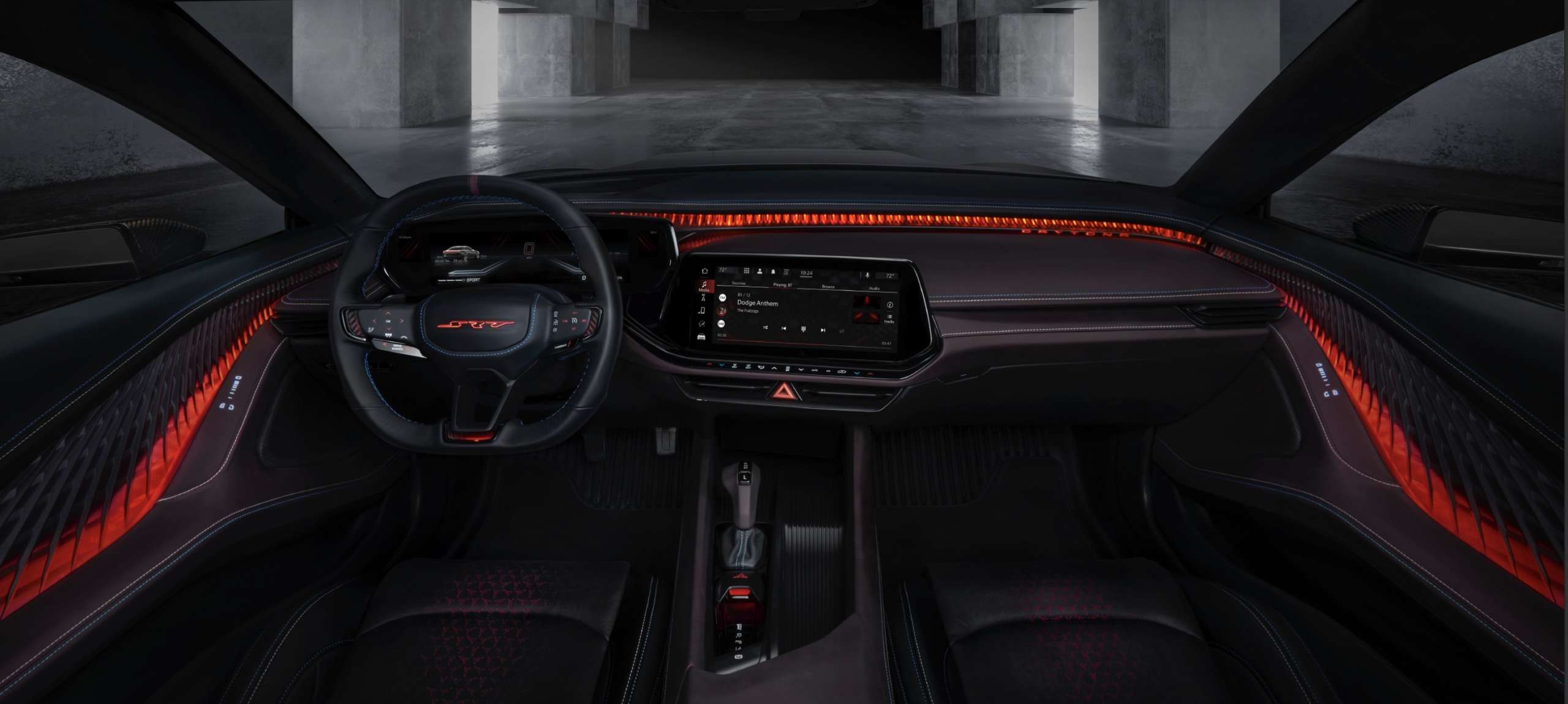
Dodge calls it “Fratzonic Chambered Exhaust.” When the Daytona converts electricity to power, air flows through the exhaust system and the sound produced through an amplifier and tuning chamber at the vehicle’s rear. You can see and feel the pressure from the exhaust coming out the back!
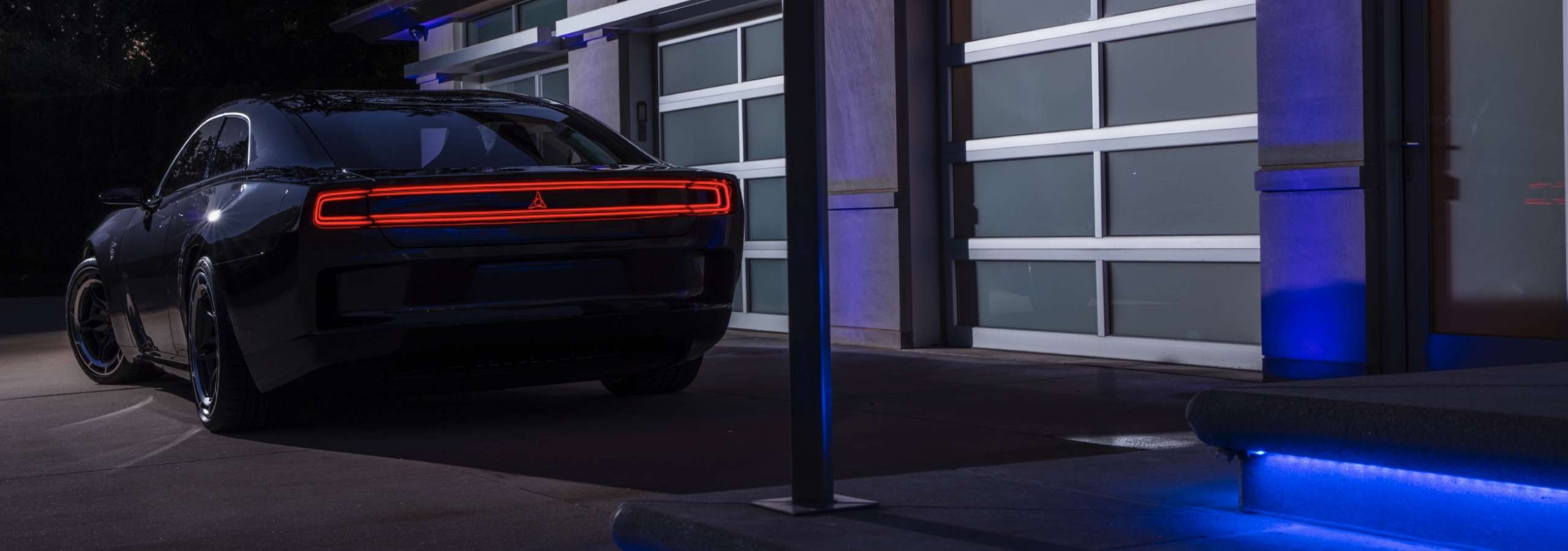
The Dodge Charger Daytona SRT Concept is designed to impress and appease its loyal customer base, many of whom are fundamentally opposed to EVs and all they stand for.
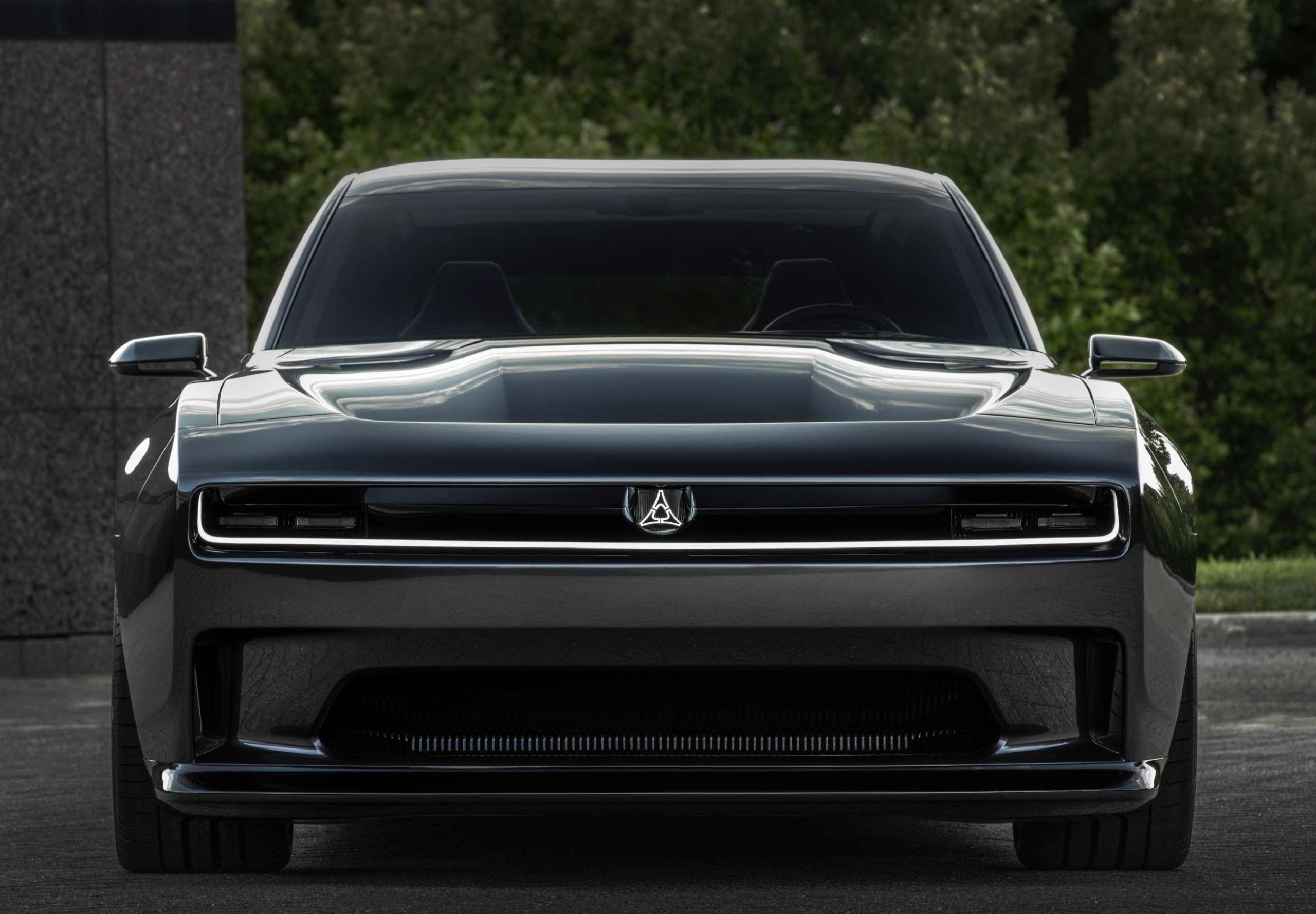
So, Dodge created an e-muscle car that looks mean and roars as loud as the Hellcats with supercharged Hemi V-8s that it will replace. “We believe we need the sound and experience,” says Kuniskis. That is why the car has a multispeed transmission and an exhaust note, so the driver can feel and hear the crack of the exhaust while shifting.
The concept, in Greys of Thunder dark glossy paint, has a clean design right down to the flush door handles and the absence of a rear spoiler. It is muscle without being a caricature, bold yet subtle. Head of Dodge Exterior Design Scott Krugger says his team started by designing a muscle car, not an EV, with a signature face, swept profile, and turbine-style 21-inch wheels.
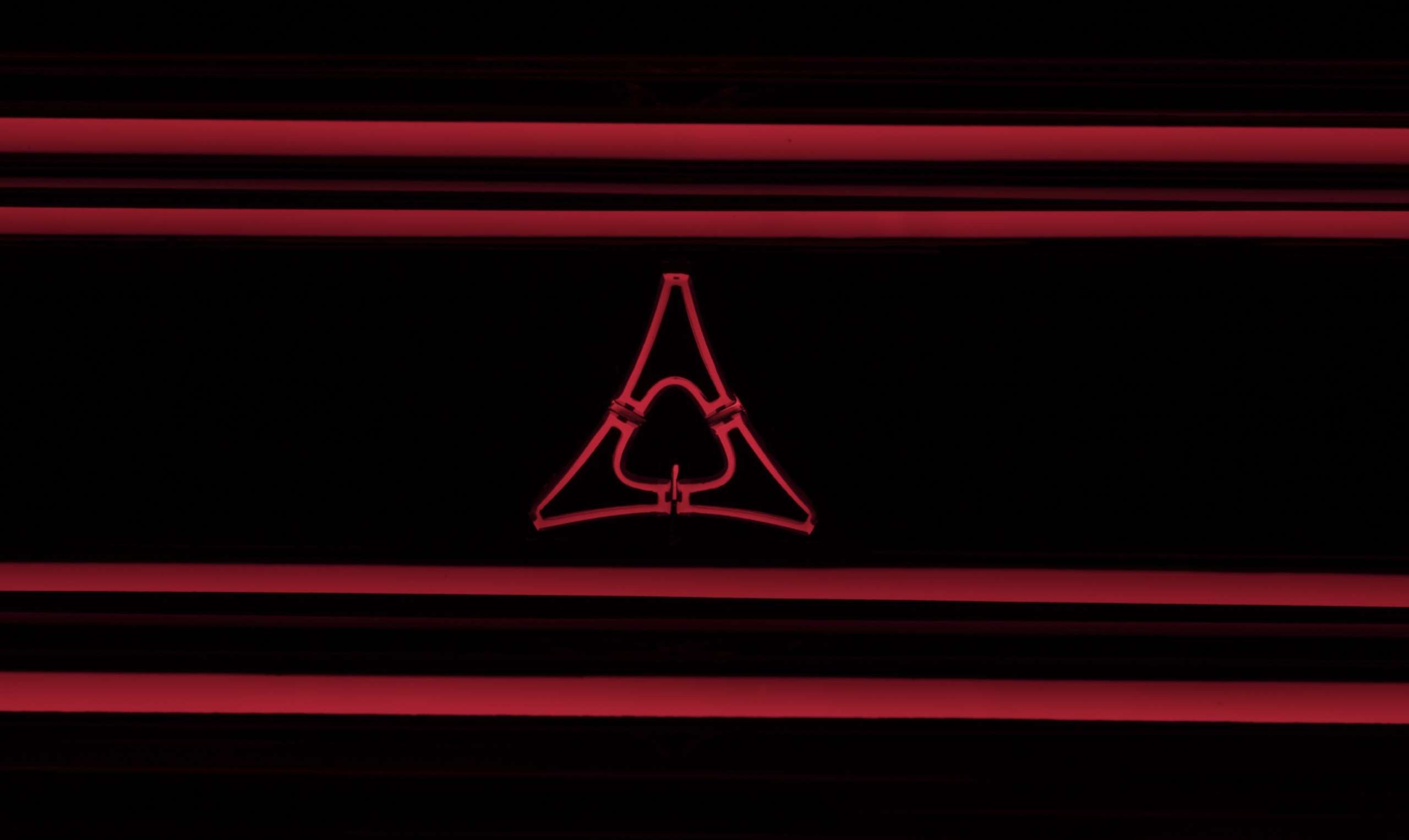
It is also pure EV without a melted front for aerodynamics. Instead, true to the Daytona name, it has a nose cone, a patented R-Wing that allows air to pass through the front of the hood and enhance downforce while keeping a blunt Dodge profile that all but hides the headlights. There are carbon fibre intakes on both sides of the front and rear fascias for an air curtain to further improve aerodynamics. The front end is patented, as is the sound, which means these are intended for production.
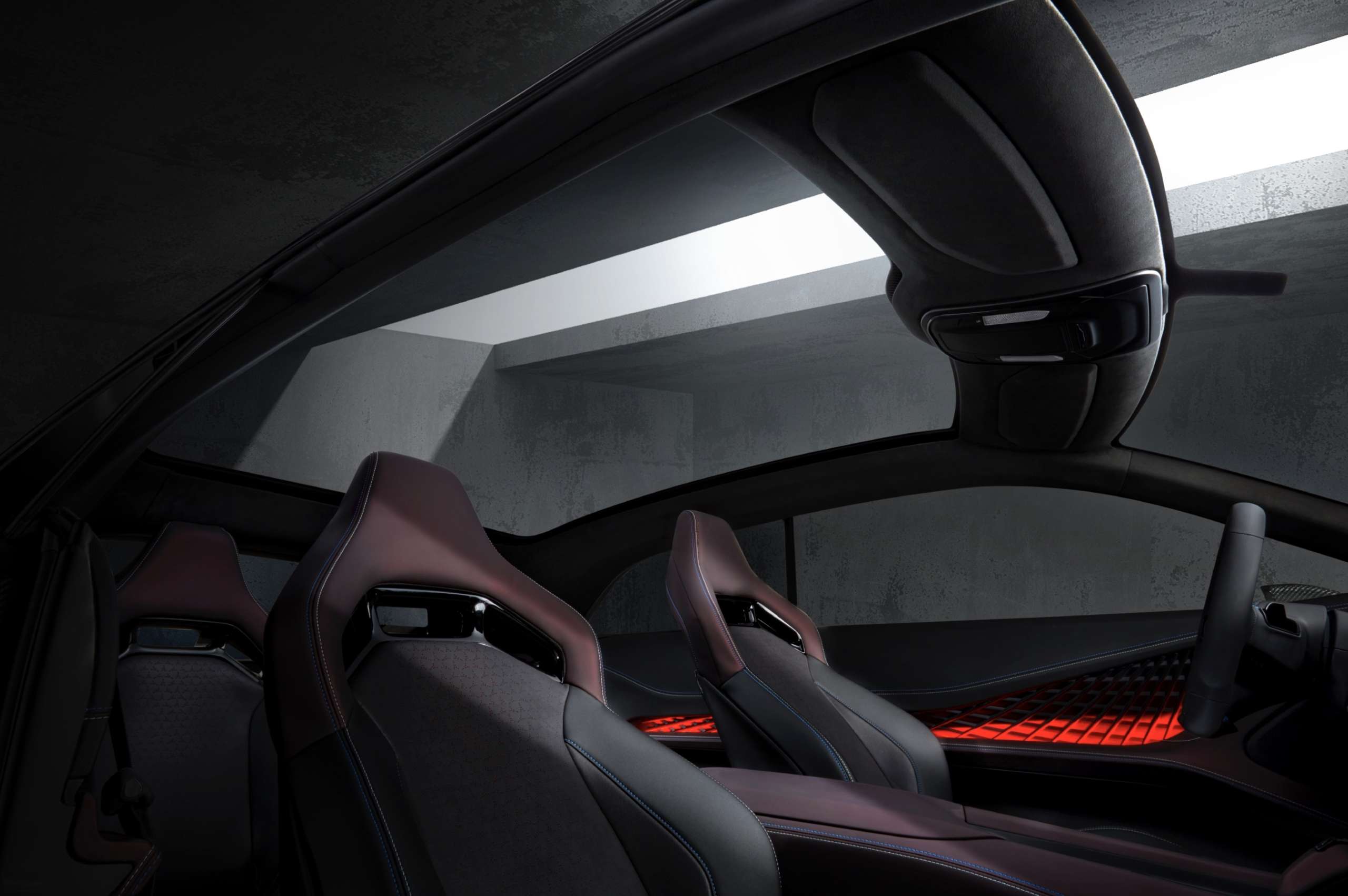
Dodge is not revealing full specs and details yet, but we do know the high-performance SRT trim will be powered by a new 800-volt Banshee propulsion system. Lower trim models will have a 400-volt system.
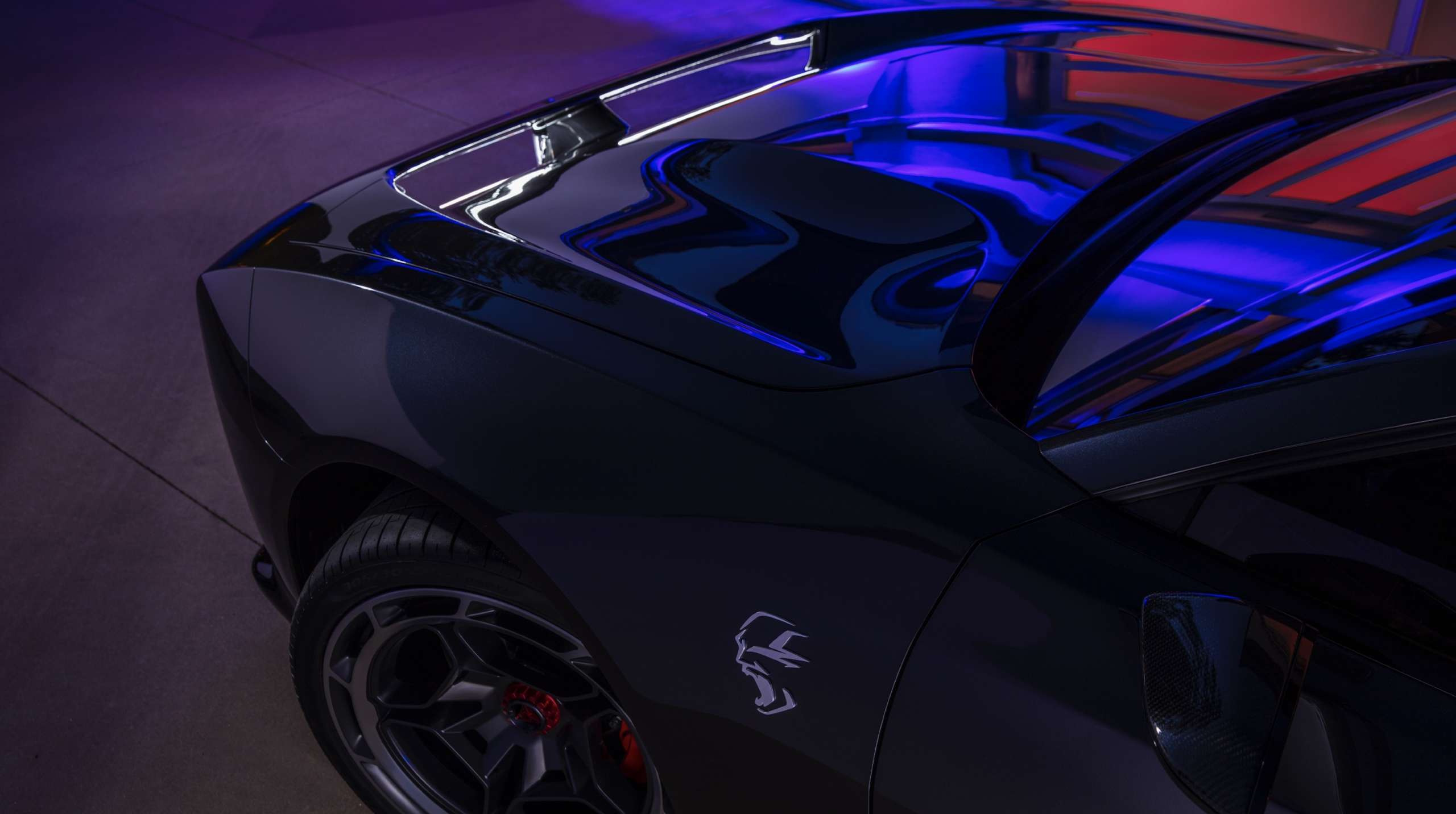
The concept has standard all-wheel drive, so we know there are at least two motors, one up front and one in the back. AWD is also key to making the Daytona SRT quicker than the Hellcats that precede it, Dodge executives say. The Daytona Banshee has a multi-speed transmission with electro-mechanical shifting. Dubbed eRupt, the transmission does not deliver more power but allows the driver to feel each shift point, Kuniskis says.
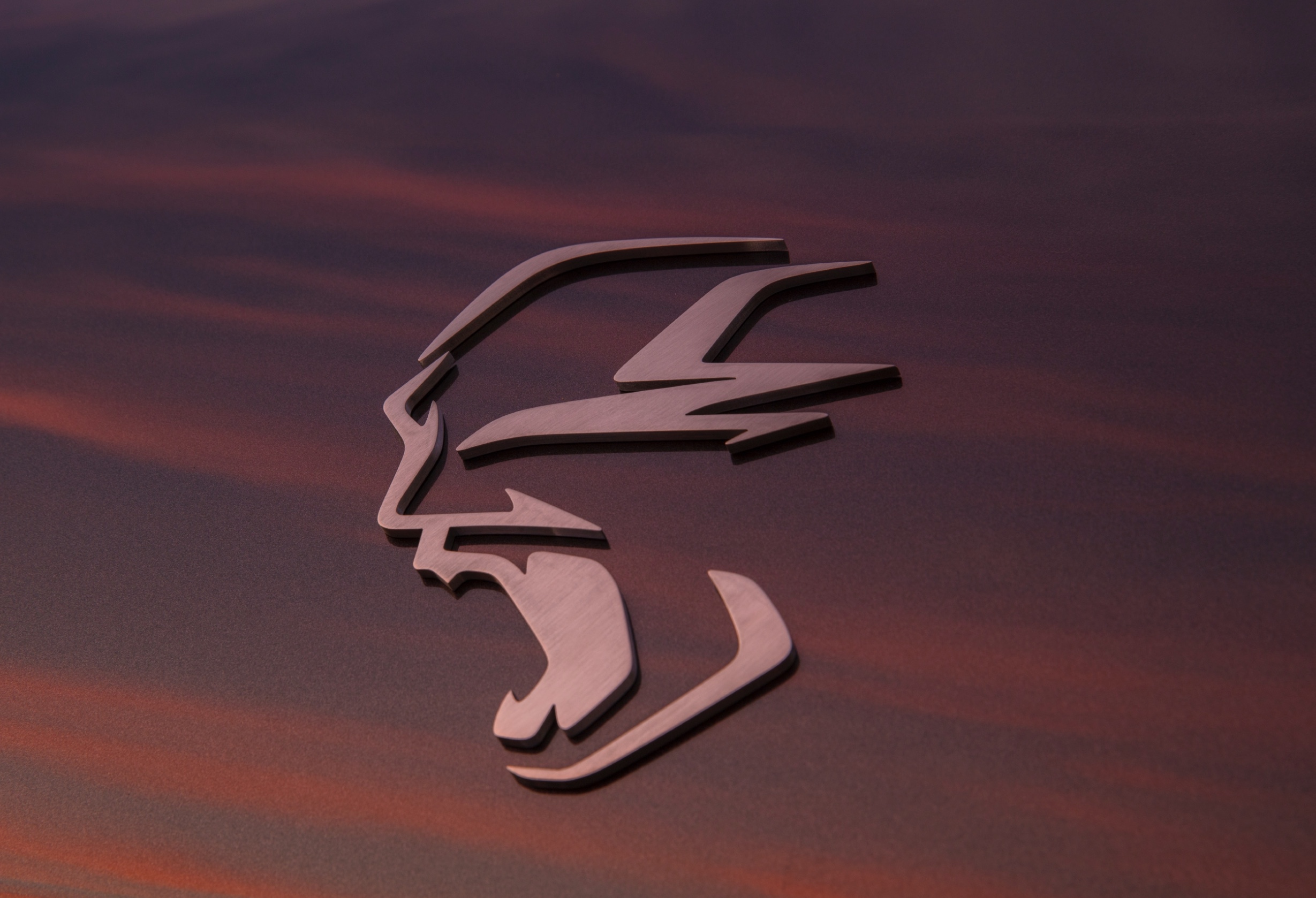
The brand chief won’t reveal the number of gears or provide any performance figures yet. What we do know is there will be three power levels available, and customers can go to Direct Connection authorized dealers who will offer six more levels, all covered under factory warranty. All nine power levels were designed in advance, with the hardware in place for additional upgrades at the time of purchase or later.
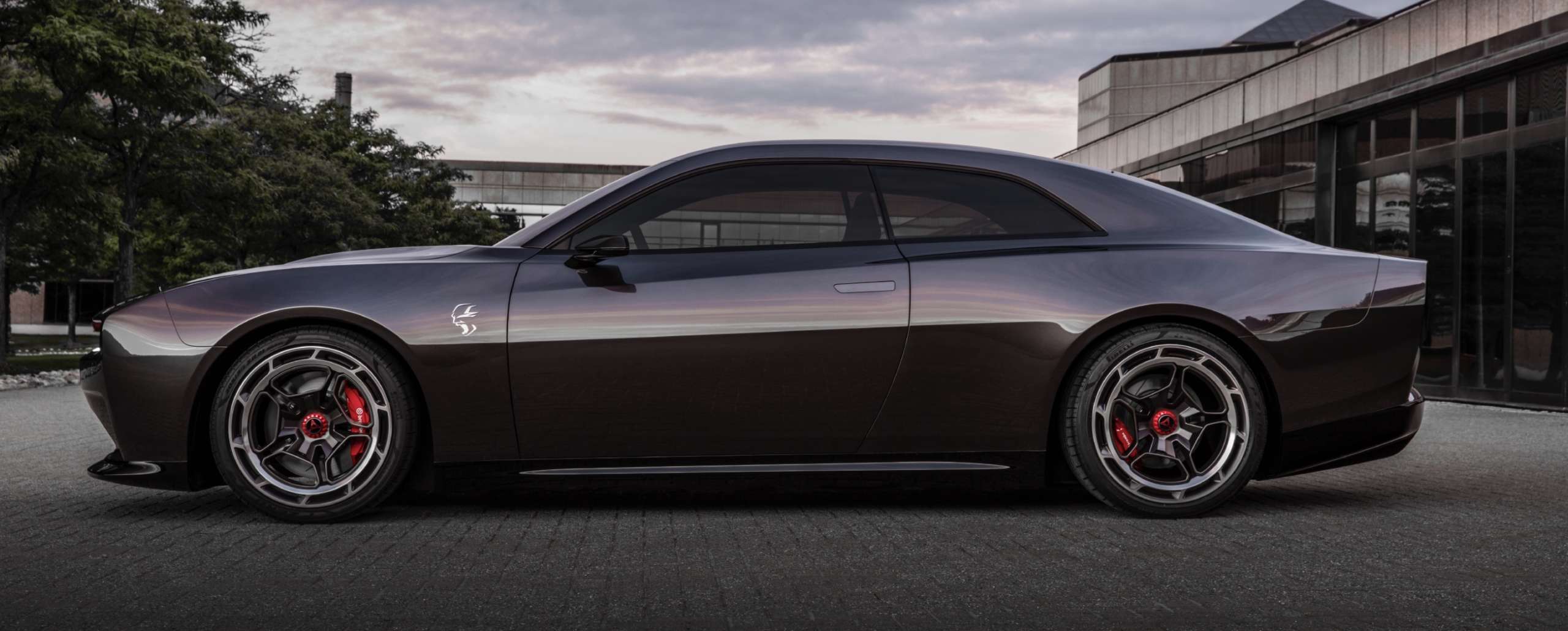
Dodge promised it would be true to its muscle car roots when it embraced the electric car age, starting in 2024. The Dodge Charger Daytona SRT Concept, which looks production ready and has patents on its key features, appears to keep that promise.
Source: motortrend and Stellantis
Super Bee. The name alone makes folks smile. By 1970, the muscle car wars were being fought by nearly every brand from Ford, General Motors, and Chrysler. Even American Motors had gotten into the fray. The major battles were waged at the racetracks with the sole purpose of putting “recruits to their brands” in production. It was all about cars on the streets and getting consumers to pledge their loyalties in dealer showrooms. Back then, those recruits would not even cross company lines; the Bowtie brigade did not go to Pontiac, the Ford faithful did not consider Mercury, even though at one time it had a Marauder model.
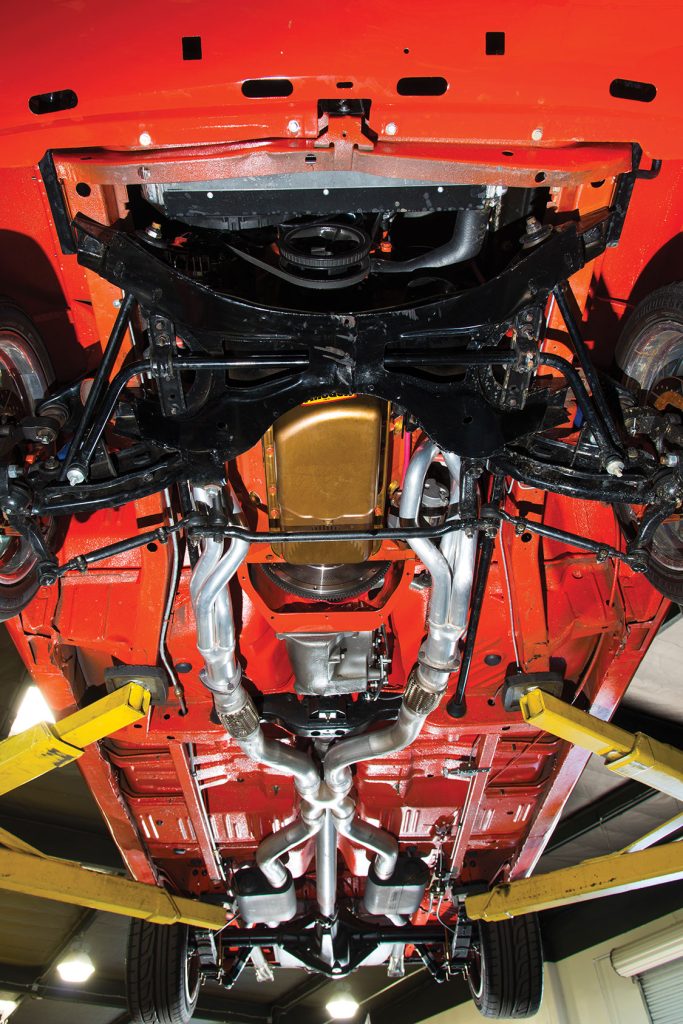
The same applied to the militant Mopar fanatics. When Plymouth created the low-option, low-cost, entry-level (yet muscular) Road Runner on the B-body chassis in 1968, the Dodge boys commissioned a similar model and simply called it a Super Bee. Both models were a brilliant marketing move; muscle in the purest form, the answer to the question of “how much?” be it an inquiry for horsepower or for purchase price. The answer made consumers smile, pull out their wallets and buy. Some called the Super Bee, with the Dodge Scat Pack image and rear bumble bee stripe and its Plymouth cartoon cousin, a Spartan performance coupe. To others it was a low-priced “strippo,” with a bench seat, very little trim and a high horsepower 383-ci engine backed by a choice of a stout manual or a bulletproof automatic transmission. Either combination could transfer massive power to the Sure-Grip rearend fitted with tiny 10-inch drum brakes. Dodge management just cleverly marketed it as entry-level performance.
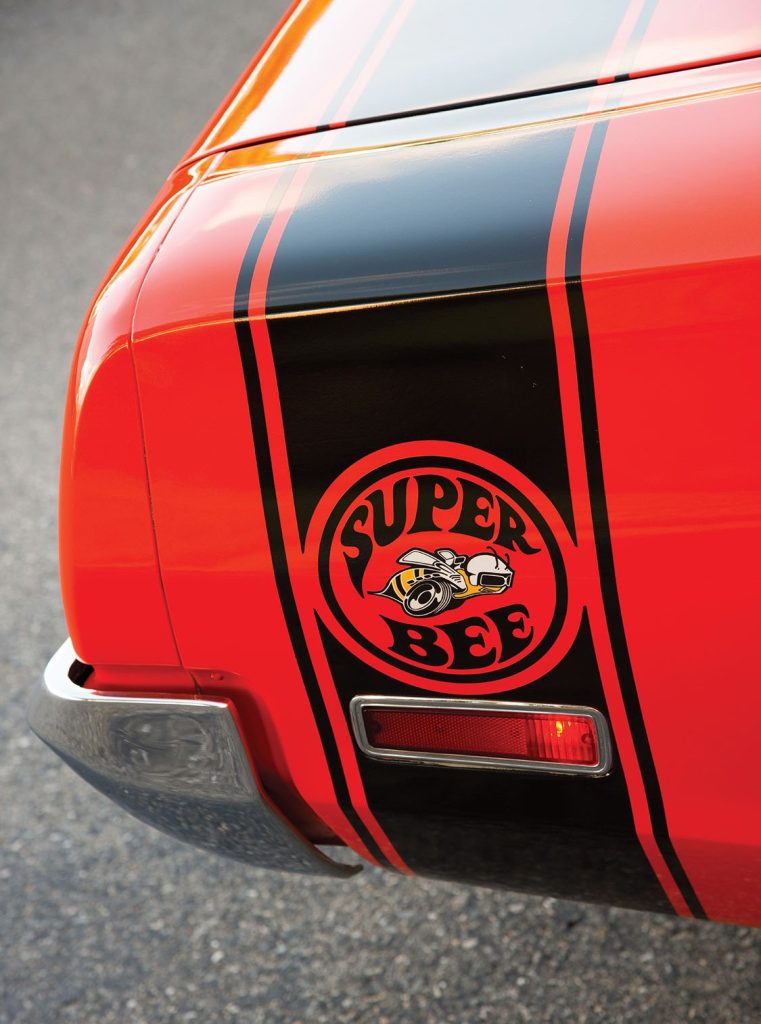
Since OEMs are more concerned about capturing profit margins, they quickly started offering countless options to increase the exterior and interior styling as well as add additional power under the hood. Soon one could check enough order boxes to make a standard 383 Super Bee as sexy and as comfortable as the upscale, deluxe-trimmed, 440-powered Coronet R/T. By 1970, the last year of this Dodge body style, the cross-pollination was so complete that either a Super Bee or an R/T could be optioned with a 440 Six-Pack and all of the aesthetic trimmings. Yes, the 426 Street Hemi was an option for either, too, but that is a whole other story.
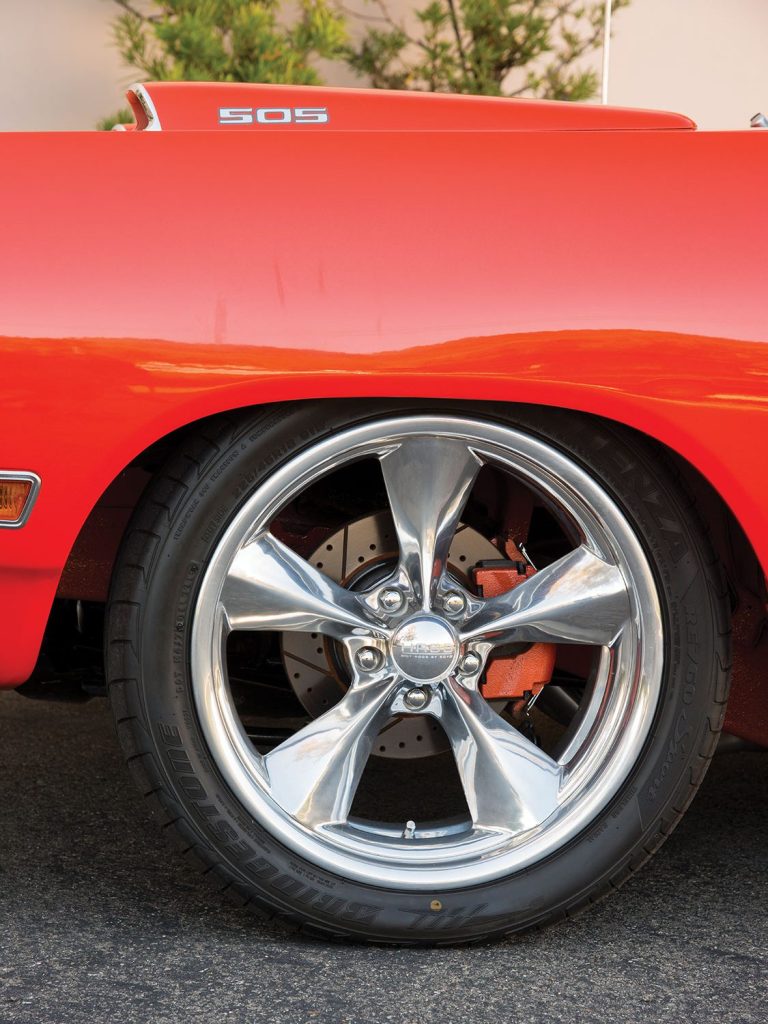
Which brings us to this stunning ’70 Super Bee. The decoded data plate indicated that it was built in Chrysler’s Los Angeles production plant. It was born Bright Blue Metallic (B3) pillar coupe with a 383-engine and a manual transmission. It was one of only 3,966 produced that model year. This body style was an exclusive holdover since the 1968 origin of B-bodies, with the pillar creating the ability for the rear quarter-windows to open by hinging outward rather than rolling down for the backseat passengers.
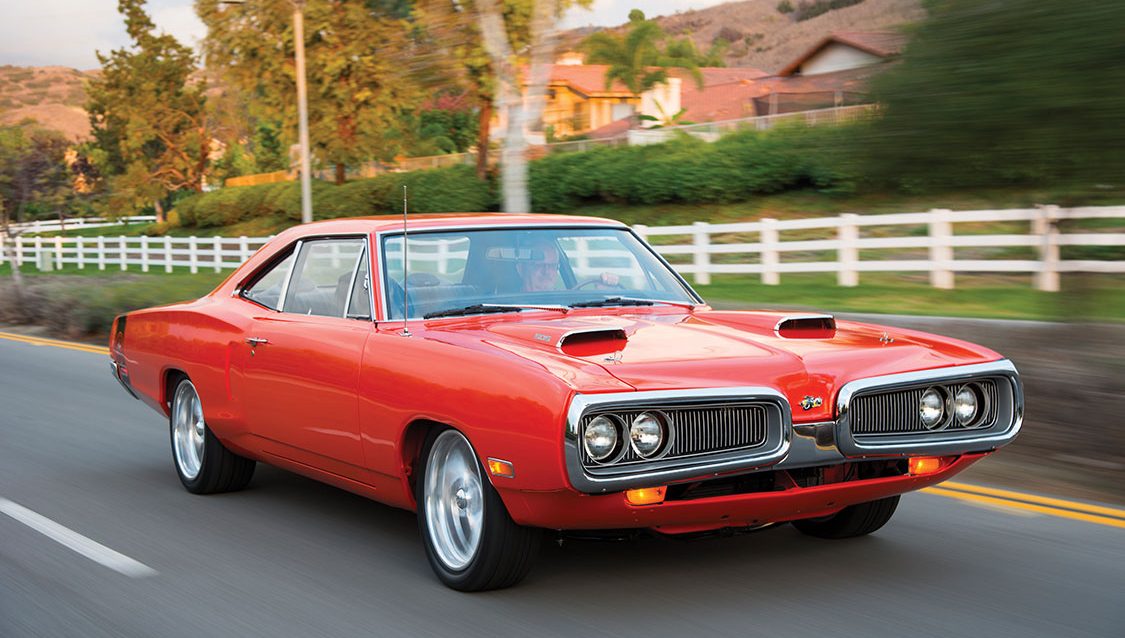
1970 was a year of firsts and lasts for the Super Bee. It was the last of this body style with the Coke bottle shape, the doors appear to be slightly pinched or tucked-in when looking down the horizontal shape, ending with those beautifully curved, wider quarter panels. This led to big rear wheel openings that better exposed the wider wheels and tires. It was a first in the respect that it had a distinctive one-year-only, chromed split front grille (the Dodge marketing guys referred to the dual ovoid style as shaped like bumble bee wings). It was also the last Super Bee to offer functional Ramcharger cold air intake scoops on the hood, though they looked like an afterthought. The longer, lower, almost fastback body style was set on a 117-inch wheelbase chassis (GM muscle car models were 112 inches). This was also the last year for this setup, and it was the final year that Dodge supplied horsepower ratings, because the new SAE horsepower ratings for all vehicles went into effect in 1971. This forced many OEMs to rethink and/or change the compression ratios beginning in 1971; thus, marked the beginning of the end for attractive, high-performance, desirability at the new car showrooms.
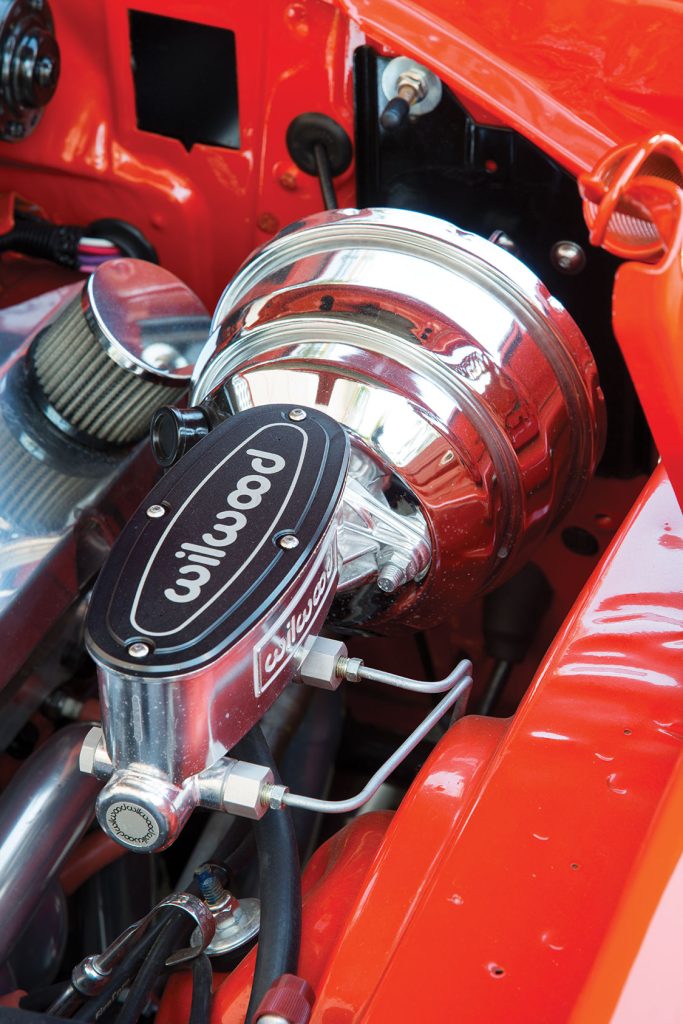
This particular Dodge was attractive to Dale Bracken of California Supersports Auto in San Juan Capistrano. Once he saw the muscle machine for the first time, he immediately wanted it for his private collection. “I had a Buick 400 GS convertible that I liked, but I traded the Buick and a bushel of cash for this Super Bee.” The full photo documentation of the resto-mod is a cool book to review. It had been stripped down to bare metal and all components were reworked or replaced. The blue exterior was changed to V2 Hemi Orange, a fitting and stunning color on this body style.
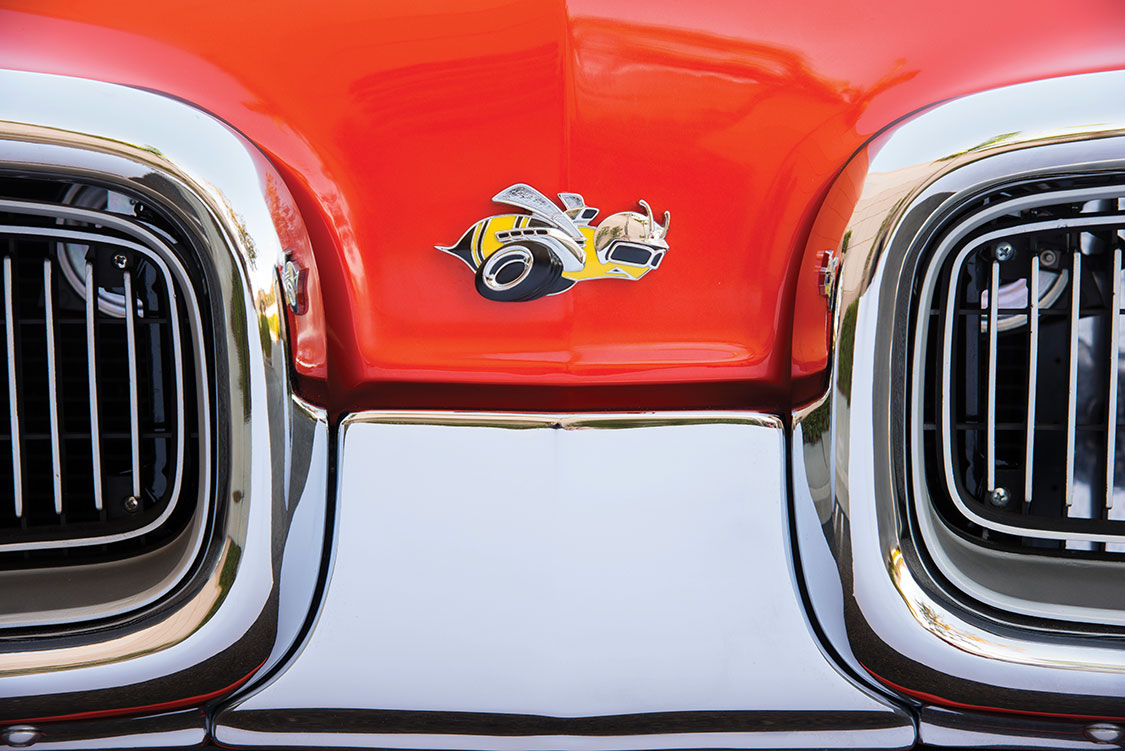
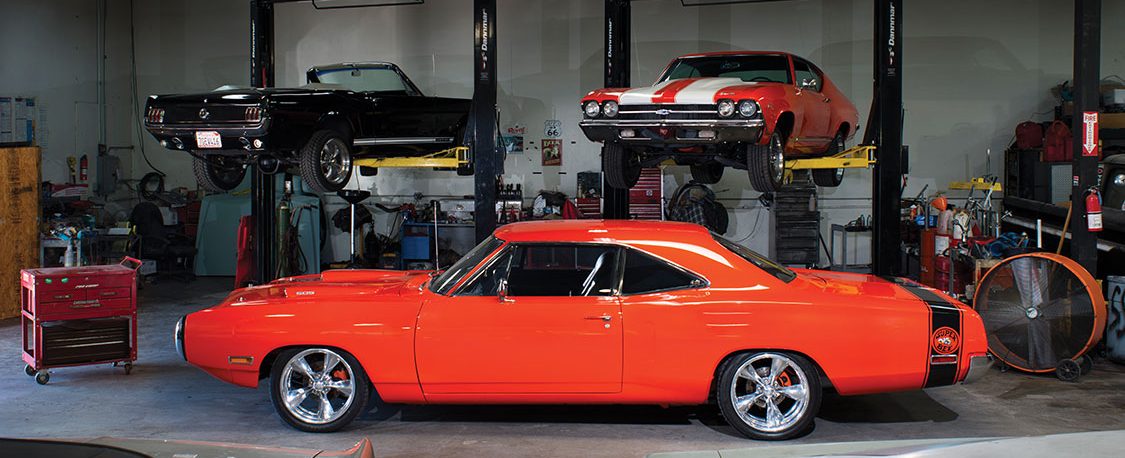
The 383 engine was jettisoned for a more impressive power package; it’s now a 1970 440 Six Pack—on the outside. Internally, the build sheet from Indio Motor Machine reads like a performance digest. The stroker crankshaft kit pushed the cubes to 505 that now has 9.8:1 compression pistons and many quality internal components, along with ceramic-coated headers (and exhaust system) and a serpentine drive pulley system. A factory Six Pack air cleaner that hides three large two-barrel carburetors tops the engine. This large oval air cleaner can be provided with outside fresh air by a very elaborate system attached to the underside of the hood. All combine to reveal dyno sheet readings of 517 hp (at 5,000 rpm) and torque of 588 ft-lbs at 4,000. This Super Bee has some extraordinary sting! “Even at 3,700 pounds, this stick car pulls hard,” Dave exclaimed. The Dana 60 rearend with 4.10 gears fitted with 35-spline axles and a Power Lock Posi unit influence the performance equation and seat-of-the-pants sensation.
This Super Bee has some extraordinary sting!“Even at 3,700 pounds, this stick car pulls hard,” Dale exclaimed.
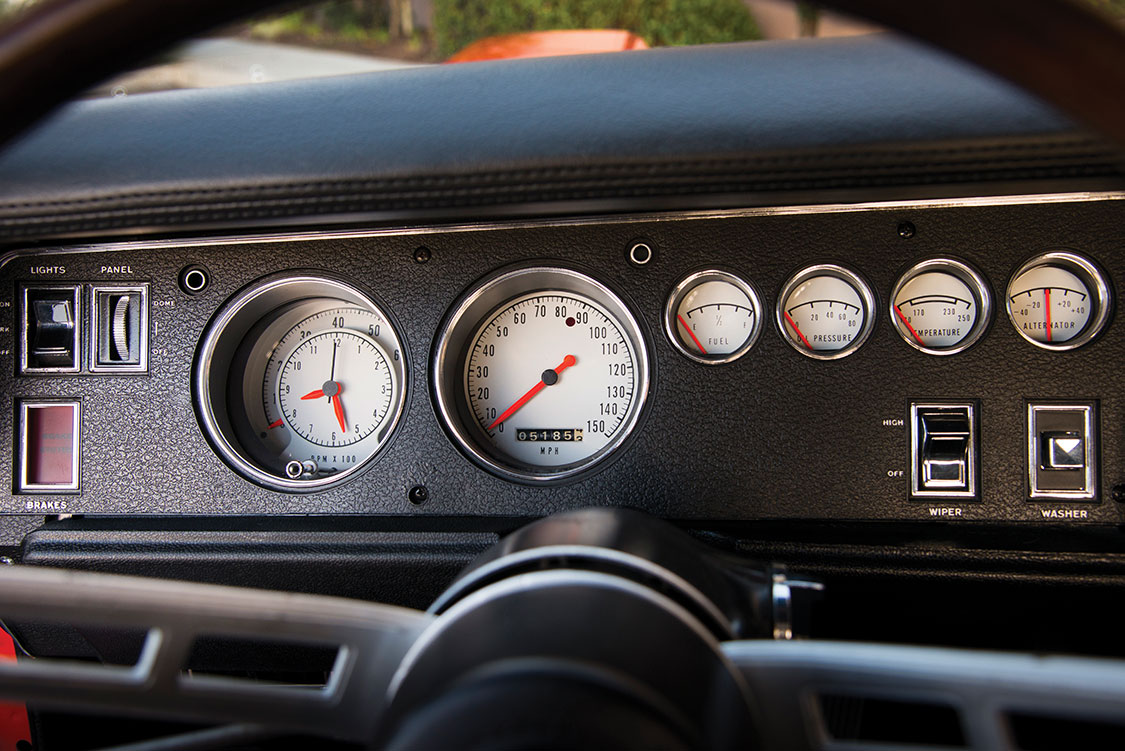
Roadworthiness is improved with a fully rebuilt suspension, all powder coated. Huge road wheels are fitted with 225 45 R 18s in the front, with 255 40 R 18 tires in the rear. While considered a midsize by Dodge for the era, it’s a big car, so the wheel-tire combination doesn’t really look oversize, and it fits well in the wheel openings.
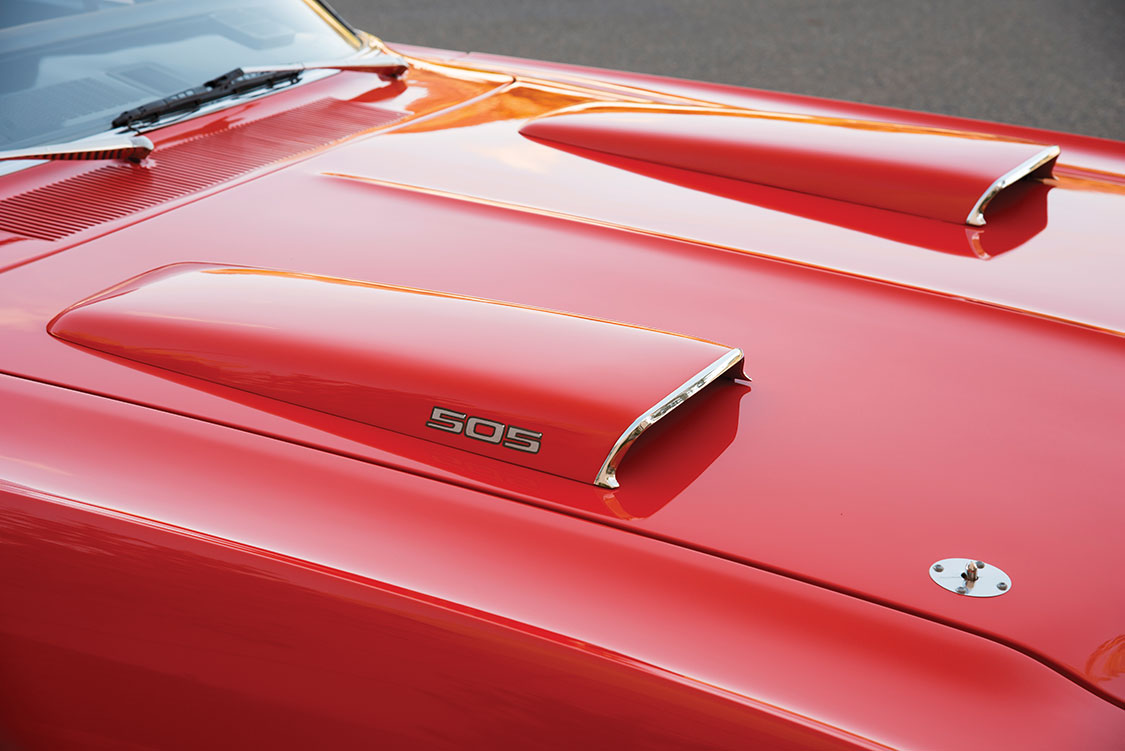
Looking into the interior reveals a cockpit that appears to be 1970 all over again. It’s a refreshing view; the stock steering wheel is still stylish, the stock dashboard with all of the multiple small diameter gauges looks sporting. Dodge subscribed to the Mopar attitude that went out of the way to capture attention for its manual transmission cars by featuring a tall Hurst shifter with a pistol grip handle; this one still has it.
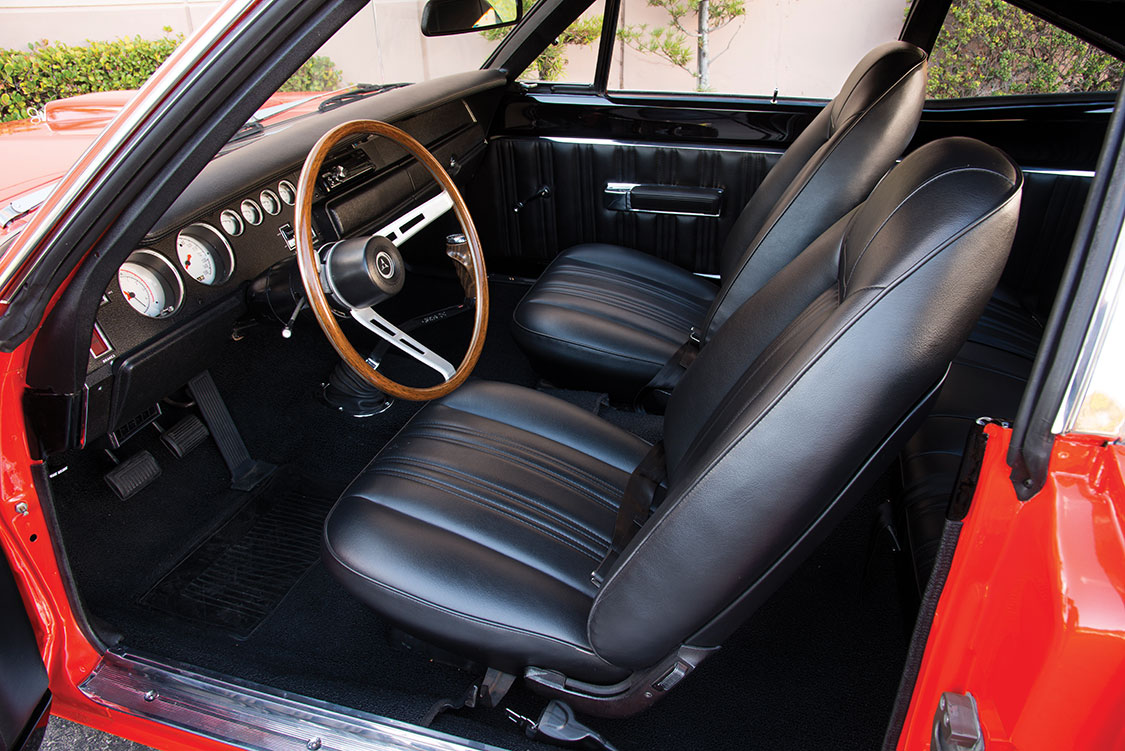
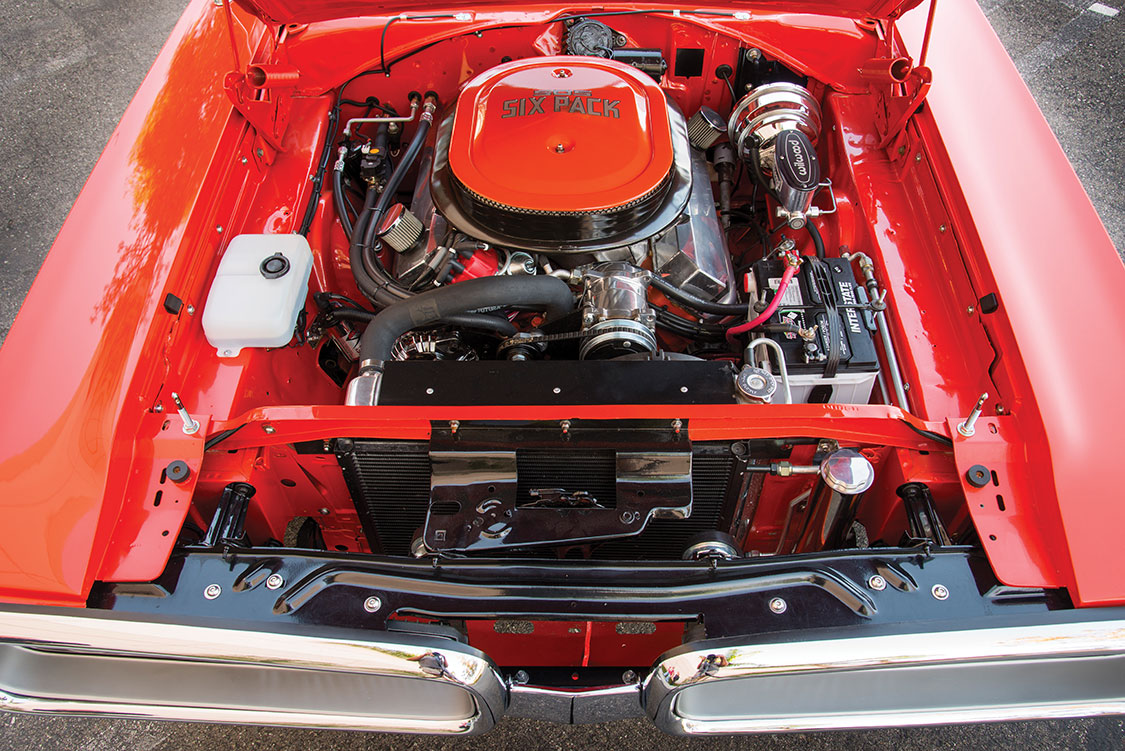
Commercials seen today for a GM brand ask: “Wouldn’t you rather have a Buick?” Dale Bracken said no, and we all should “Super Bee” glad that he did.
By Lou Leto
Photos by Guy Spangenberg
A version of this article first appeared in the January 2016 print issue of Drive Magazine.